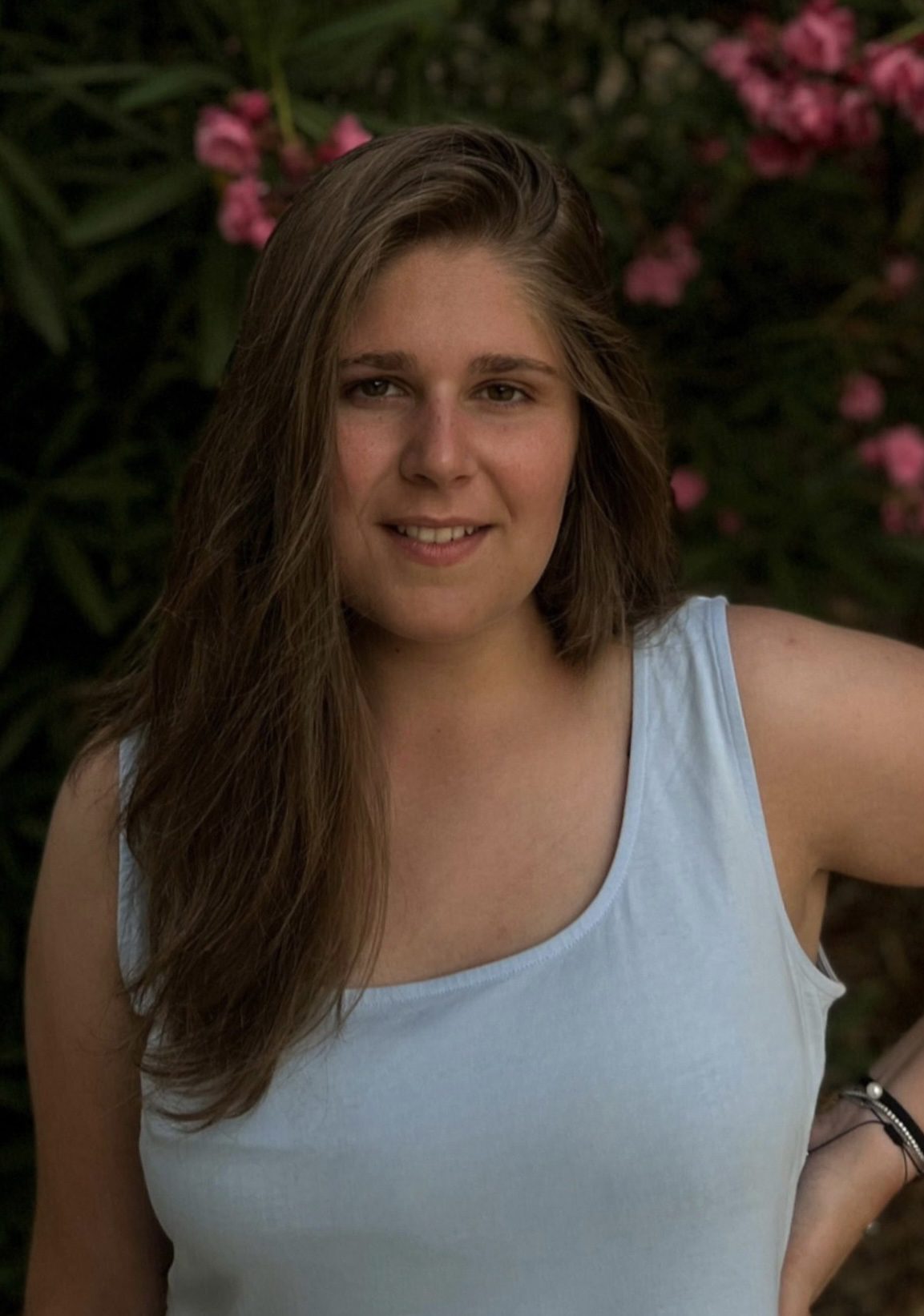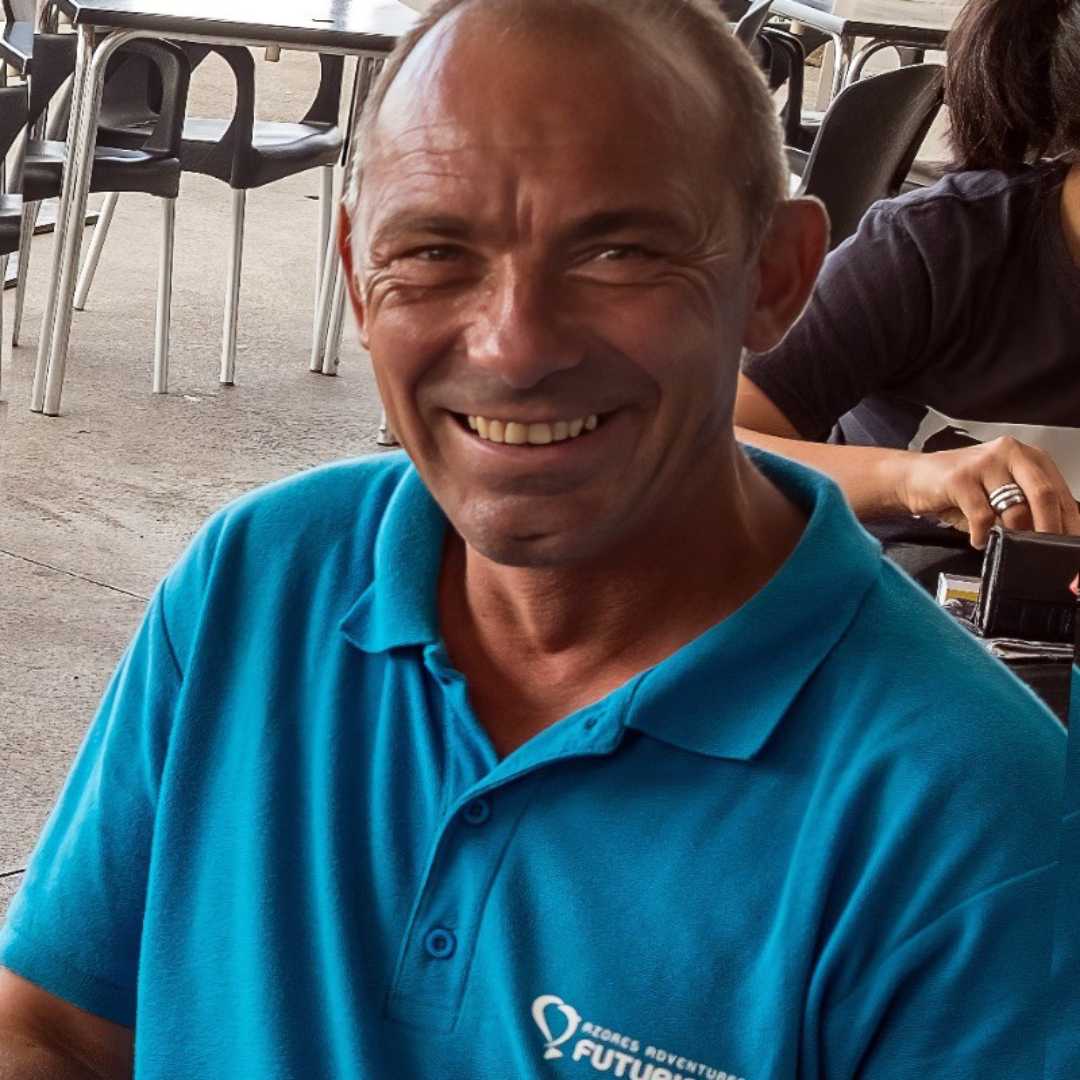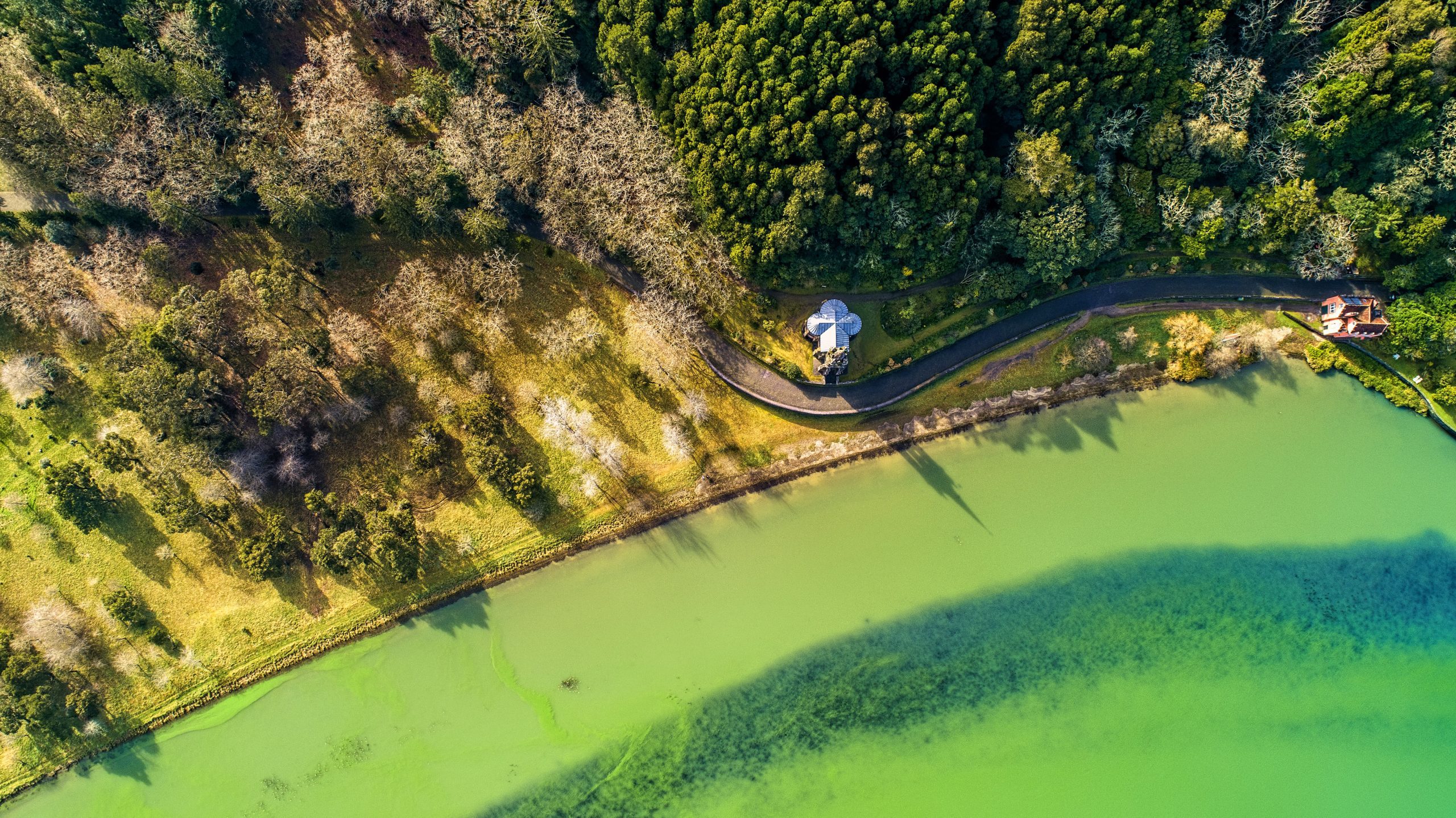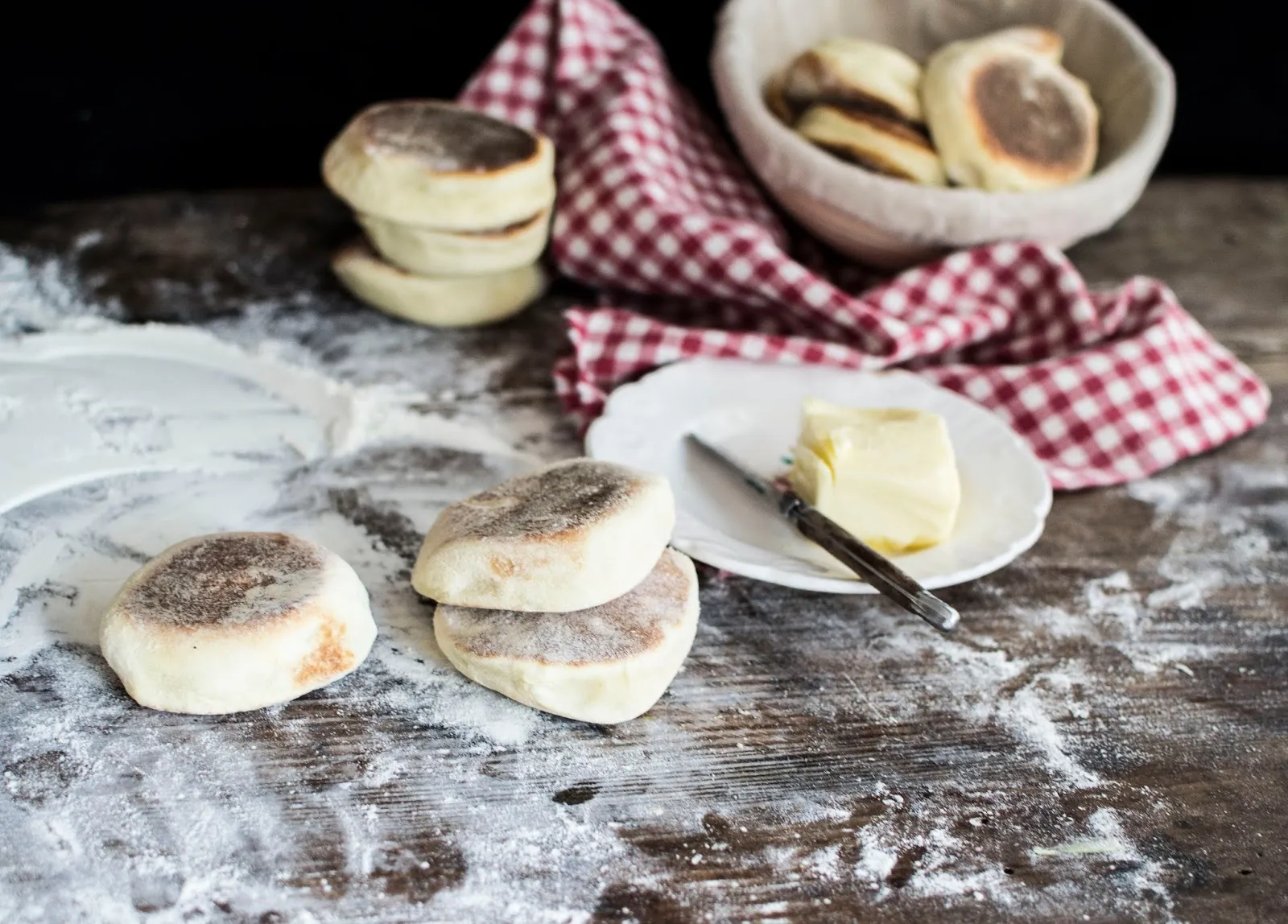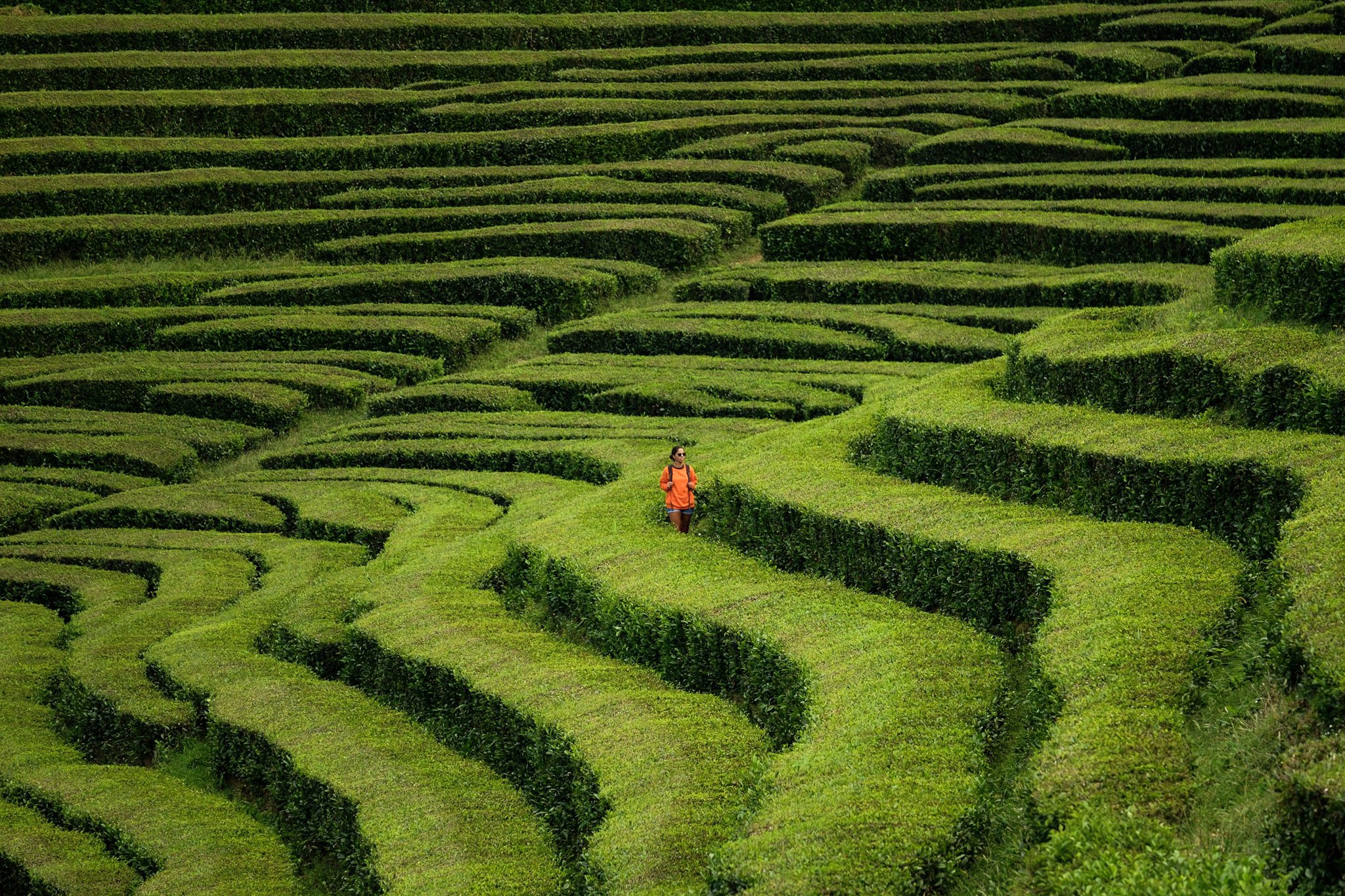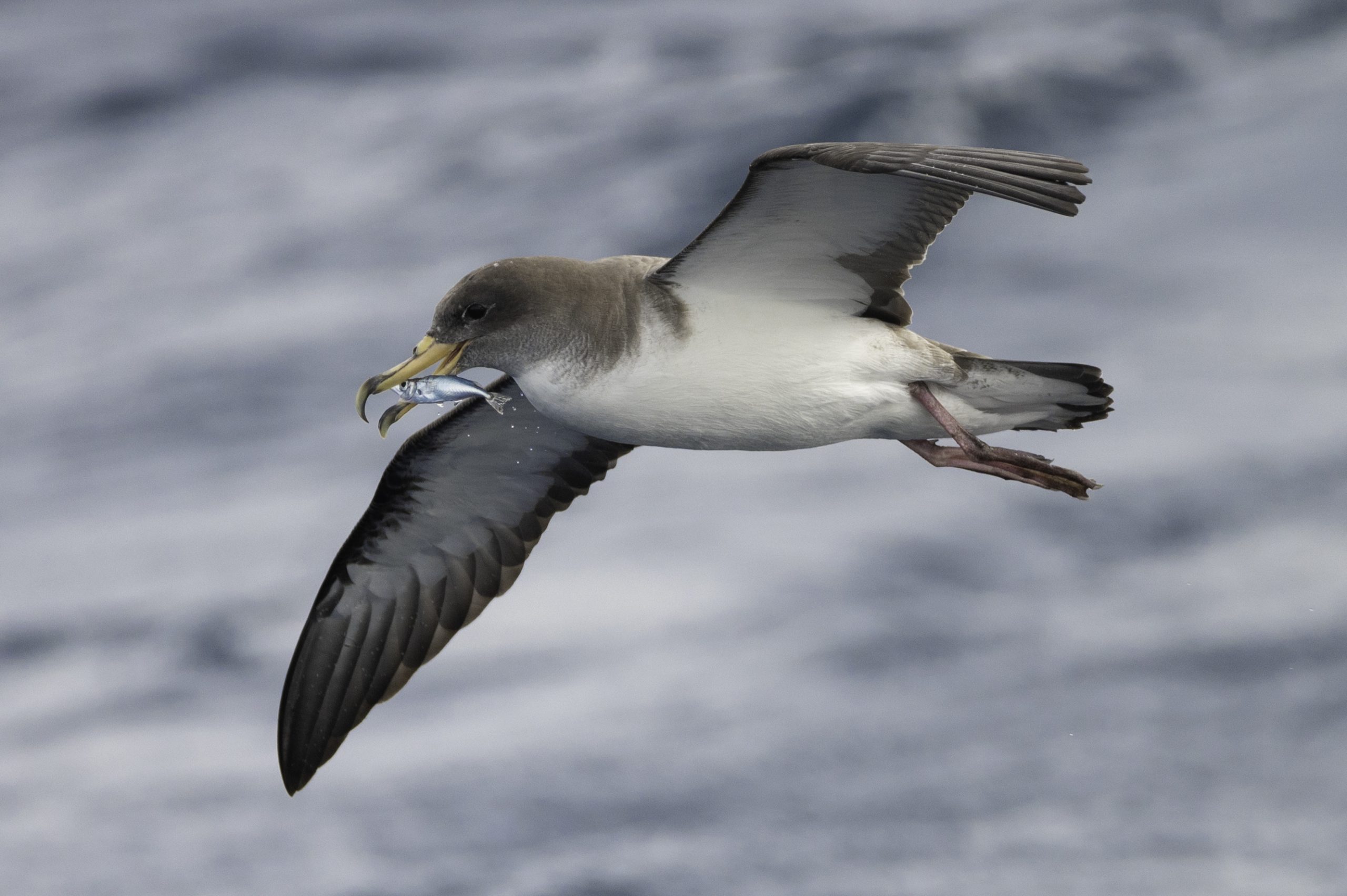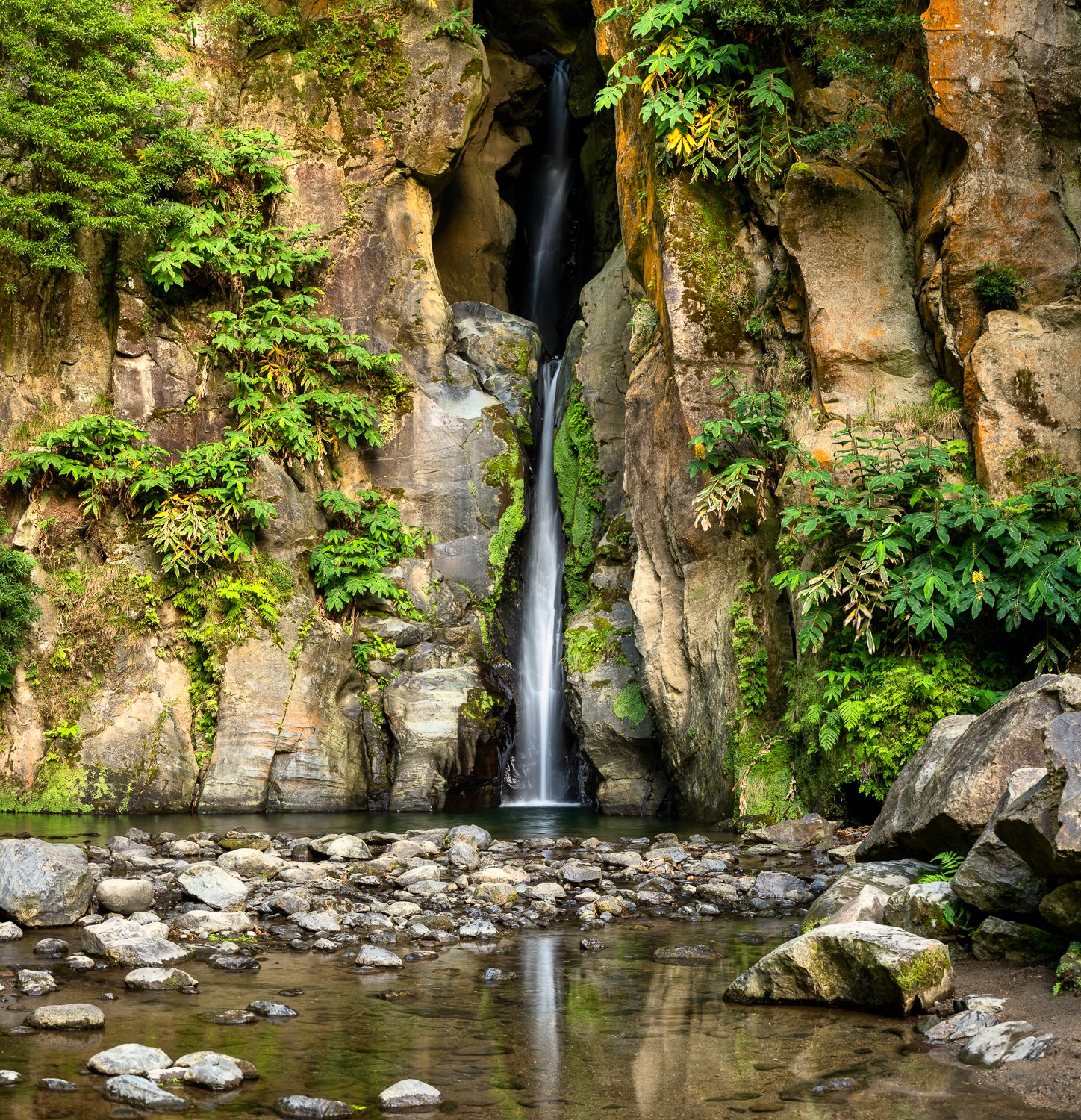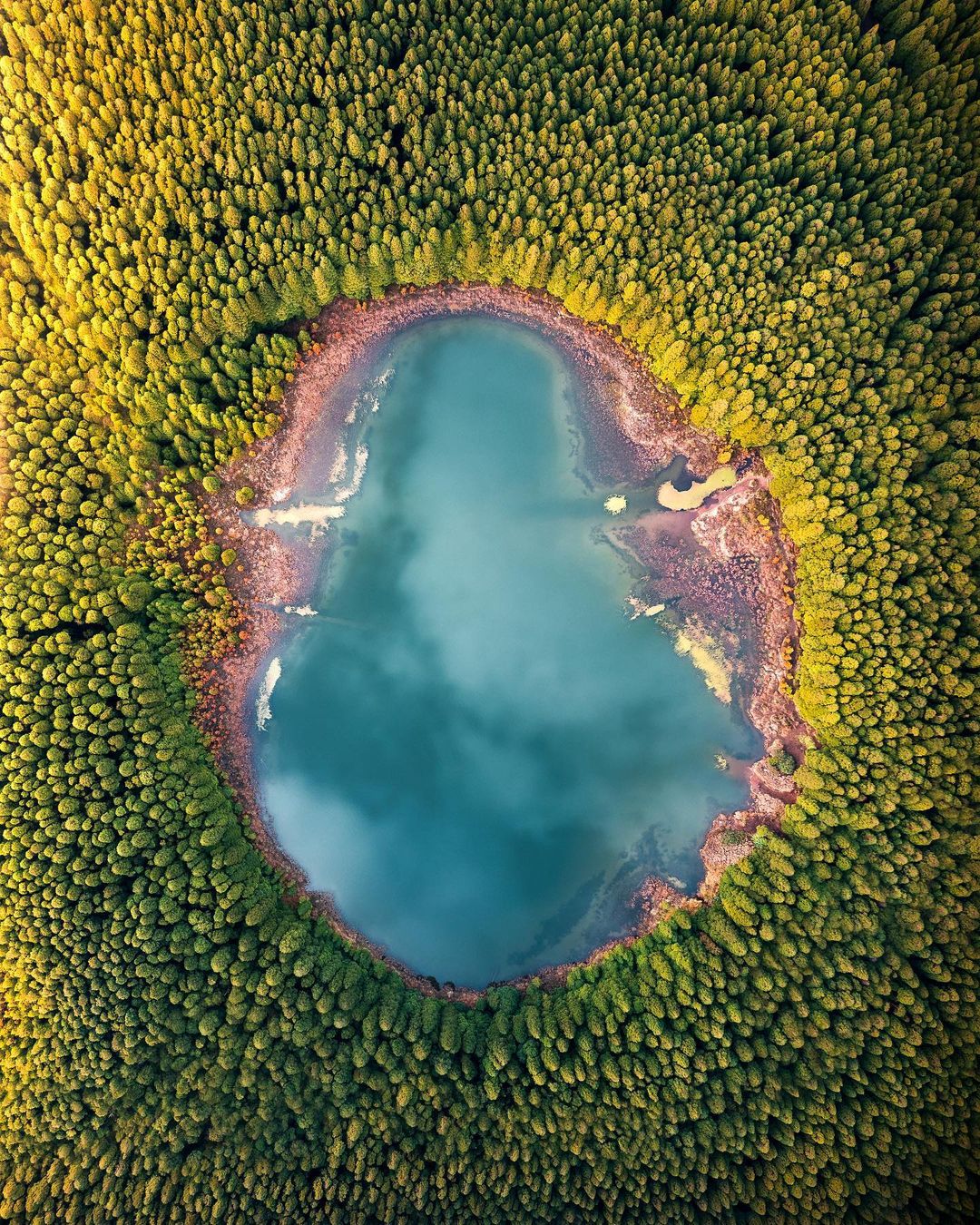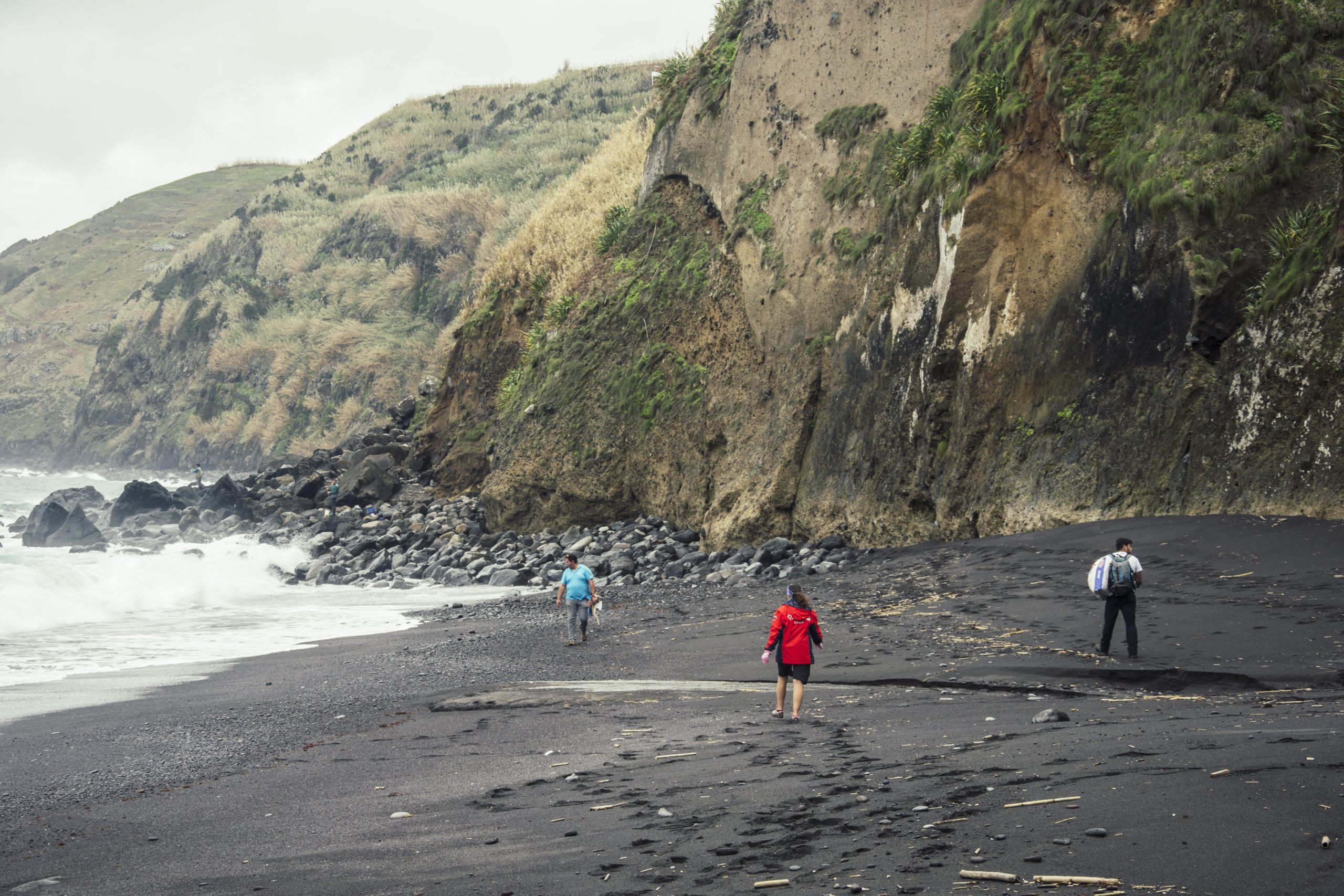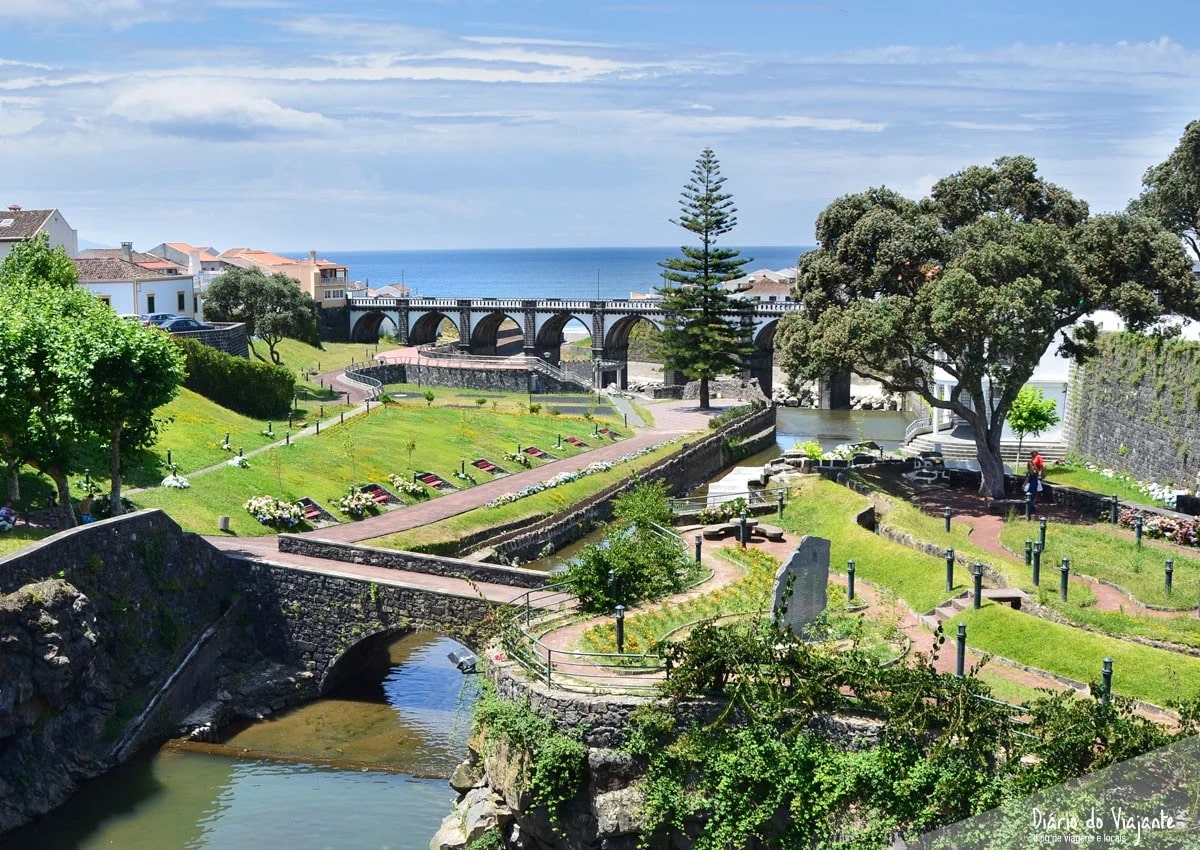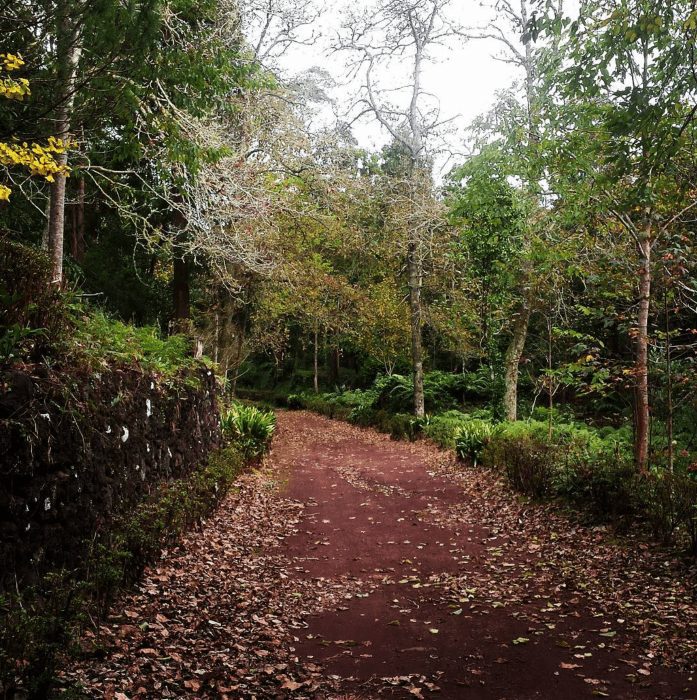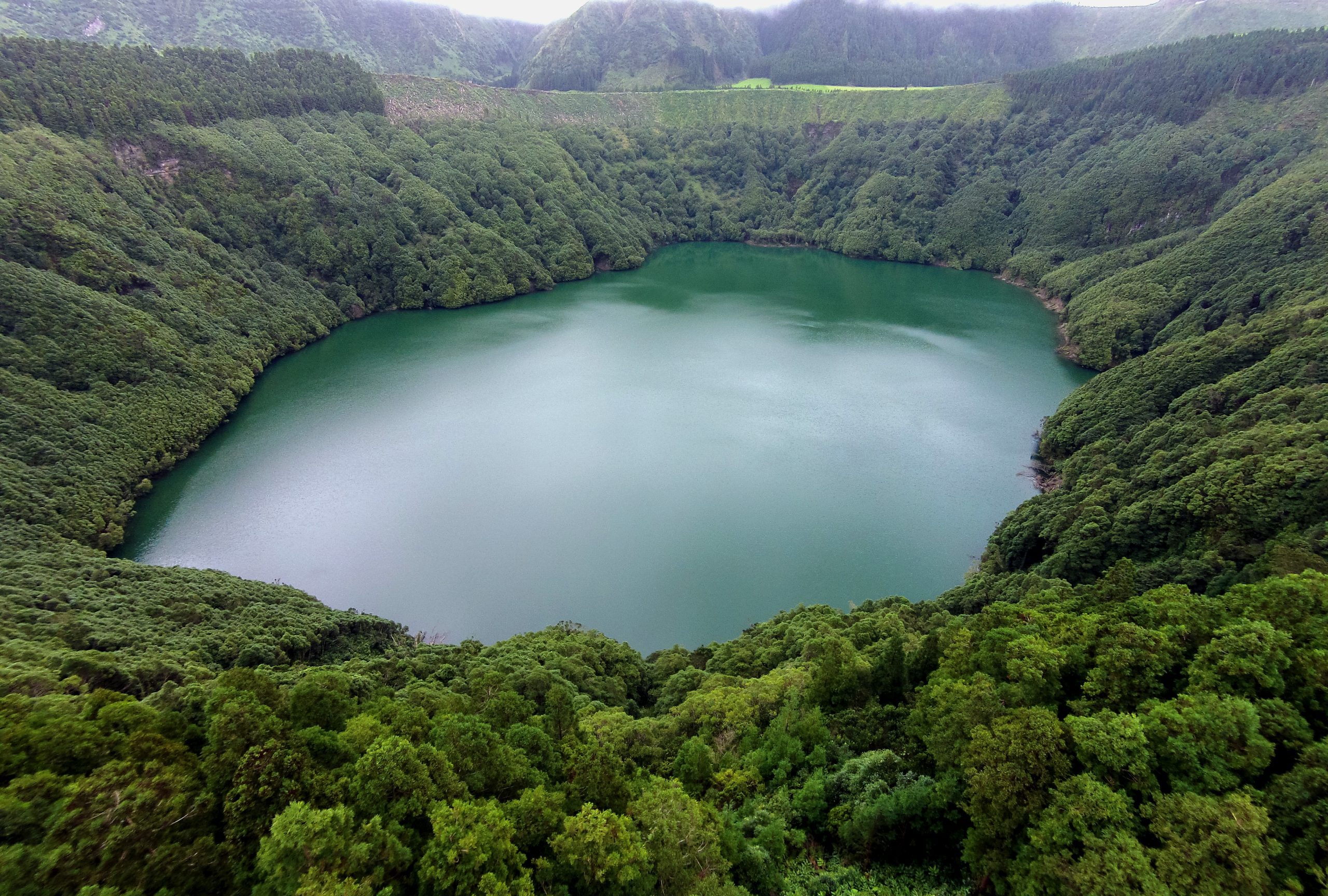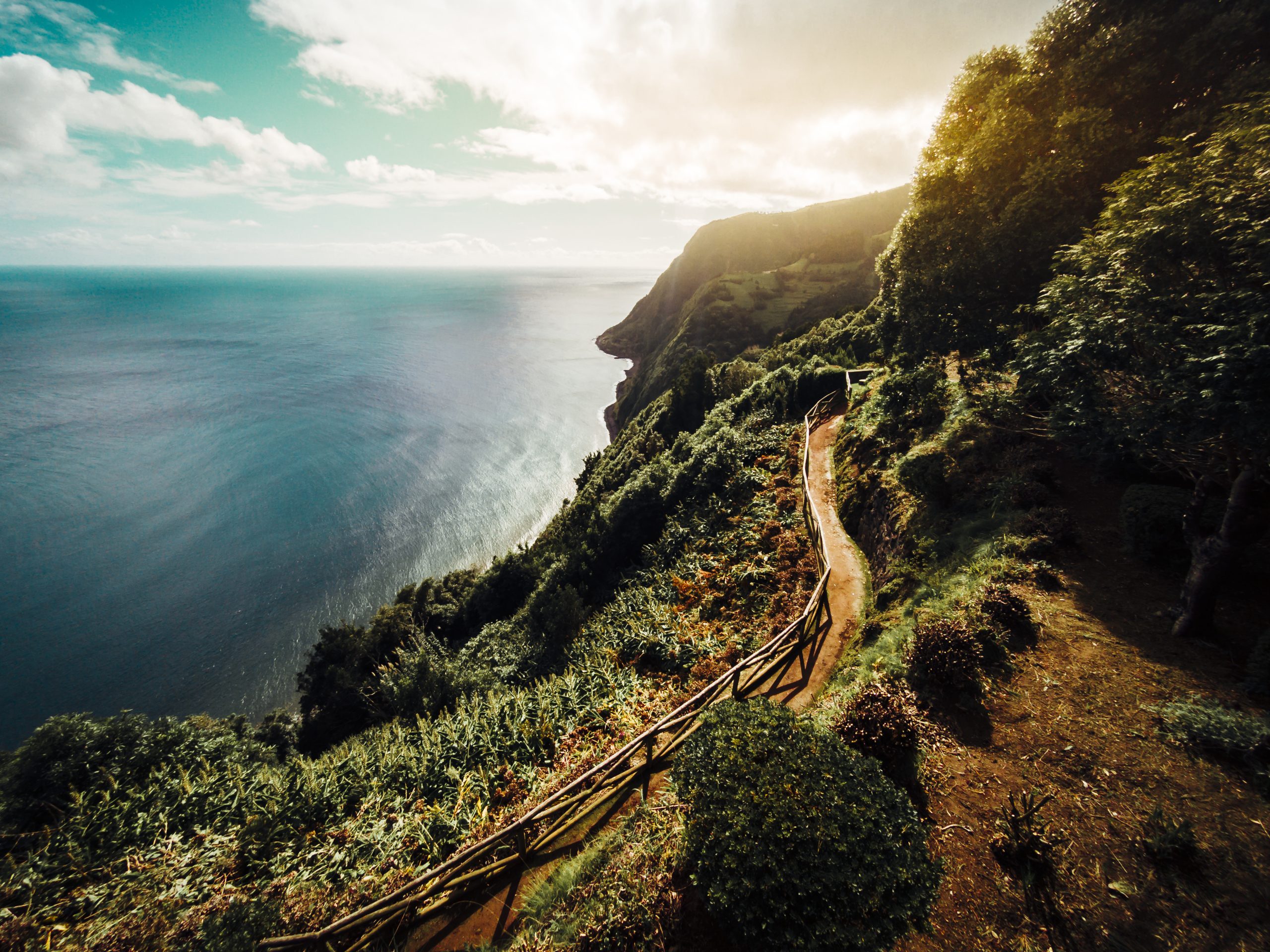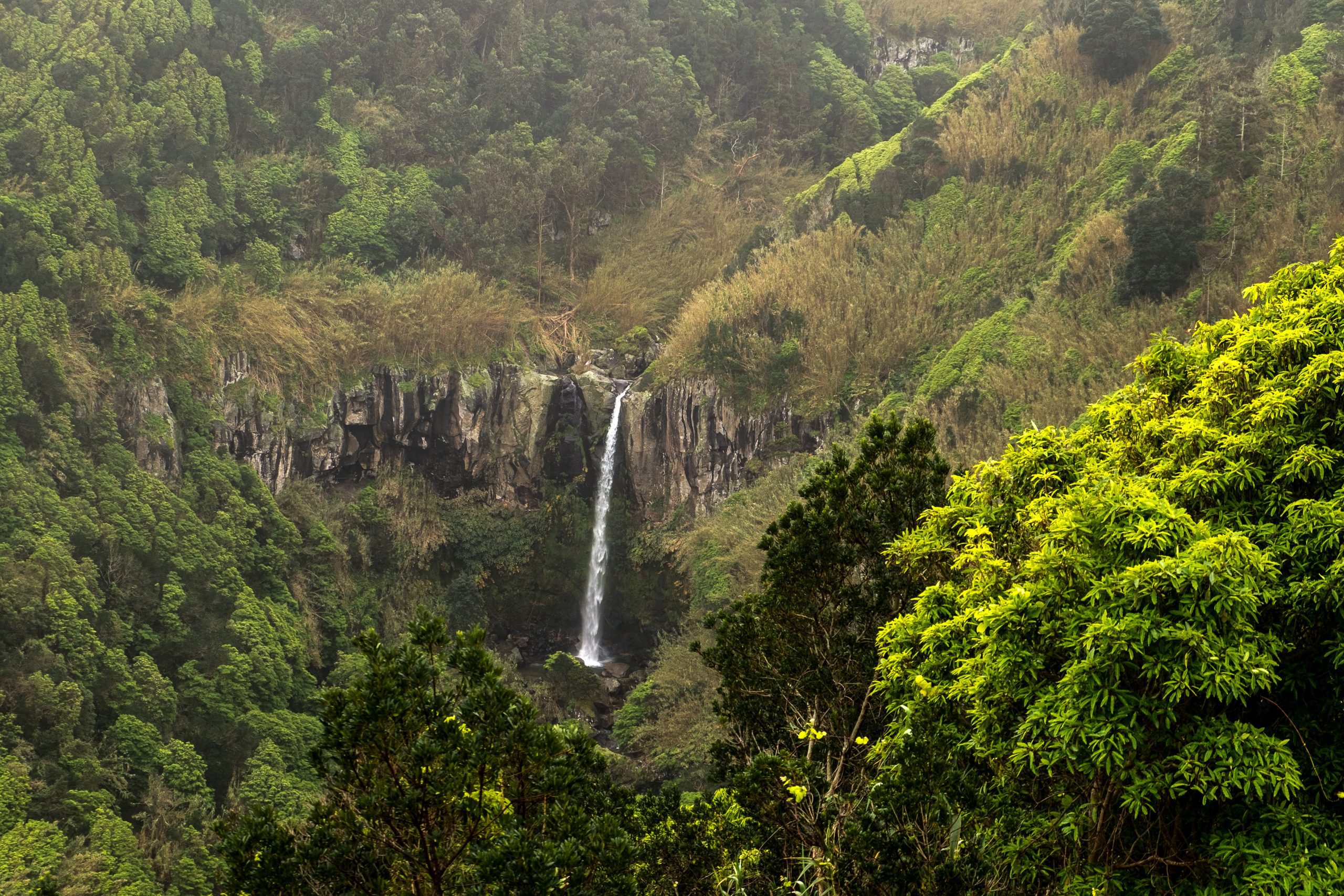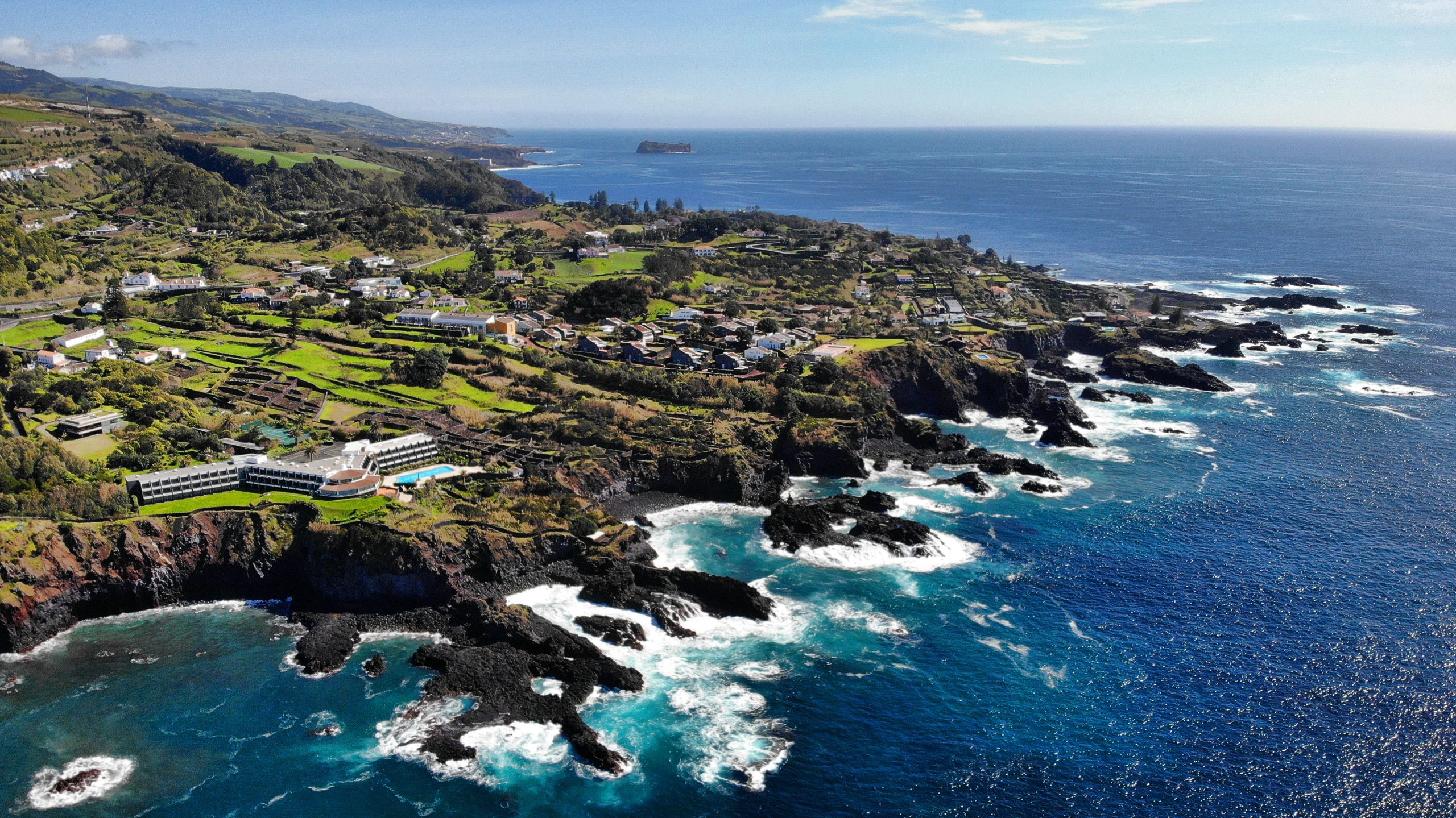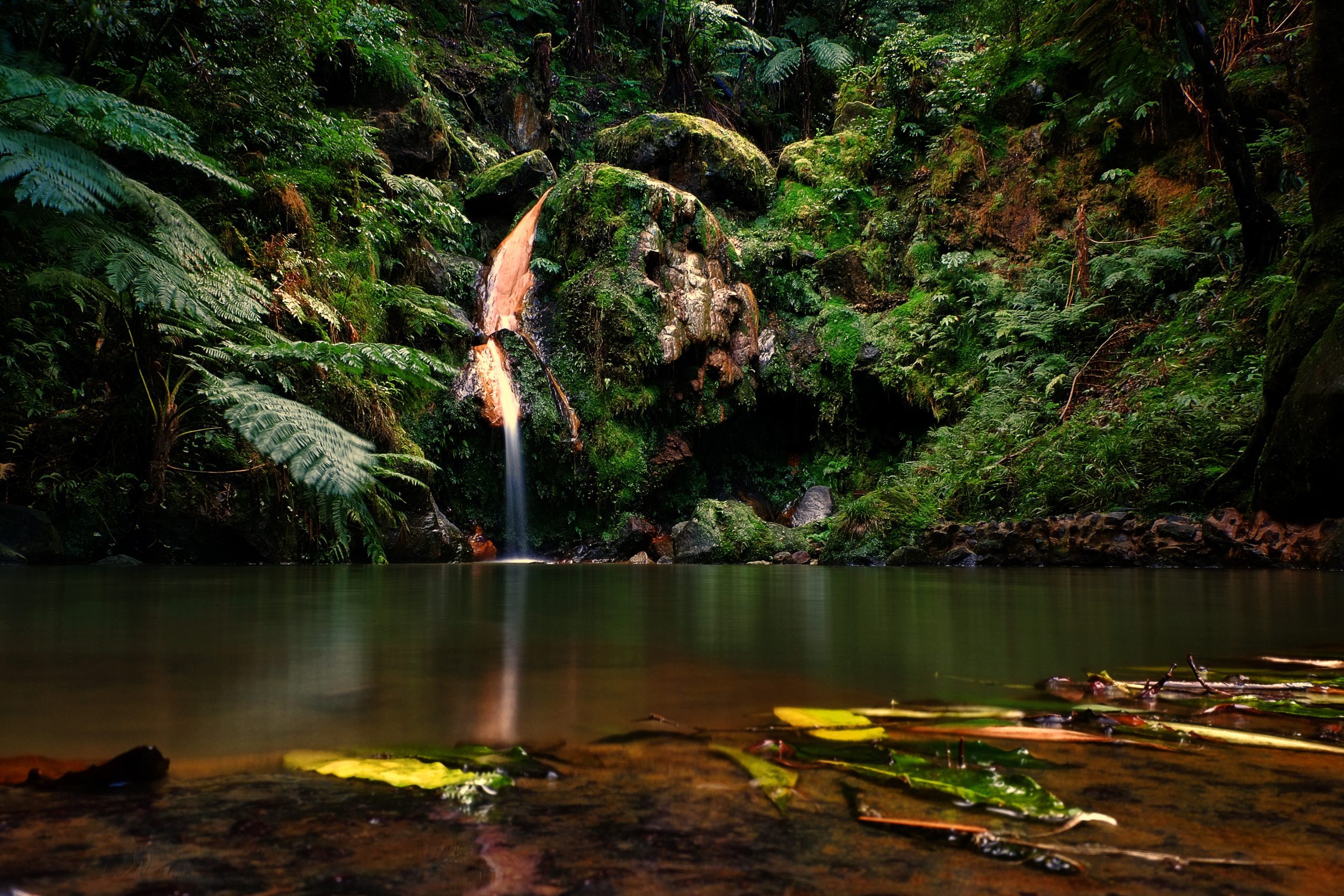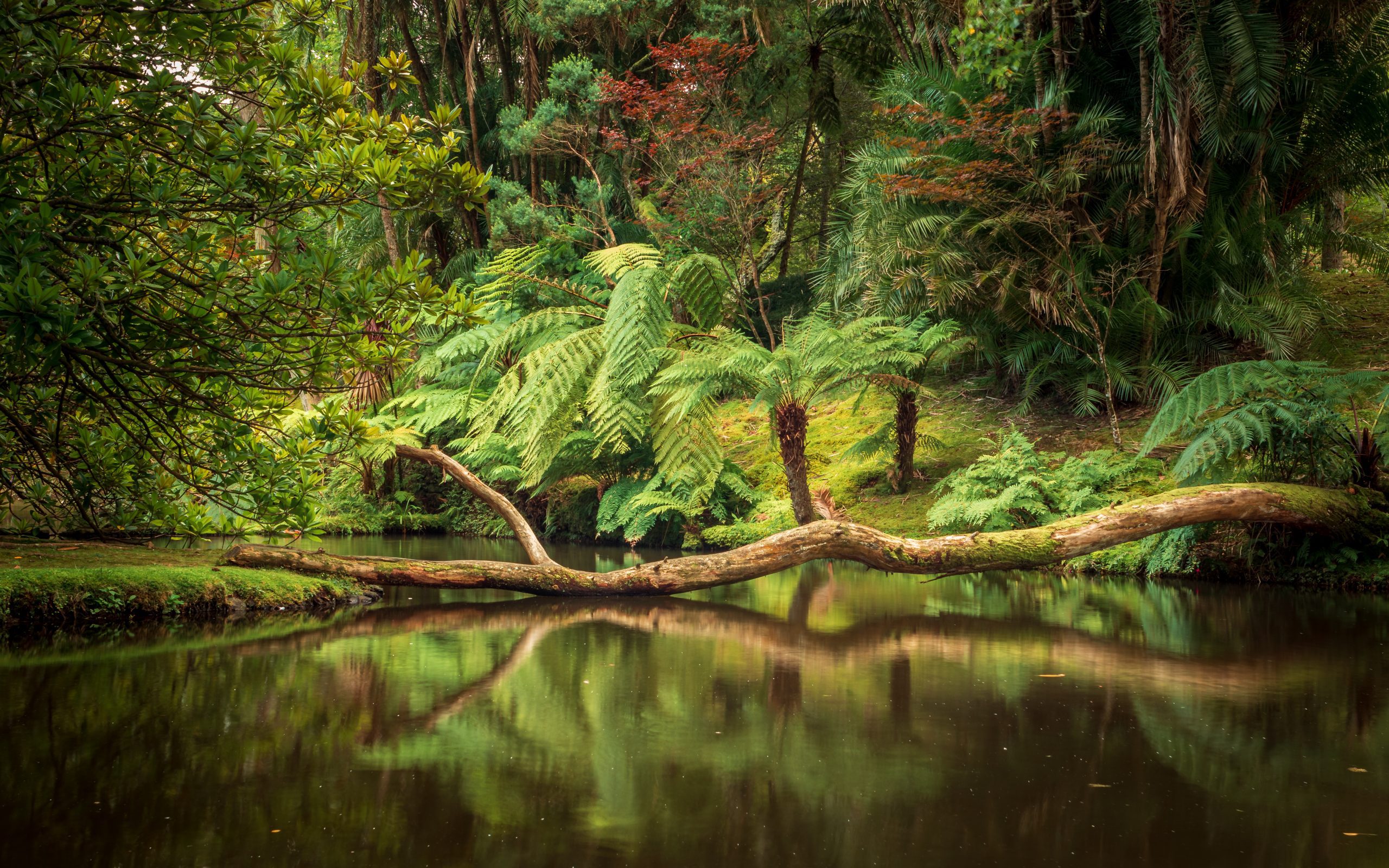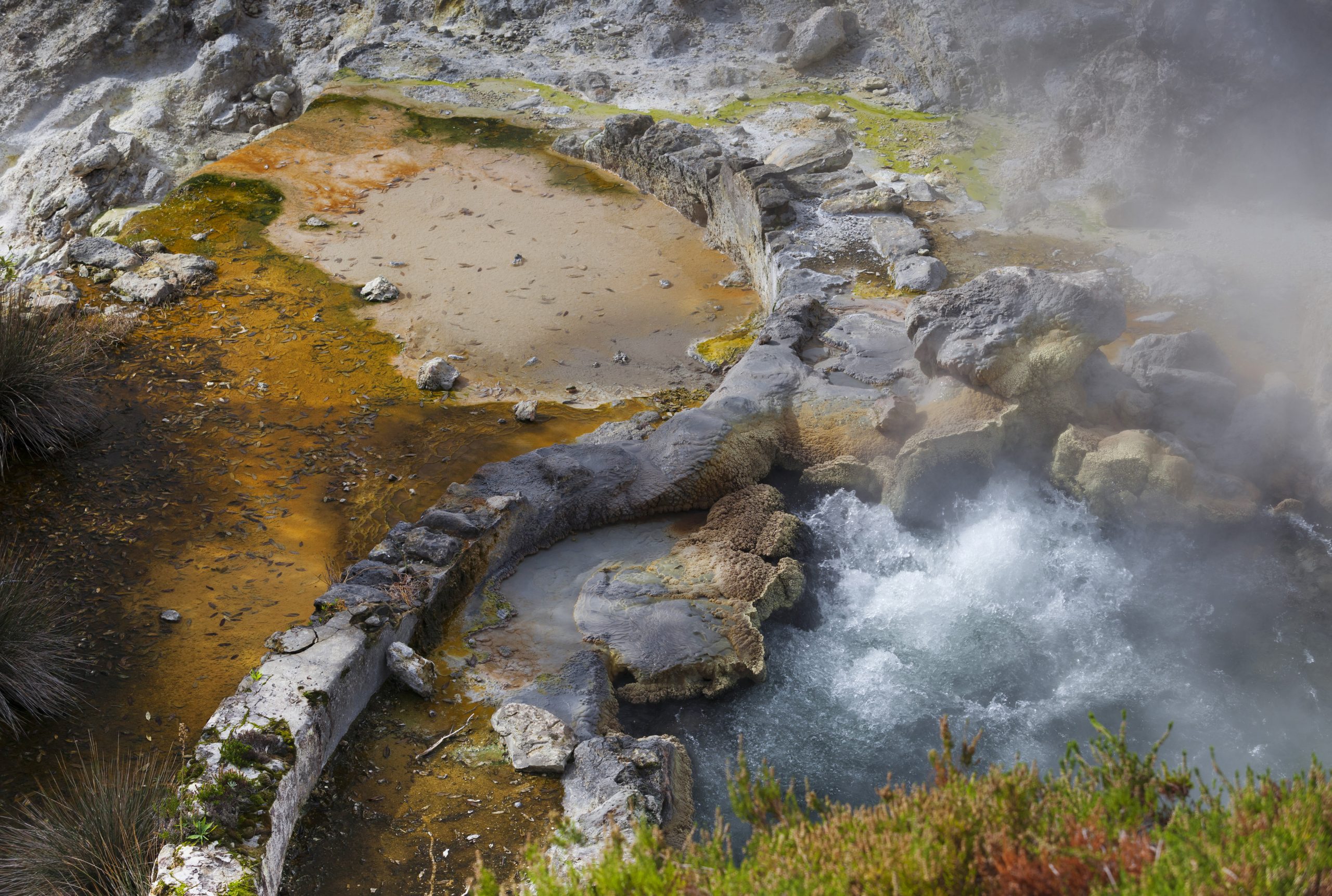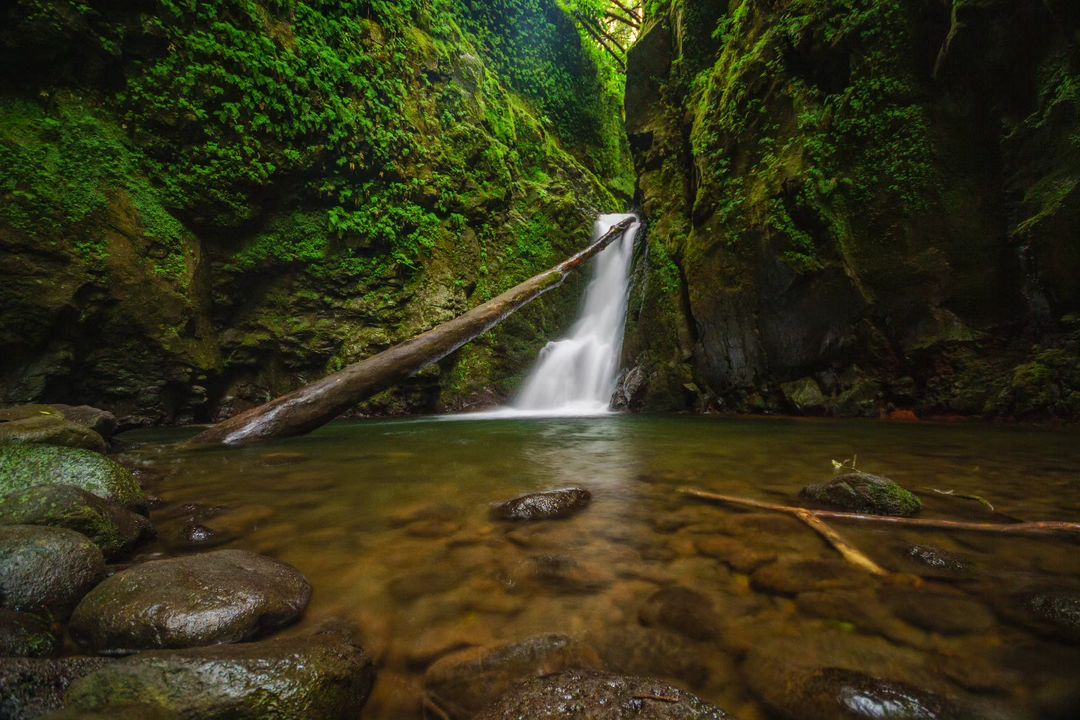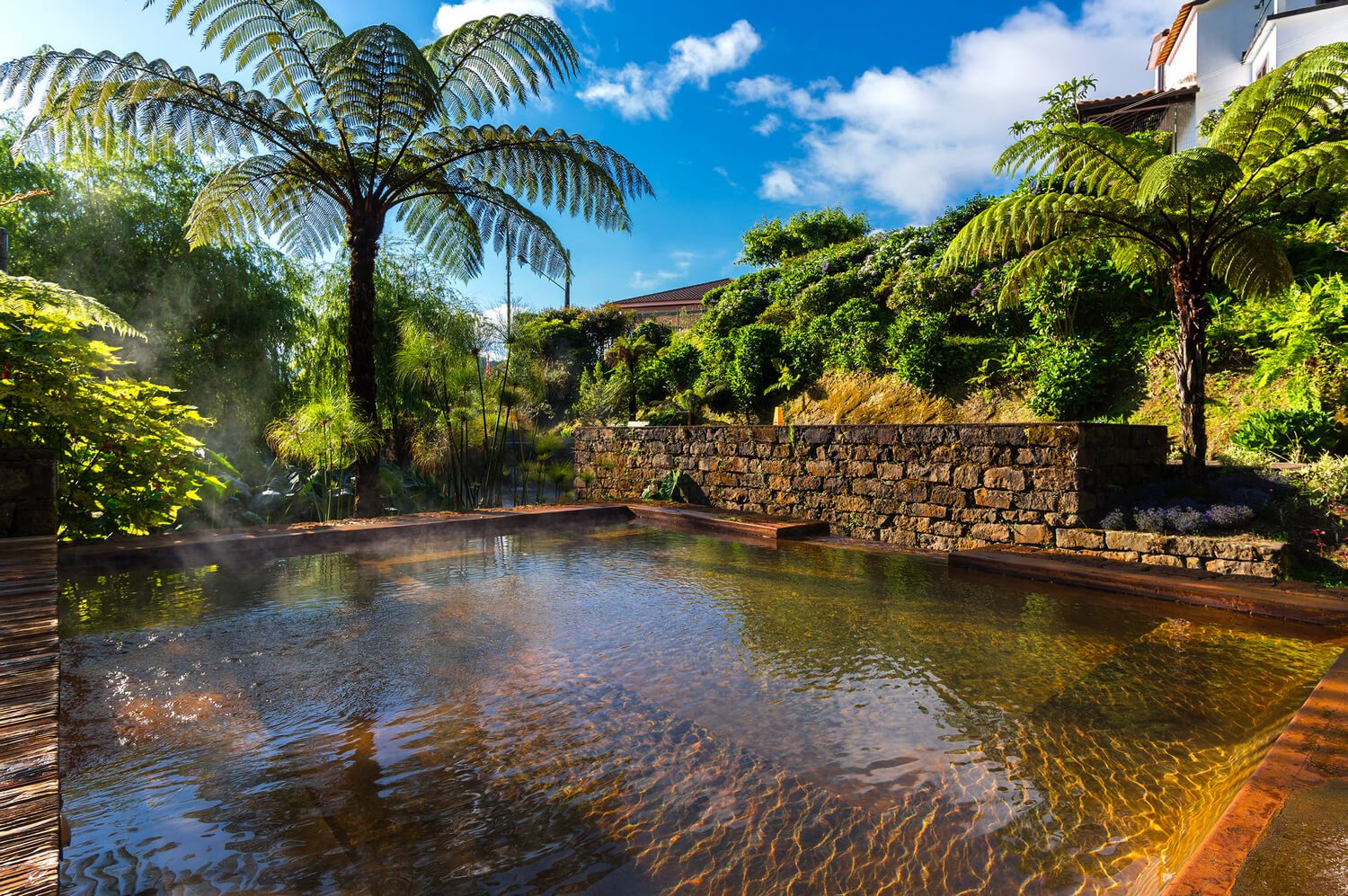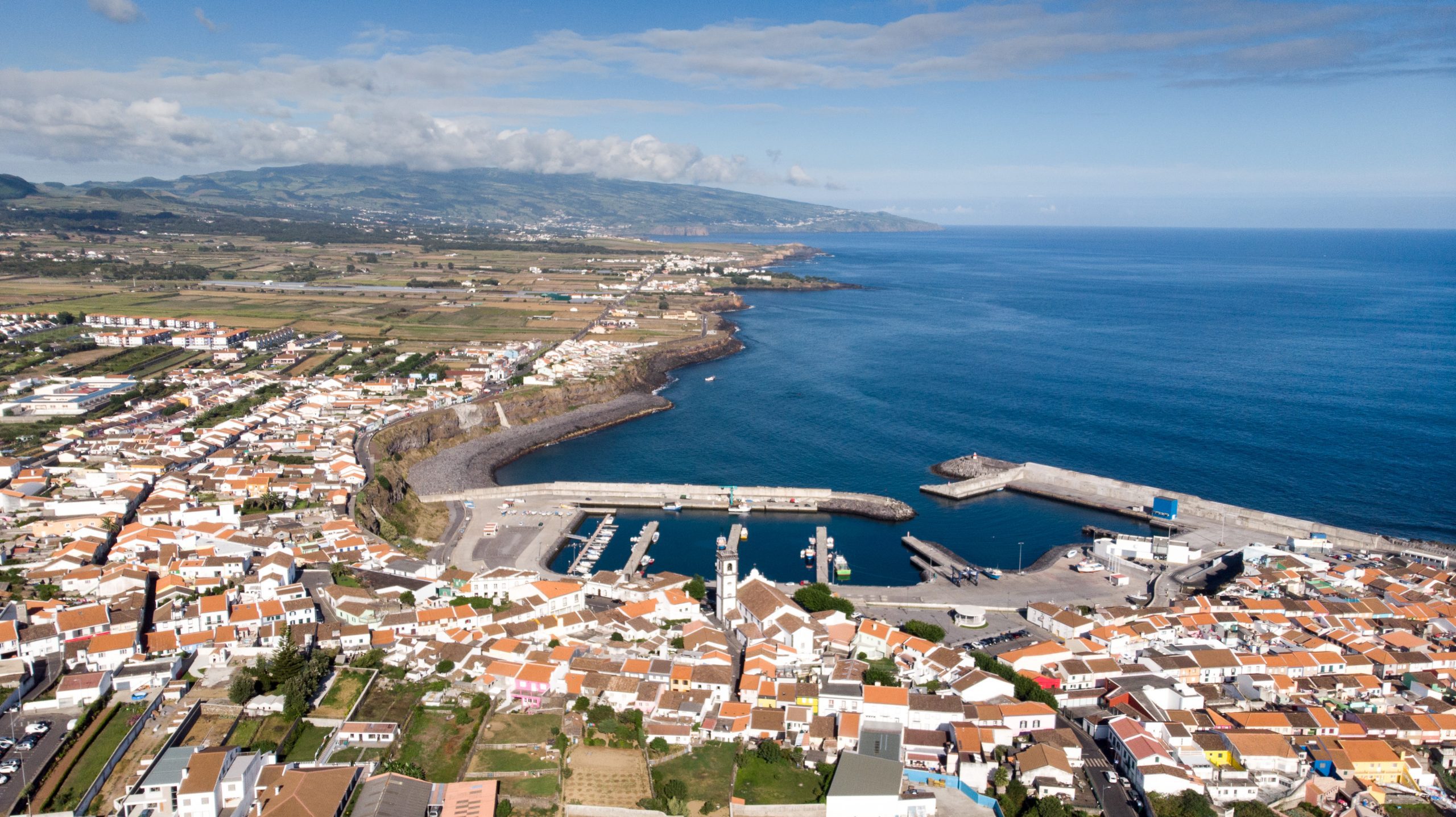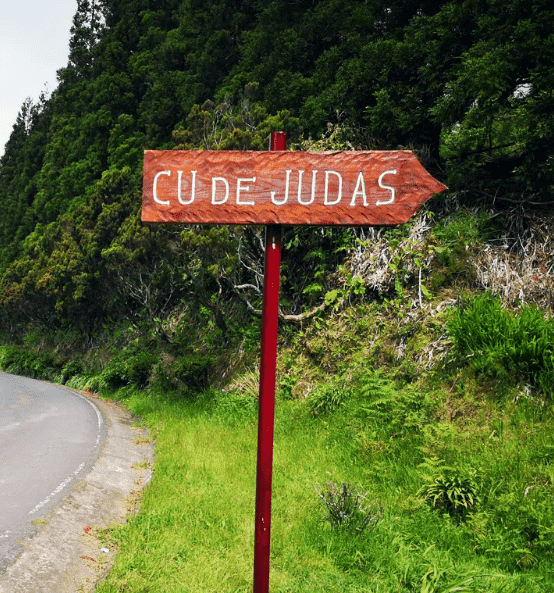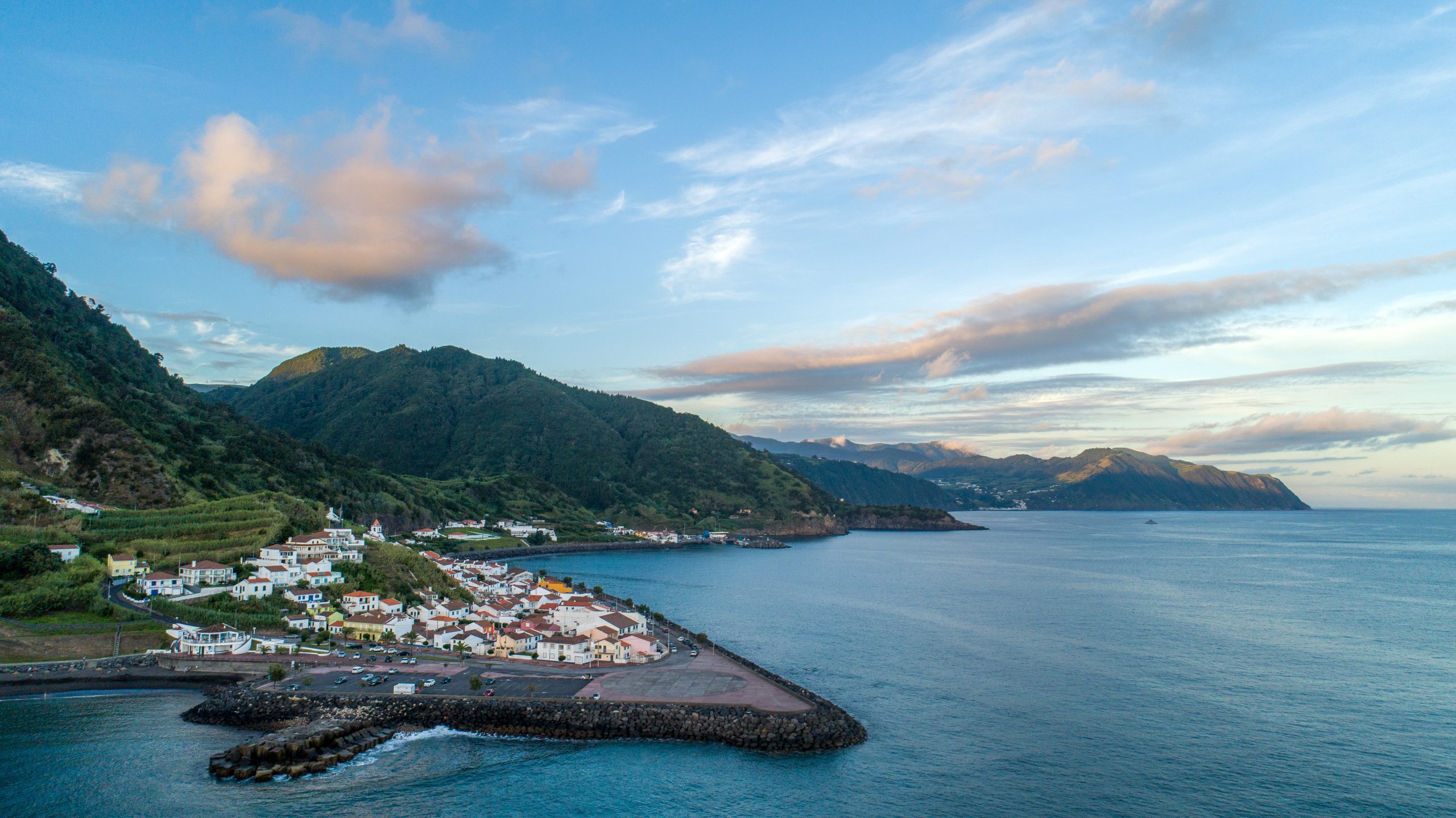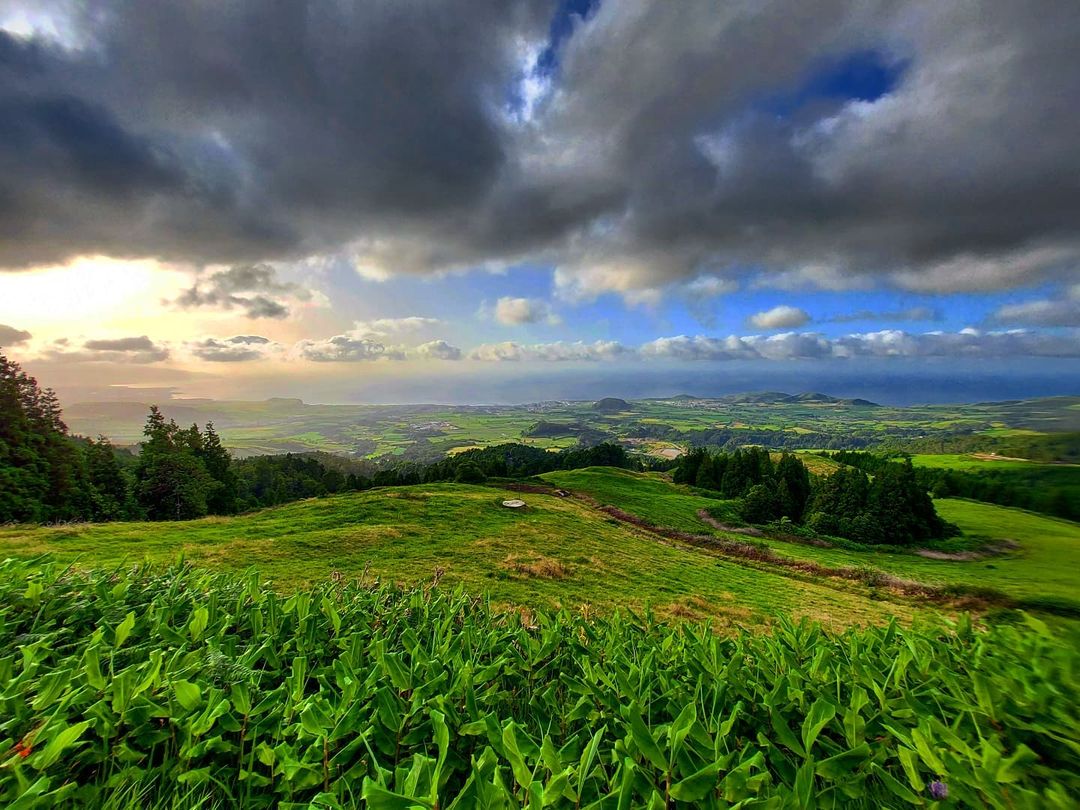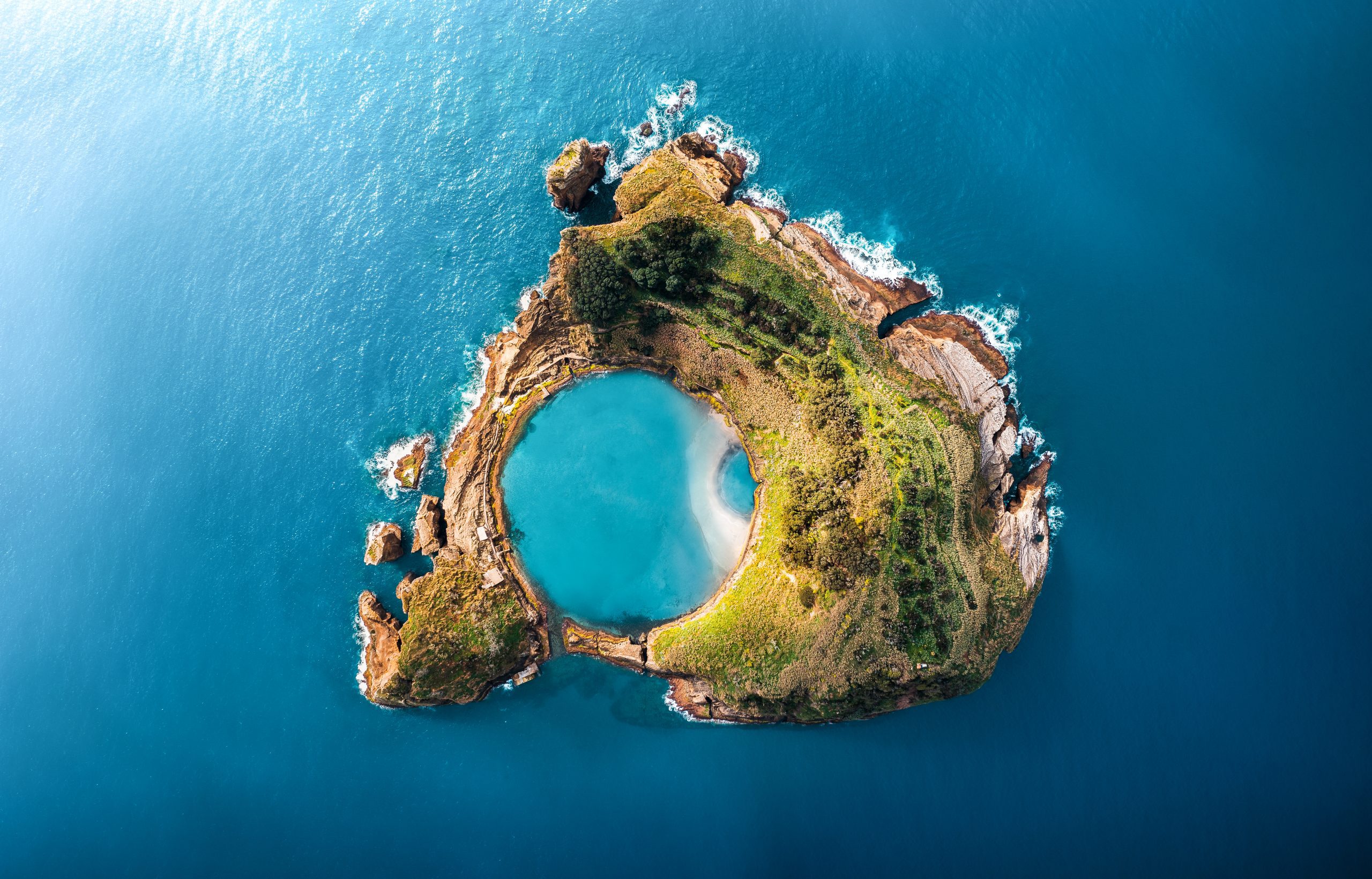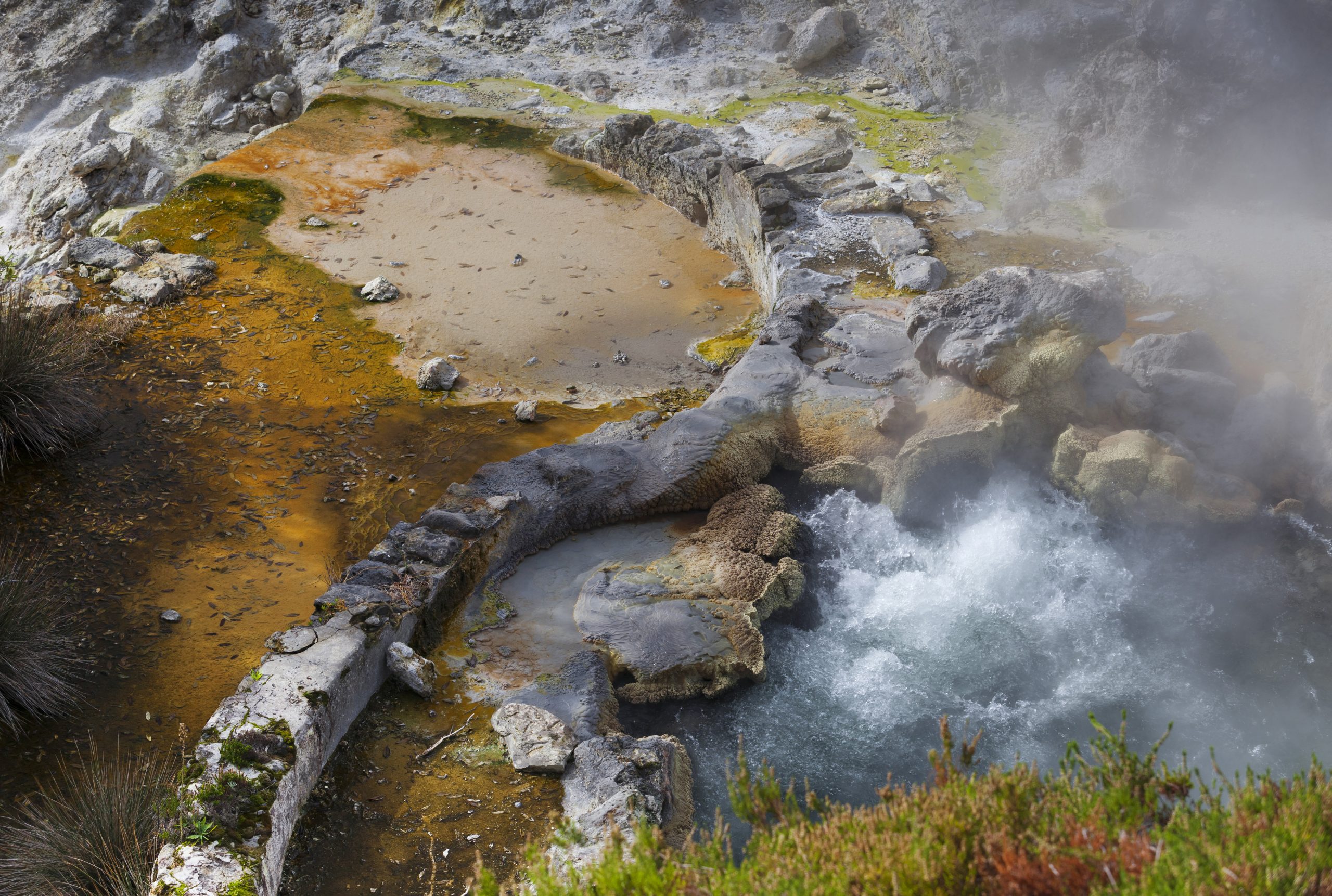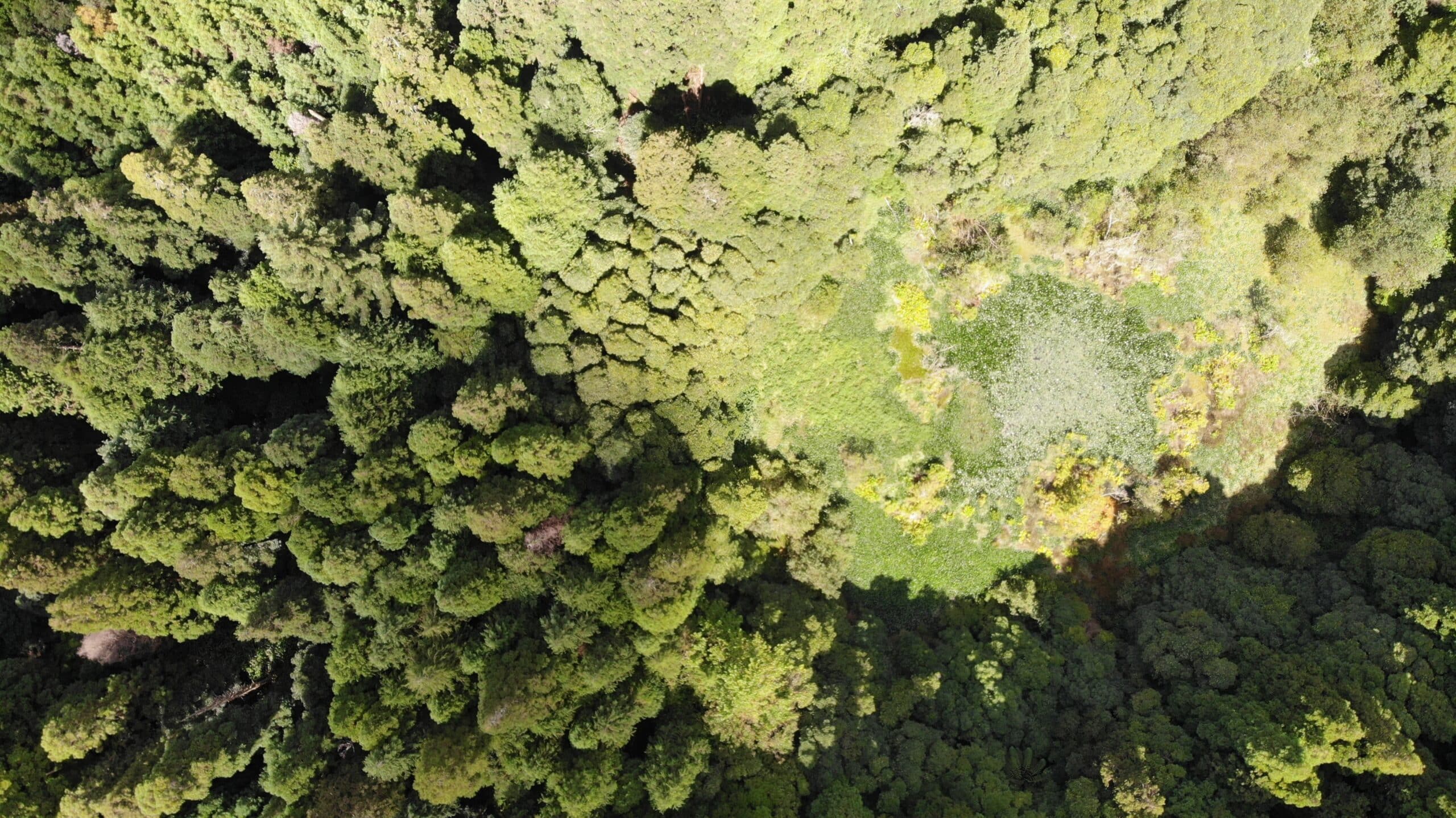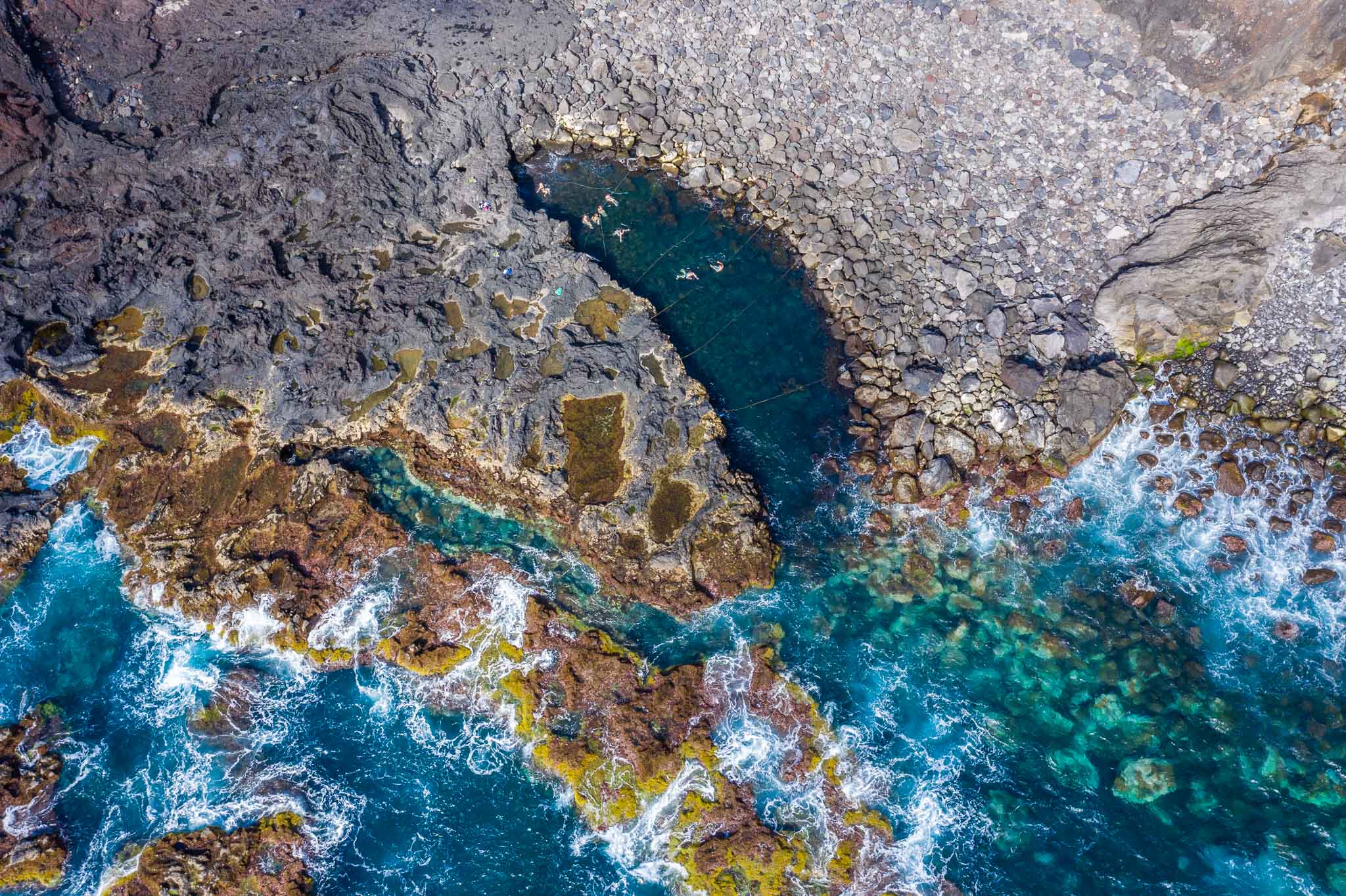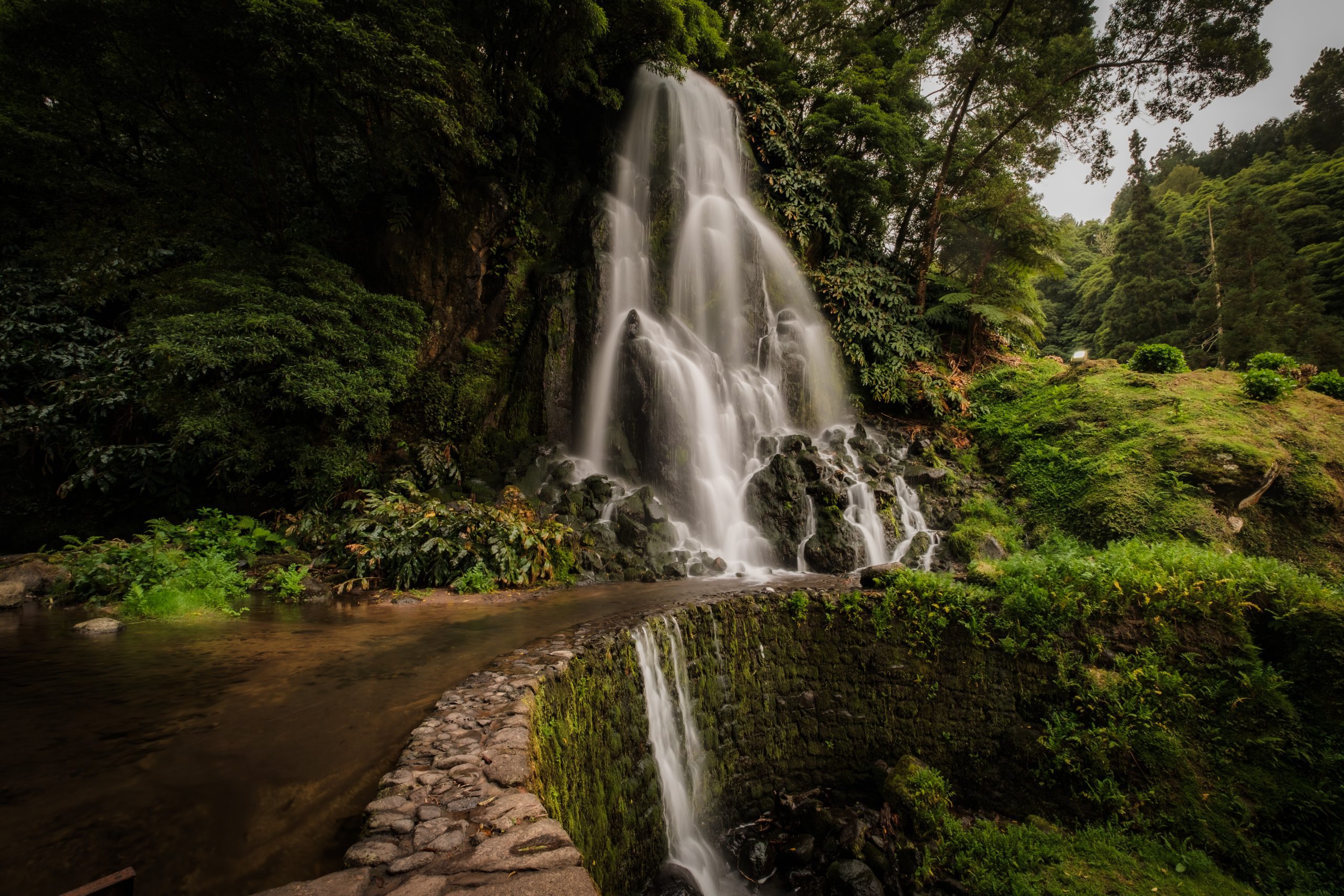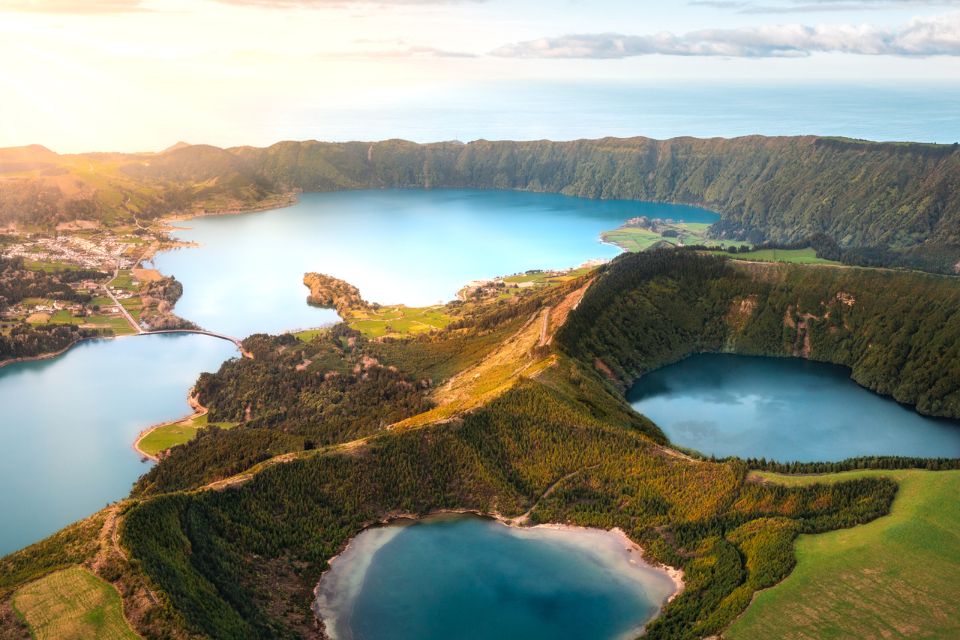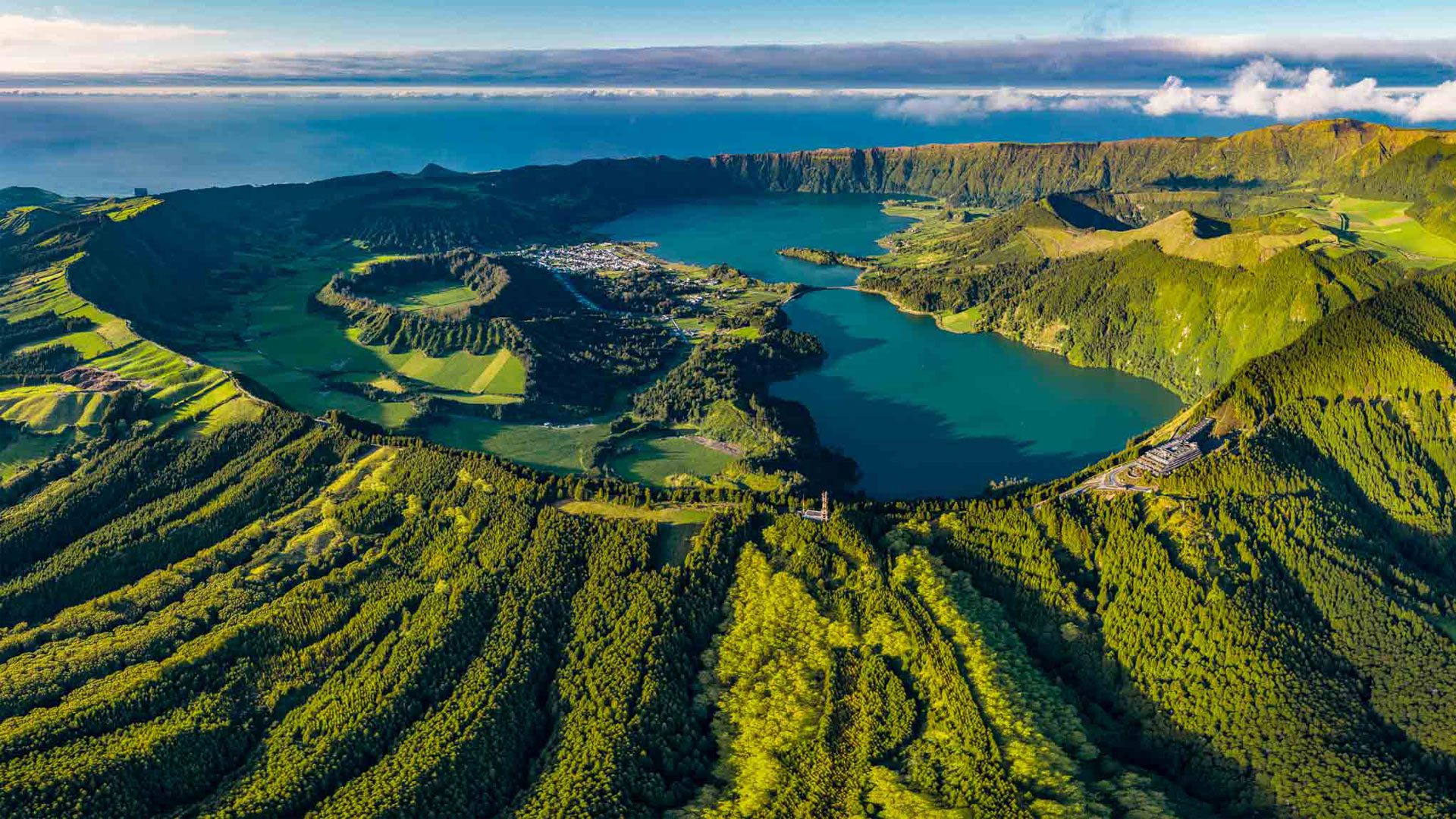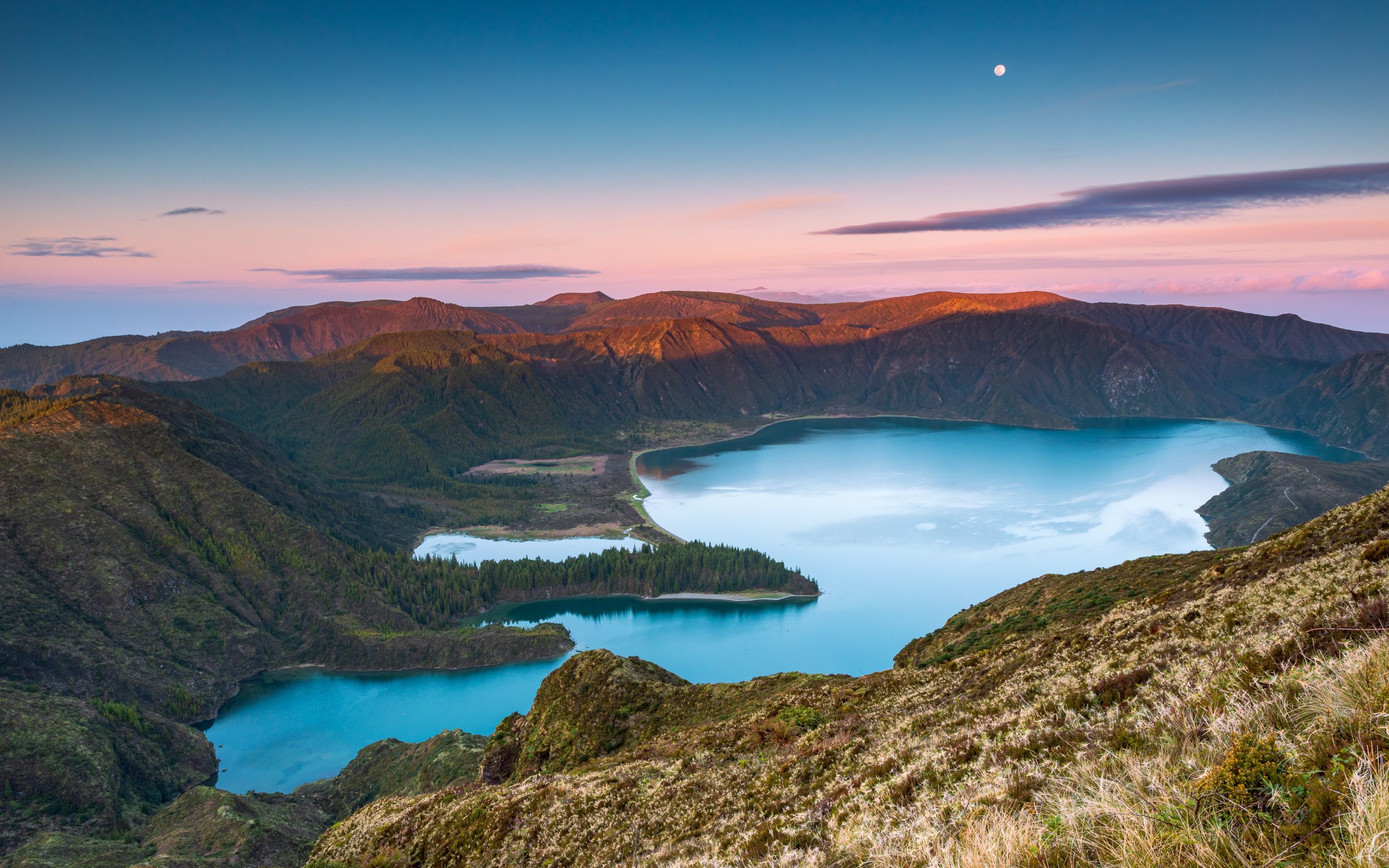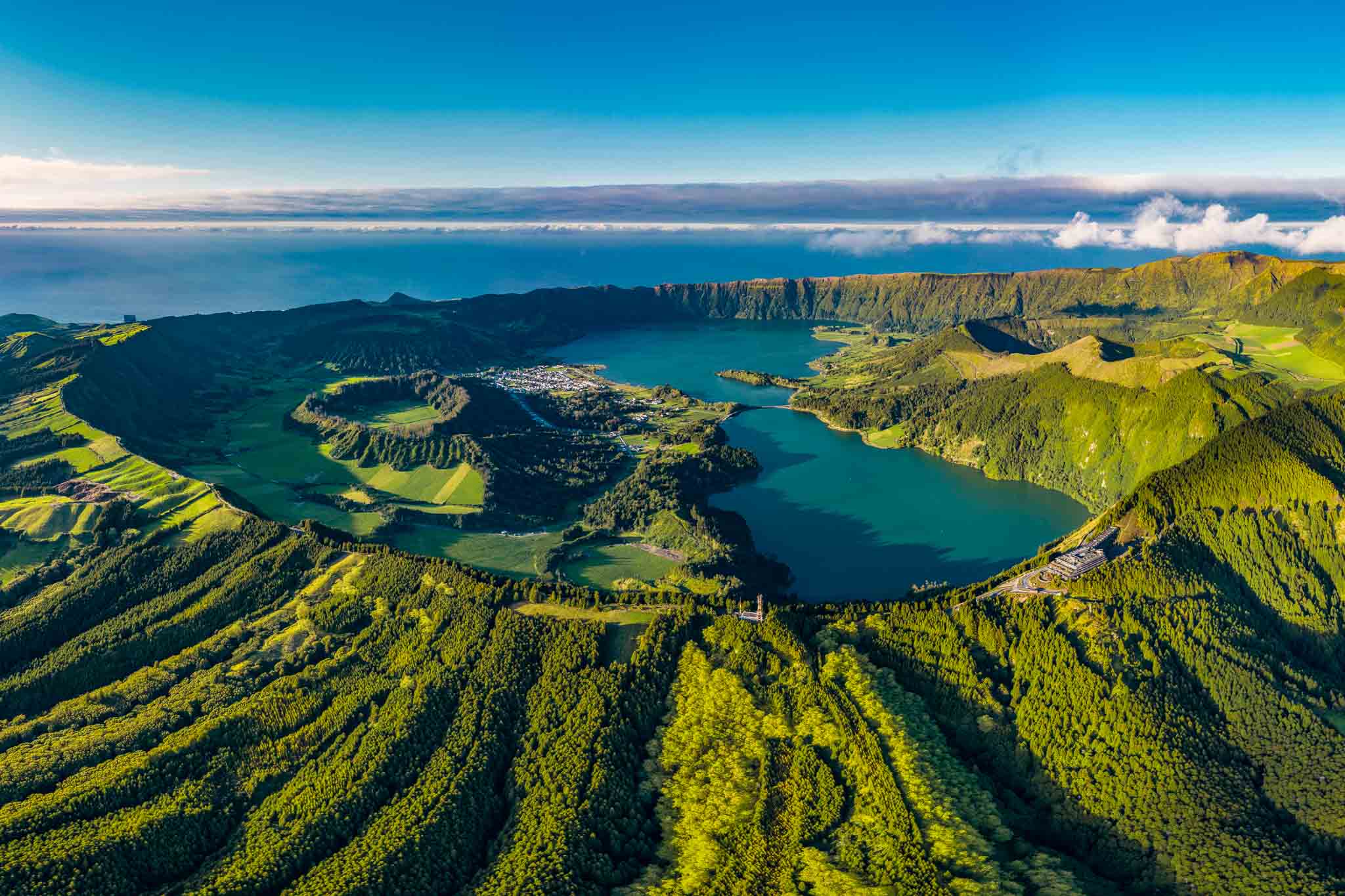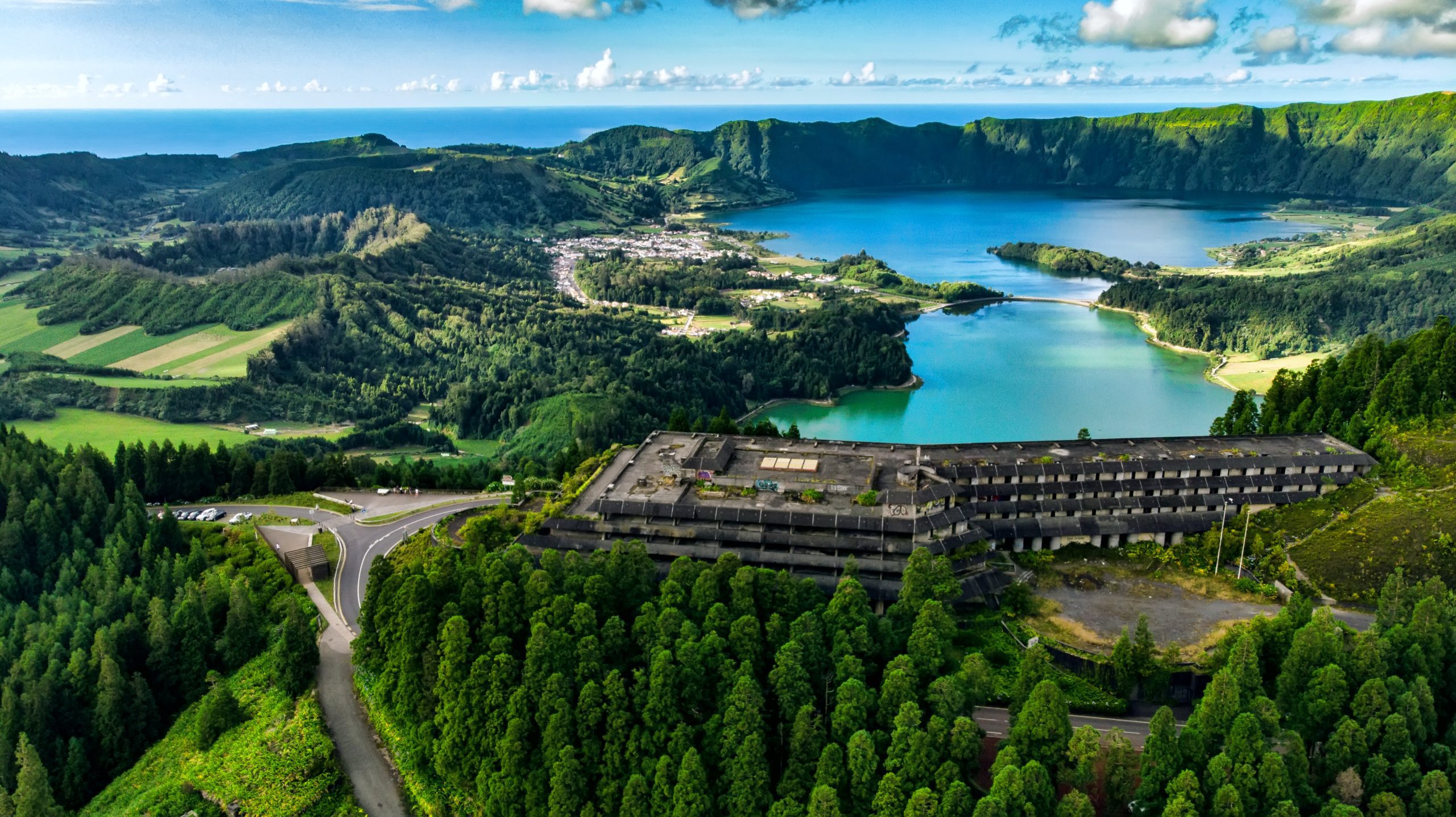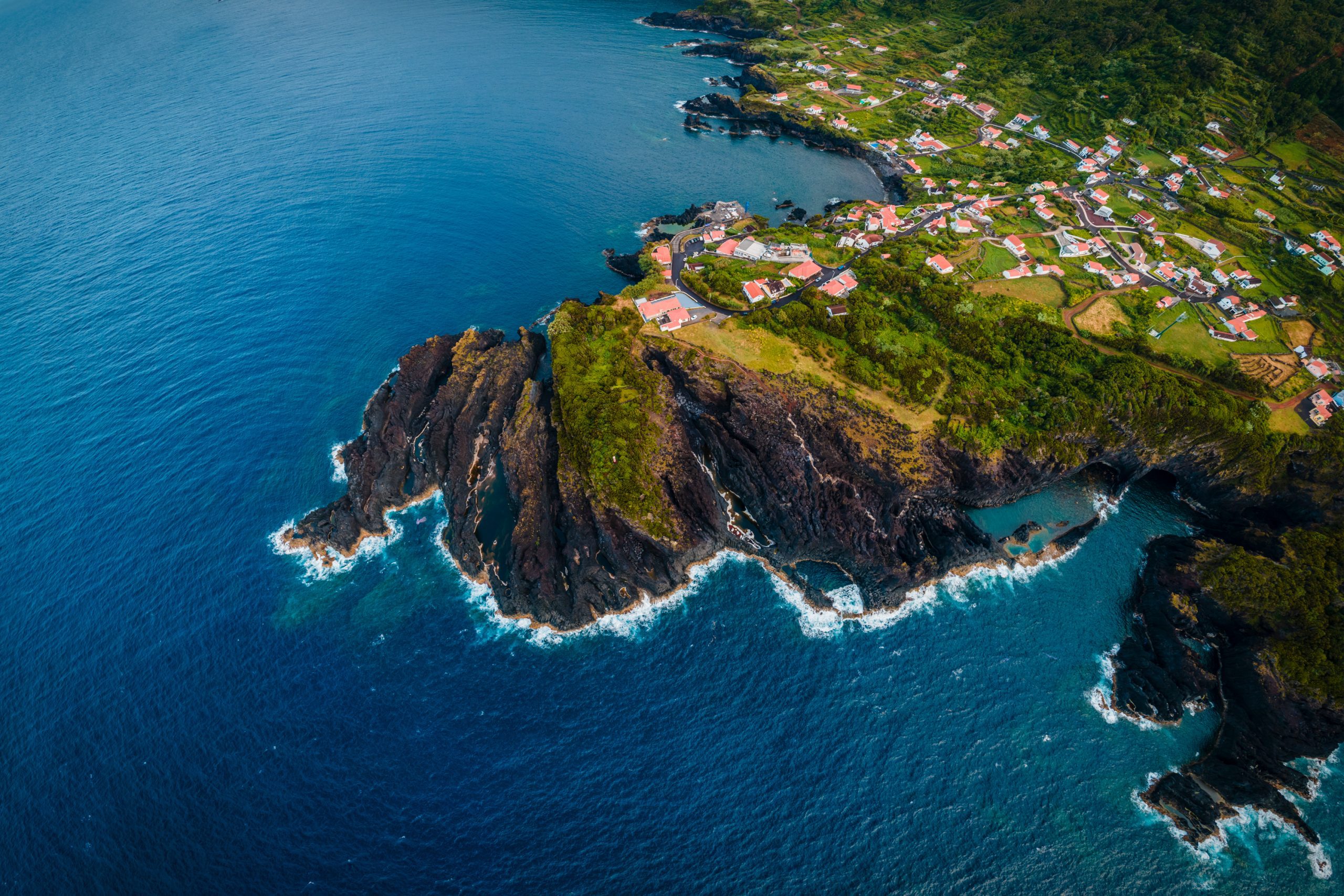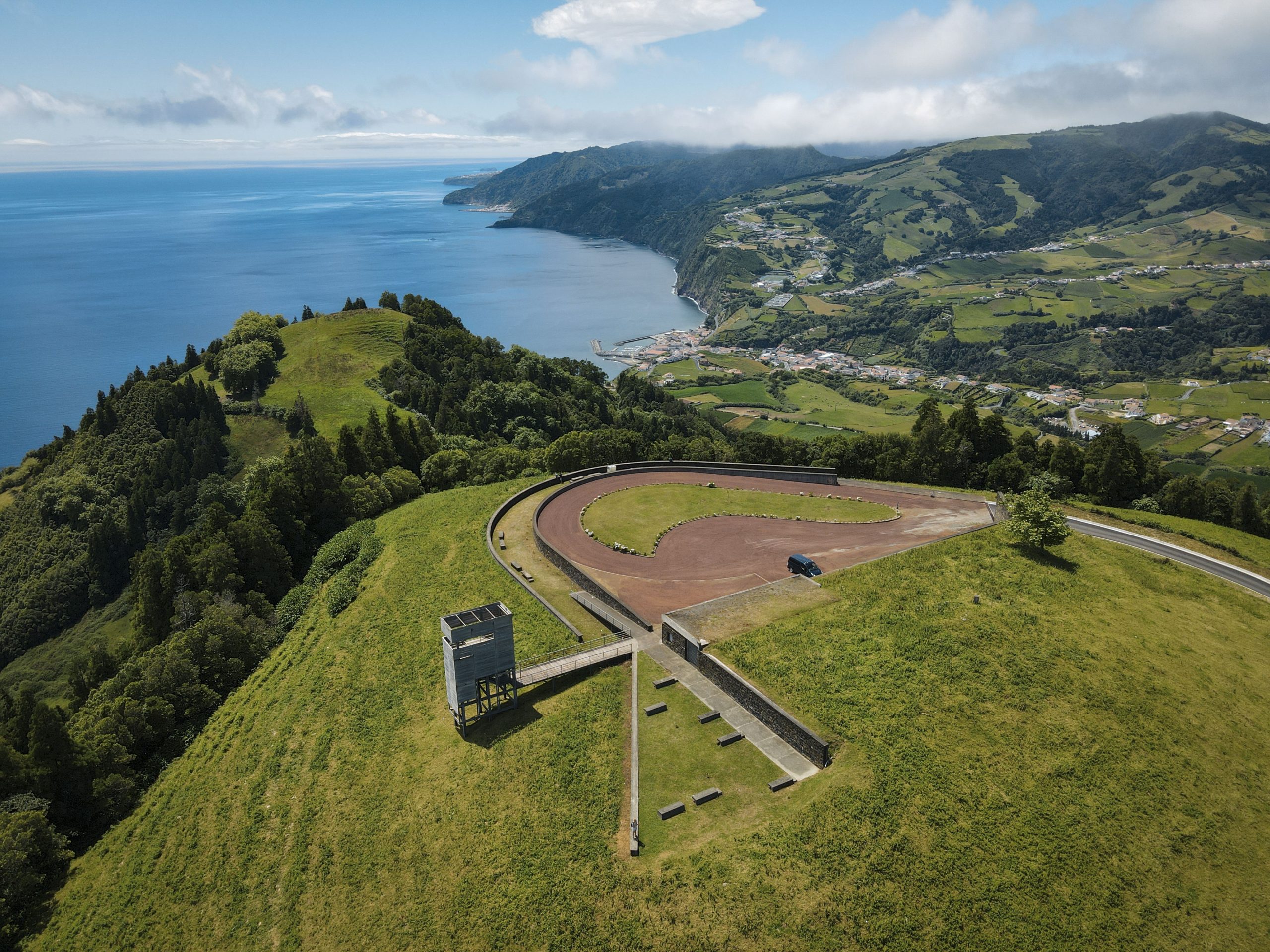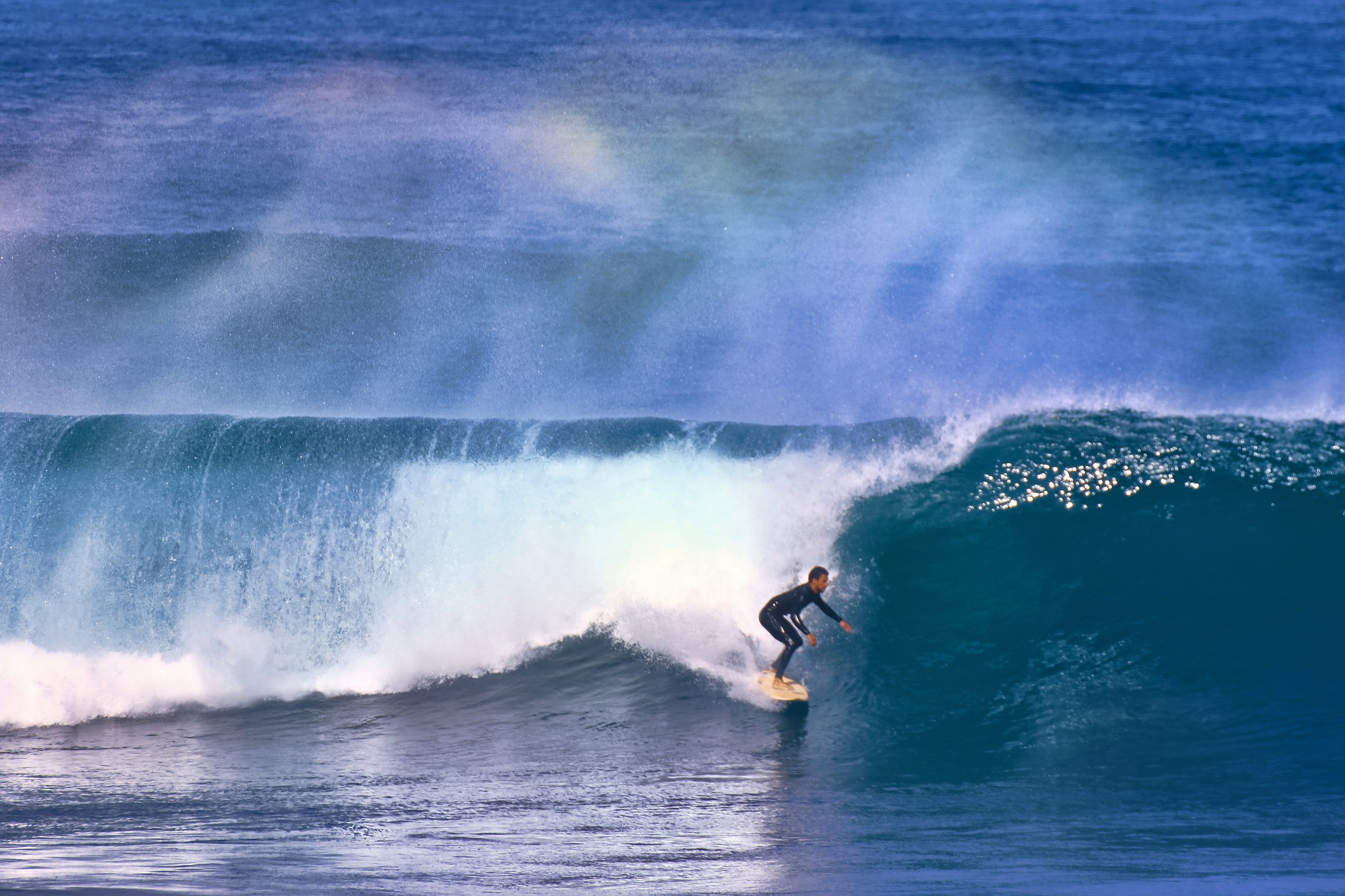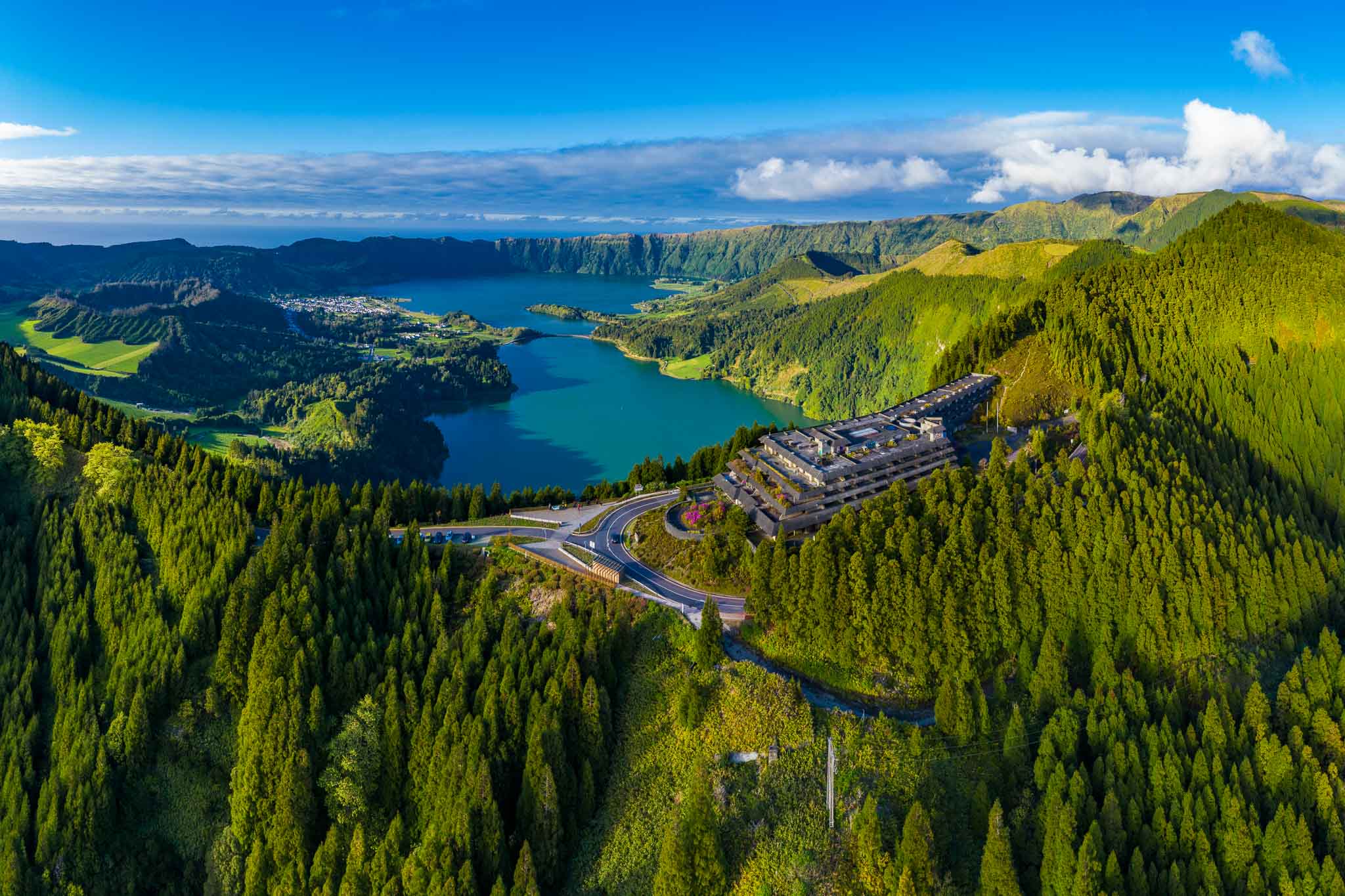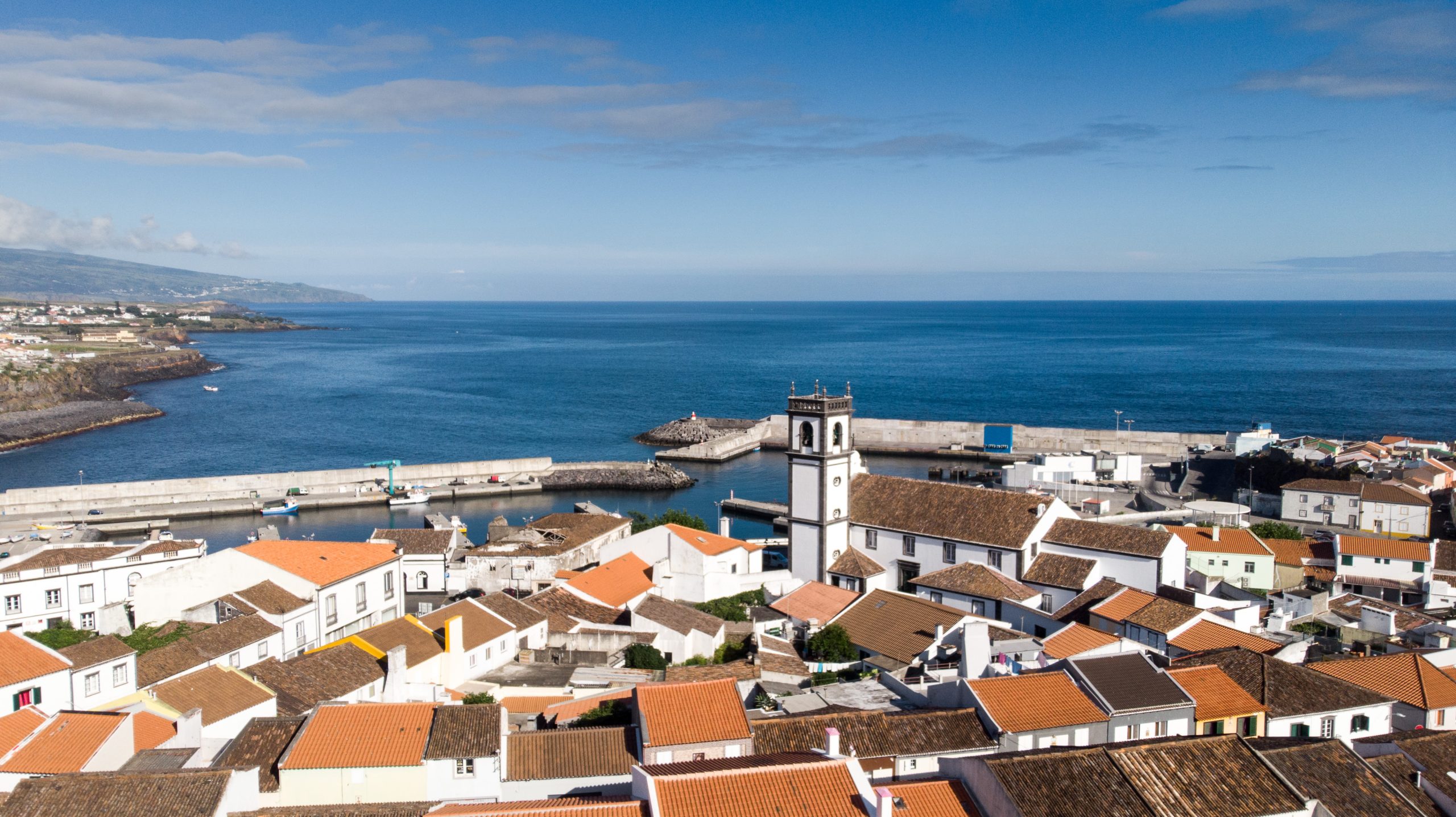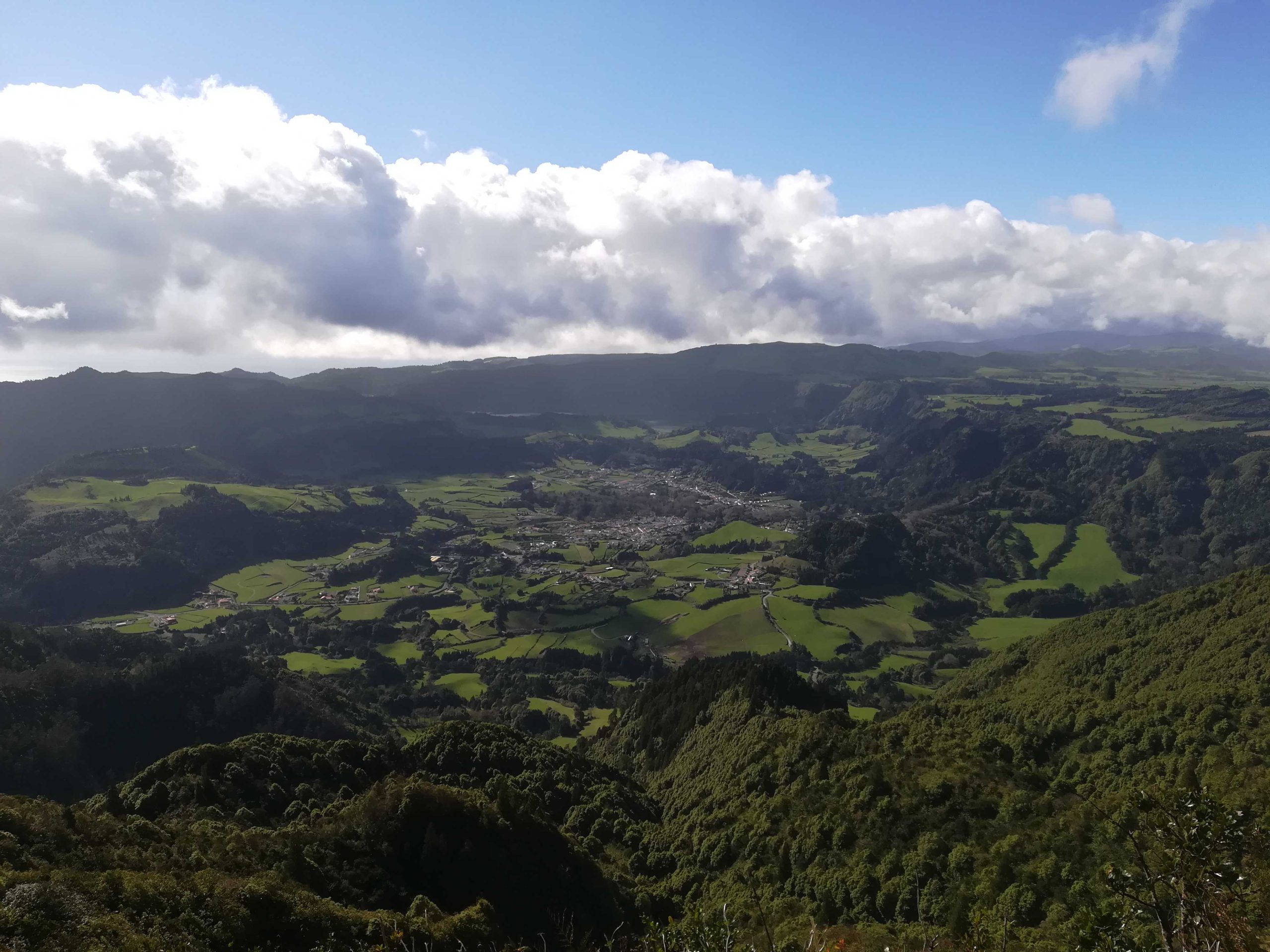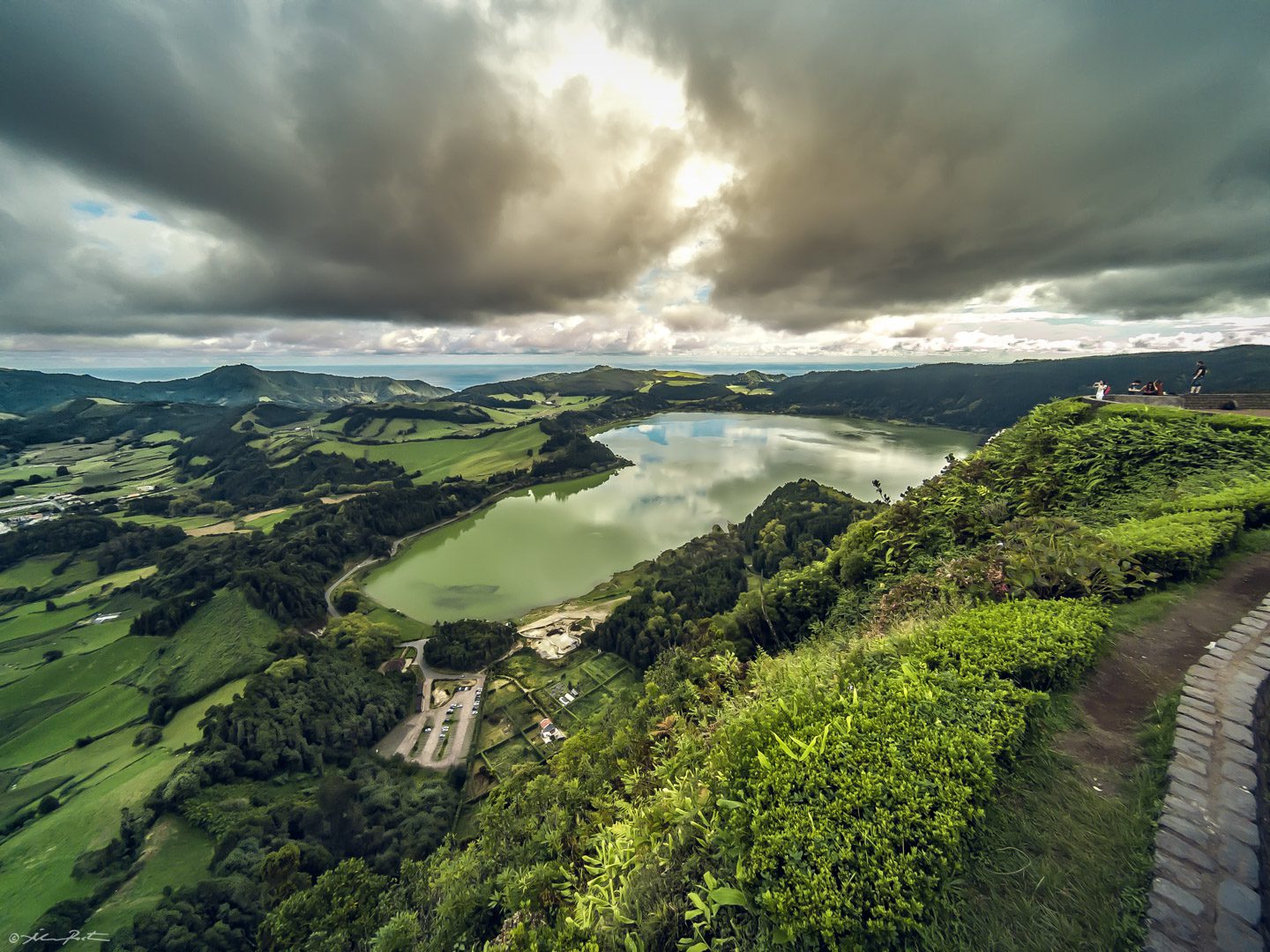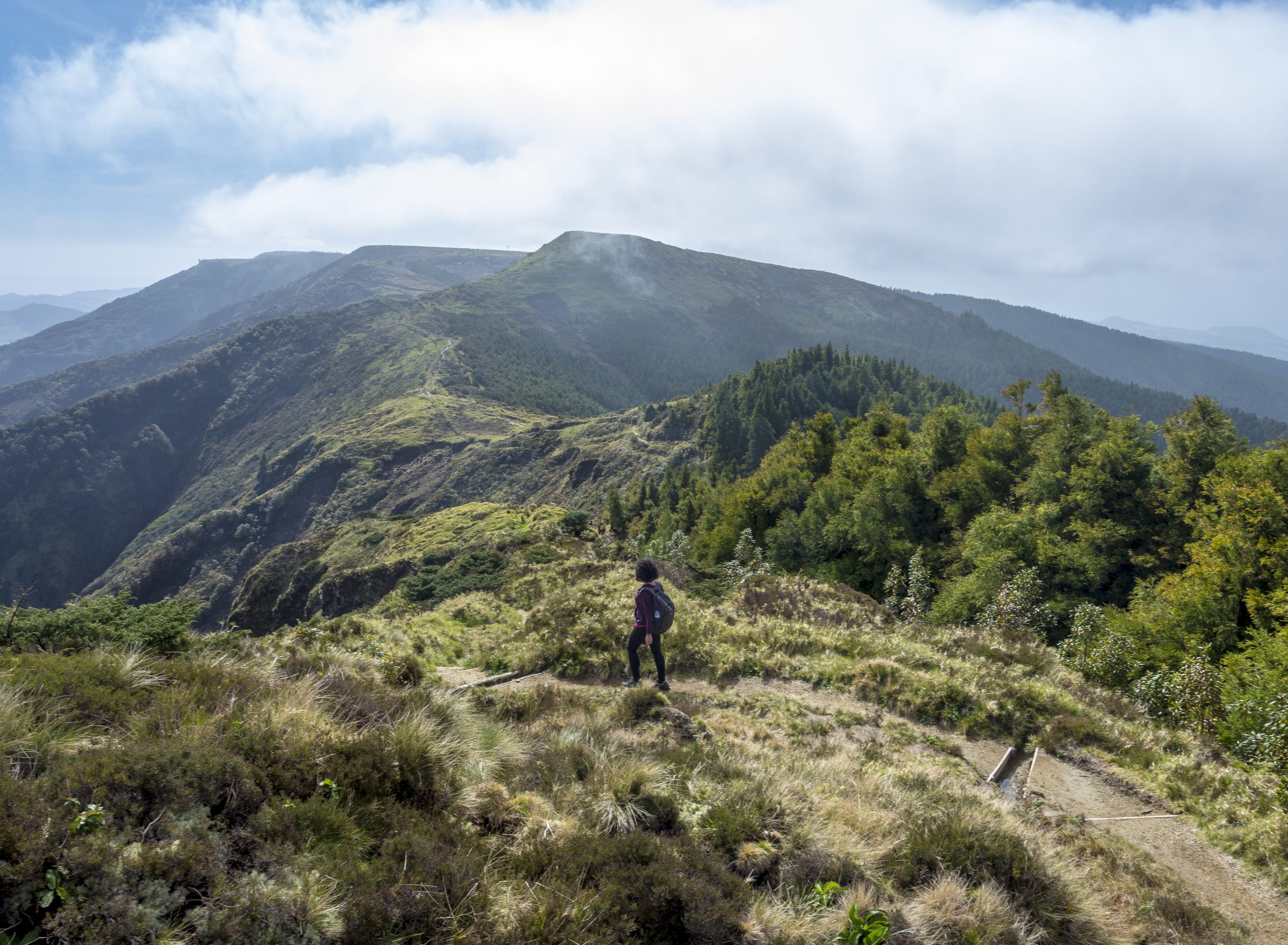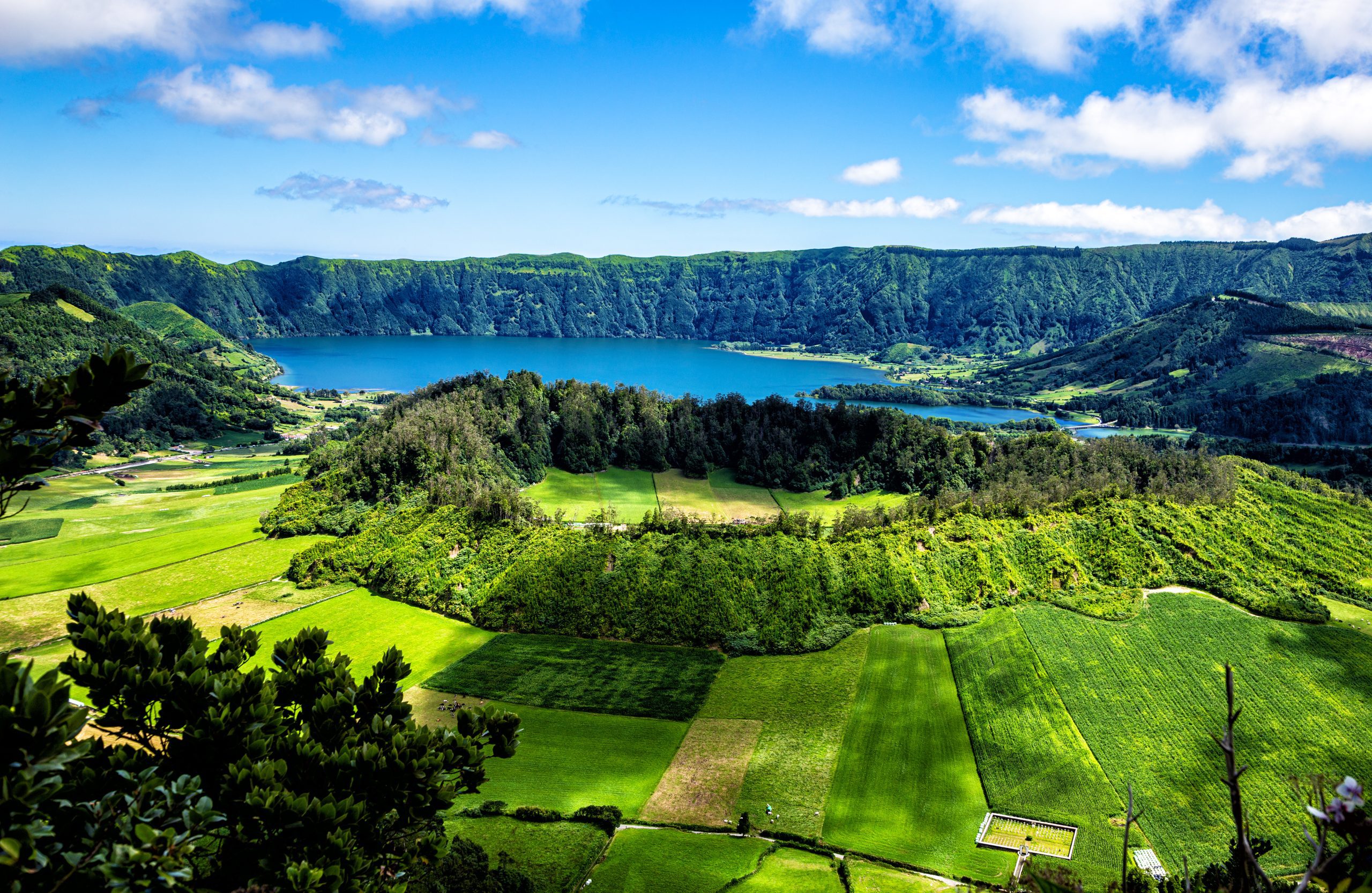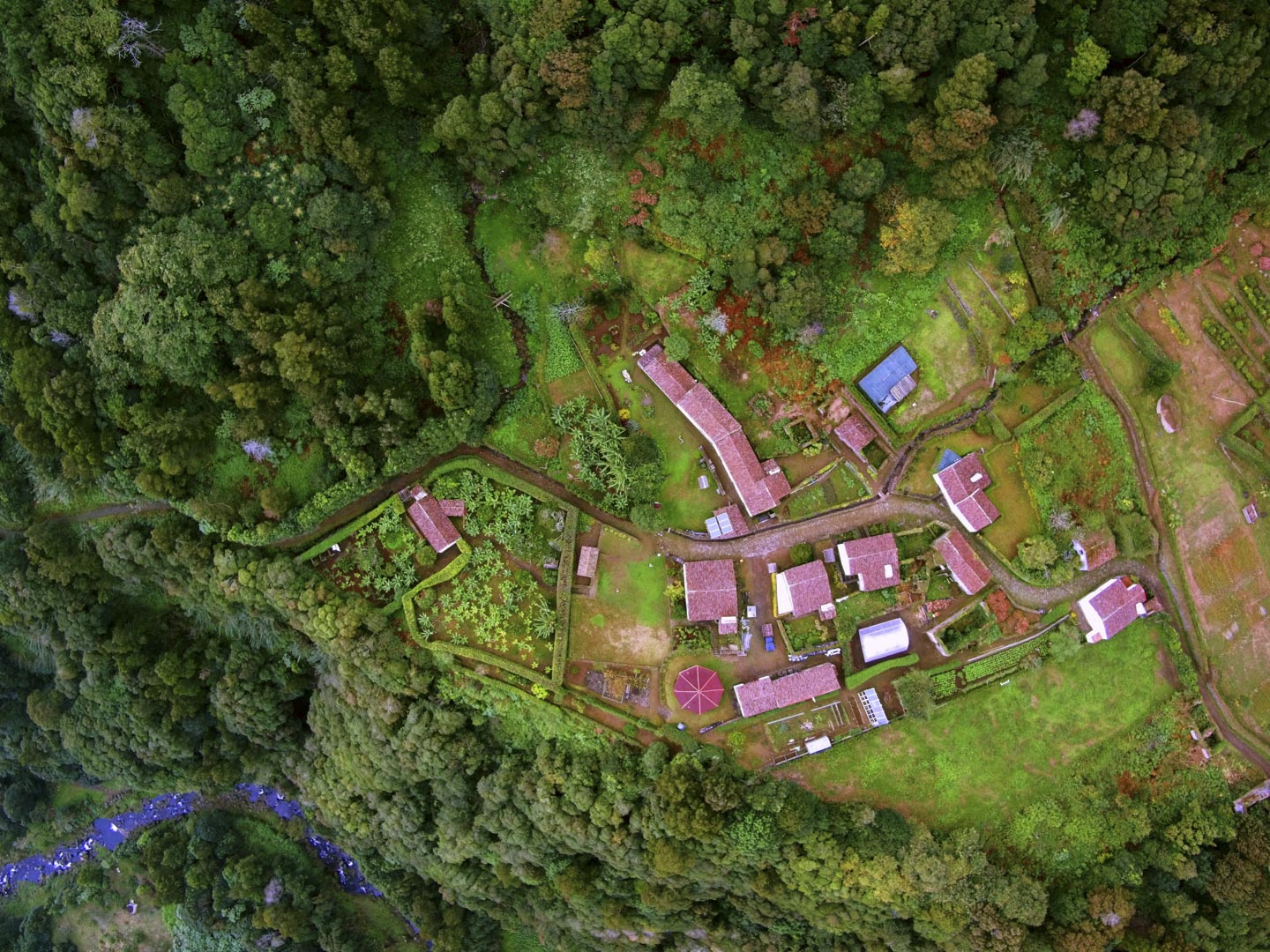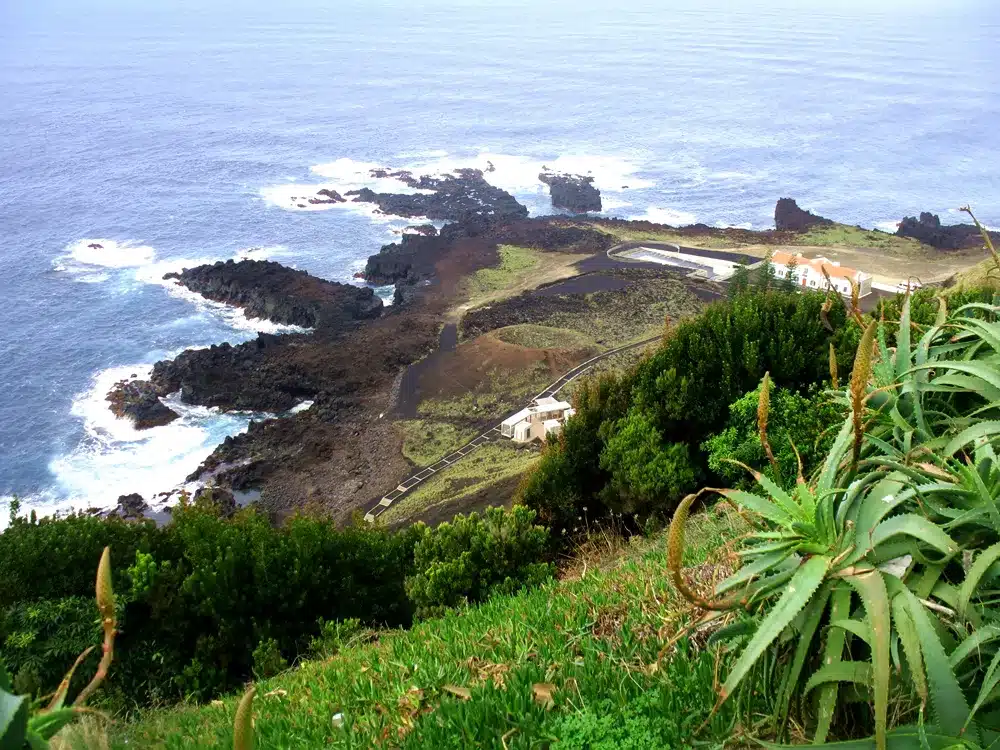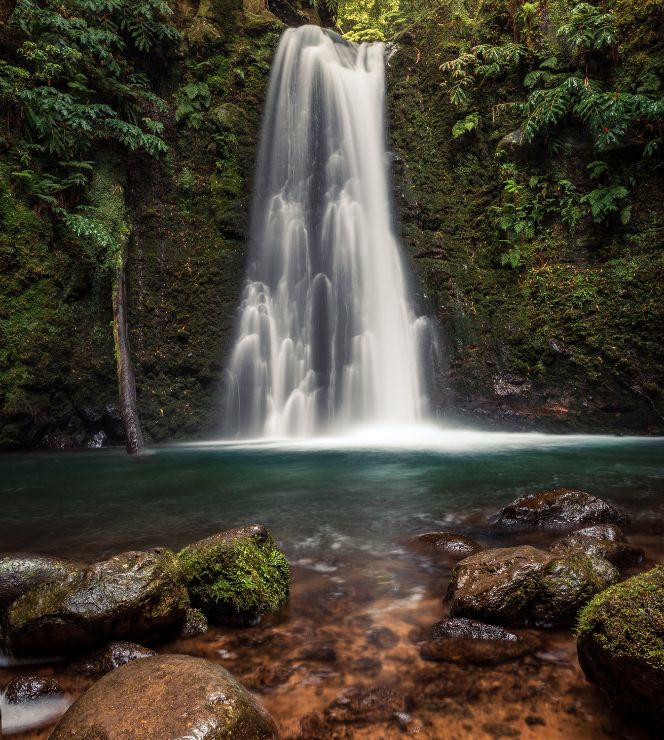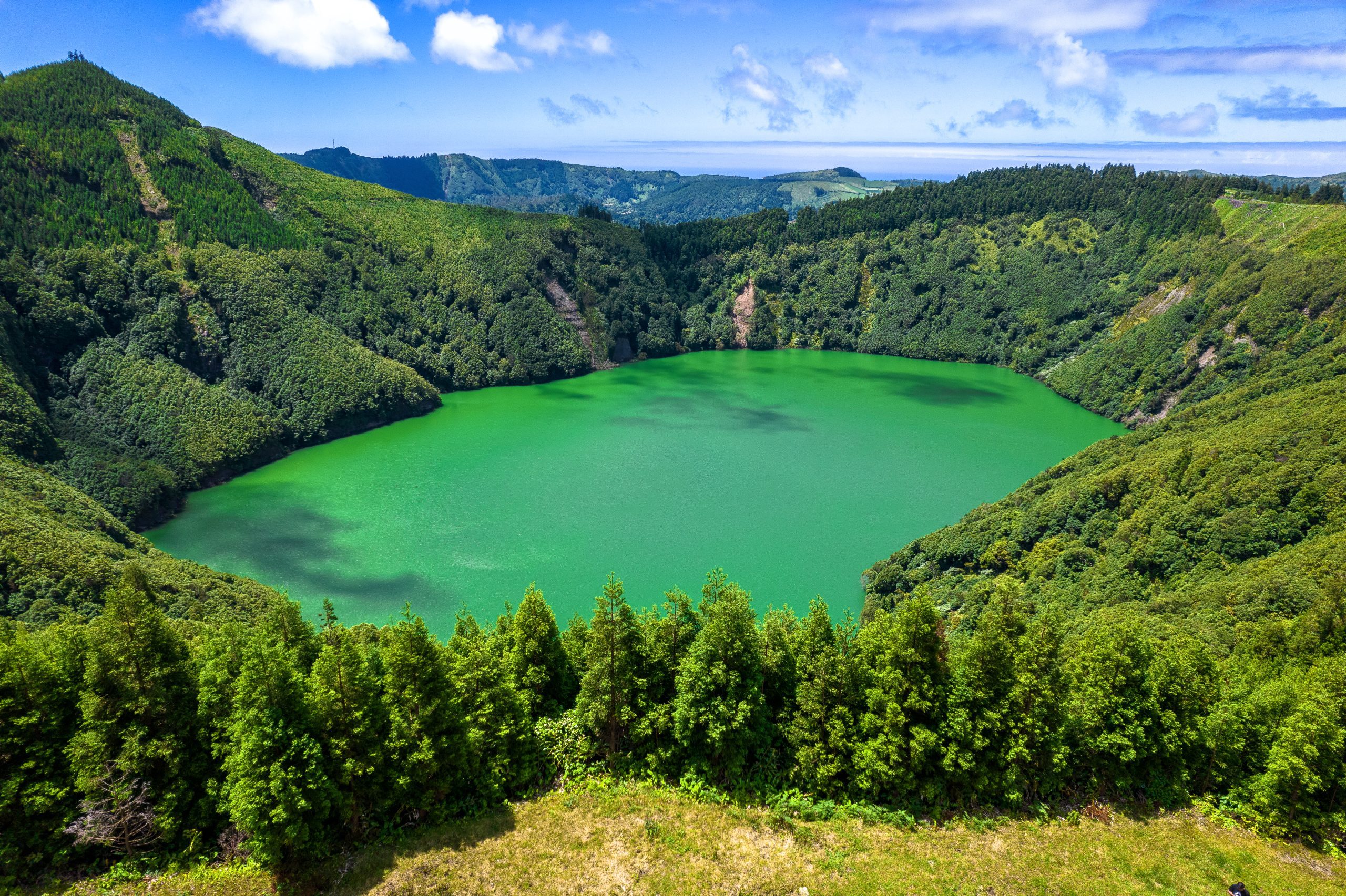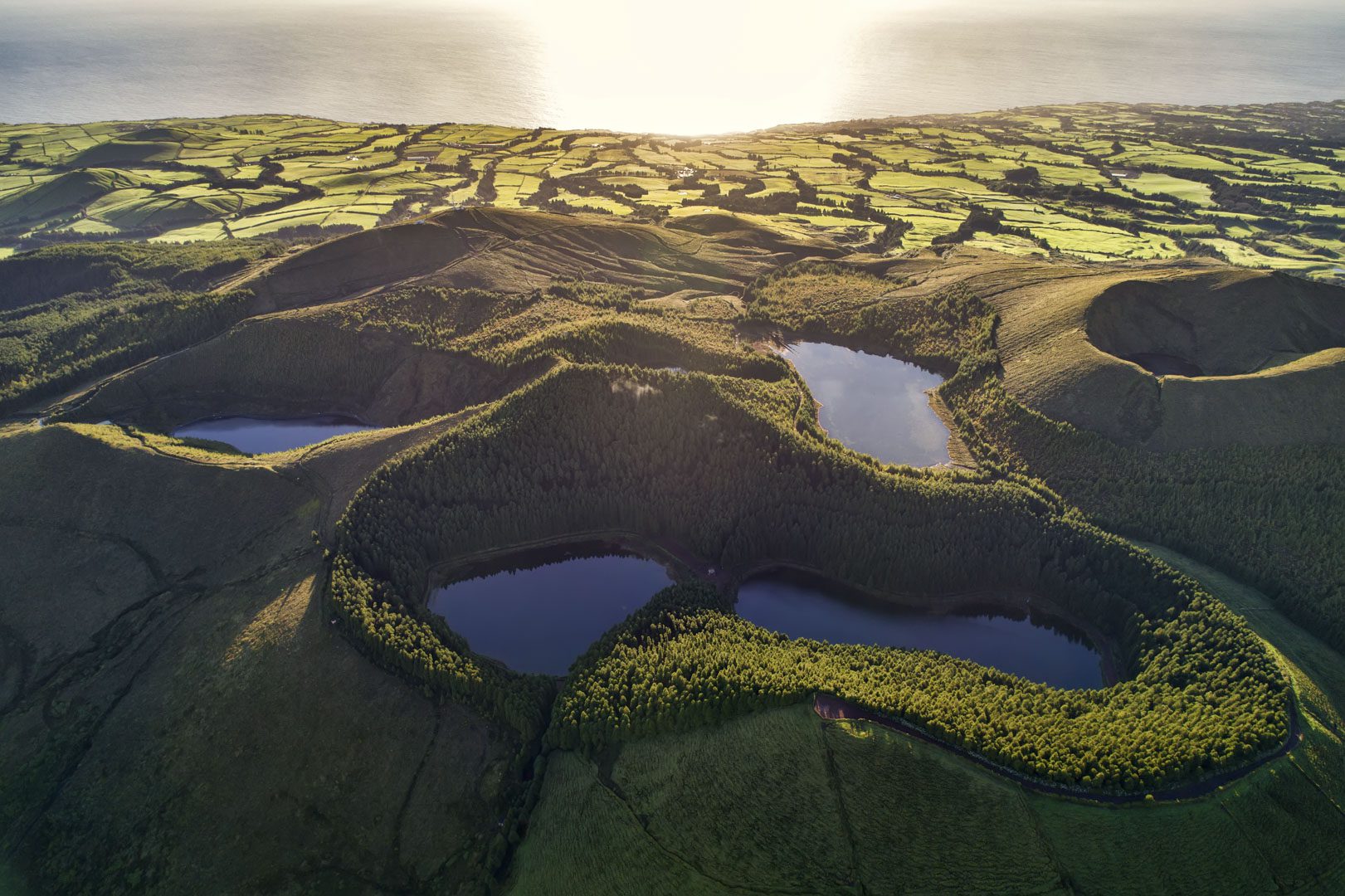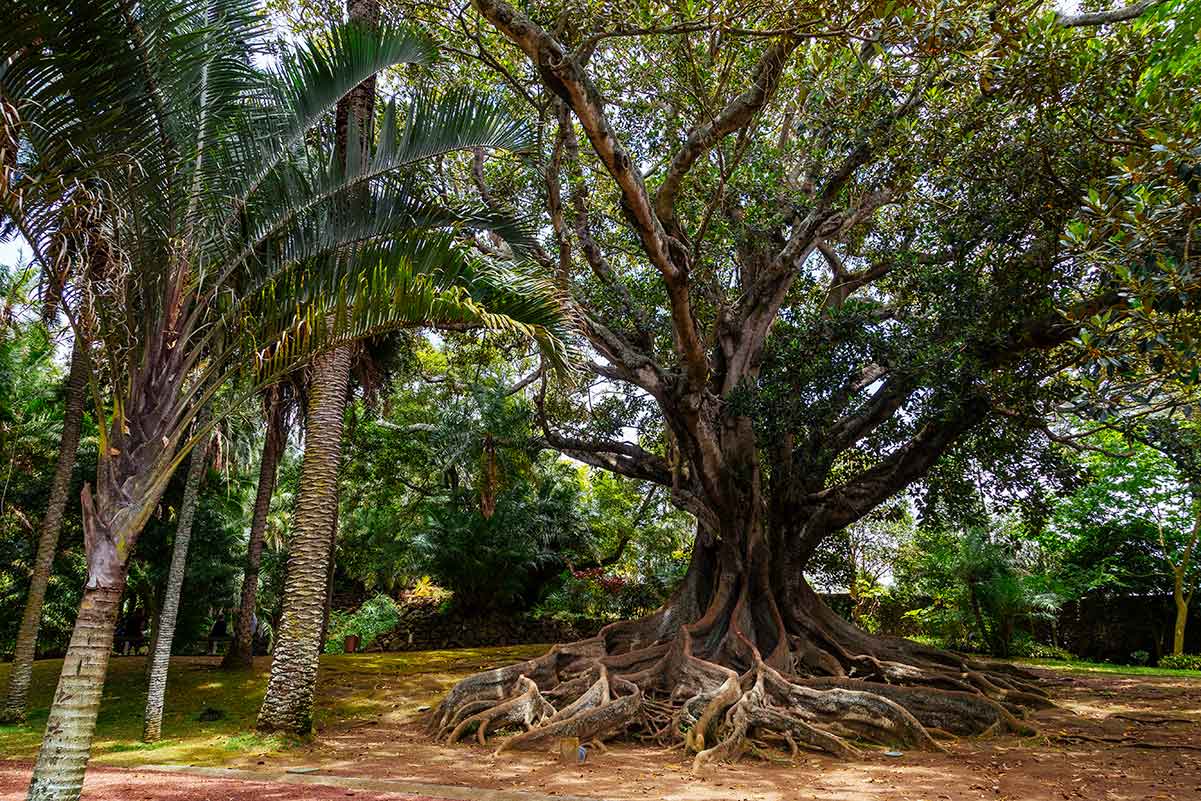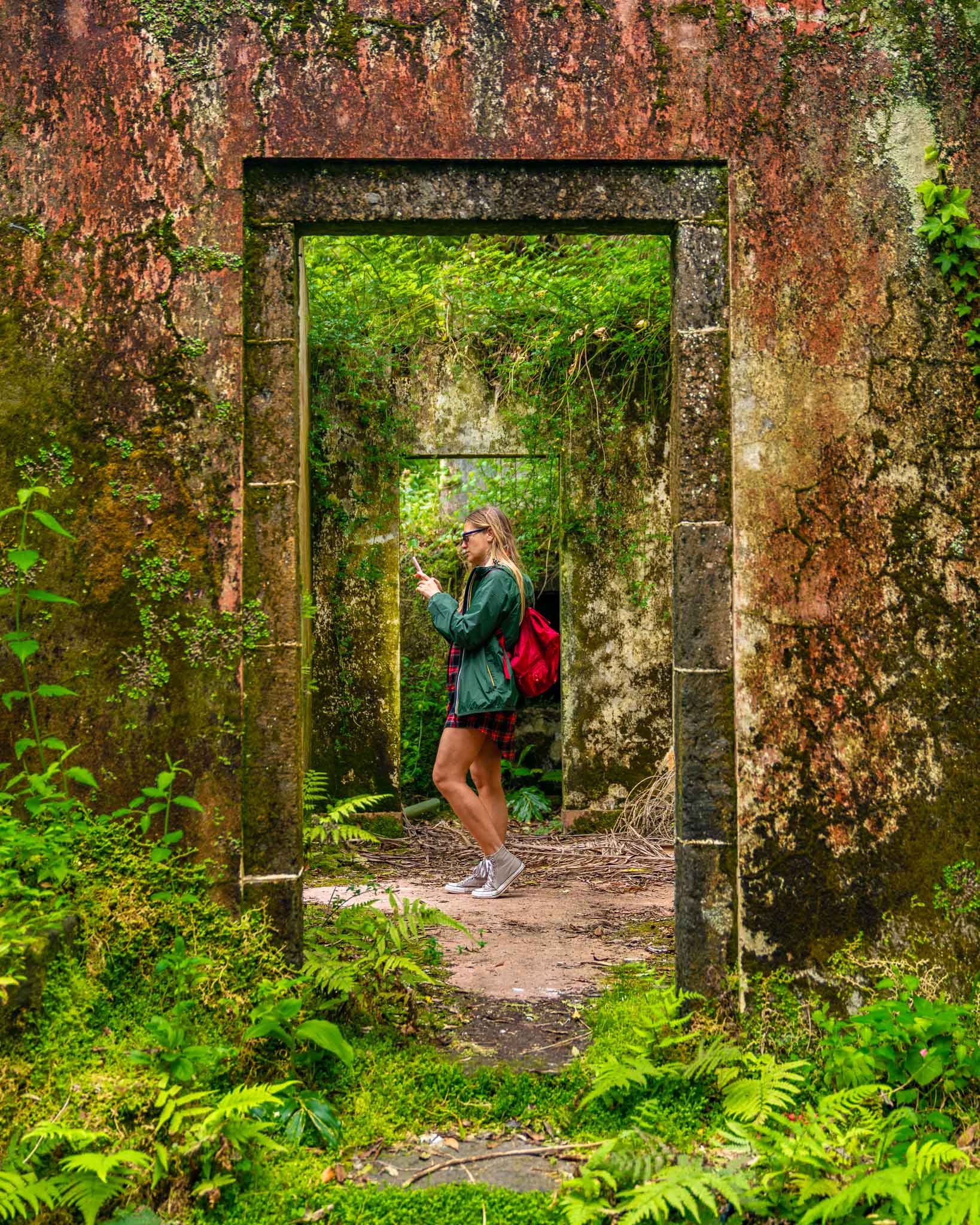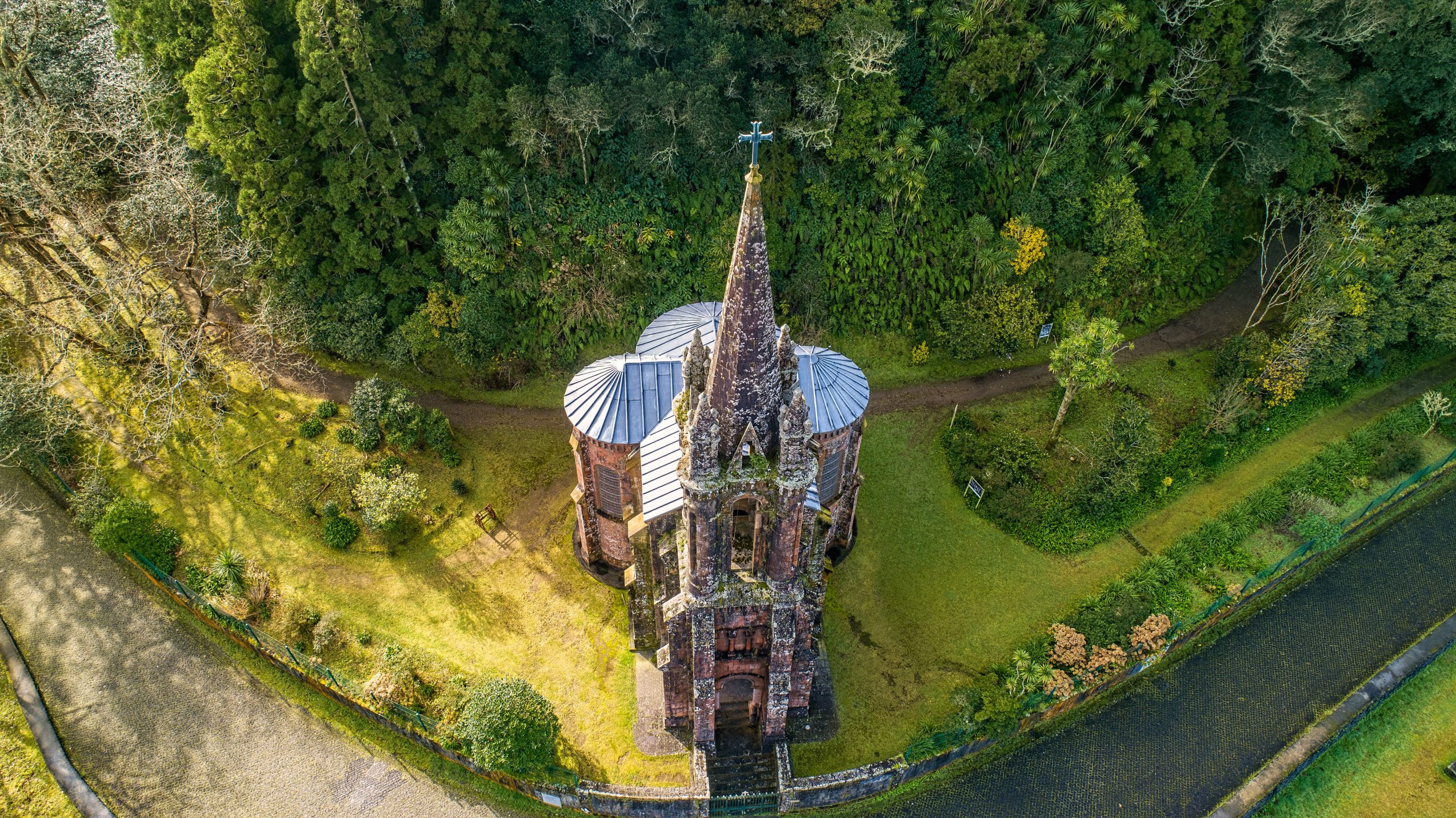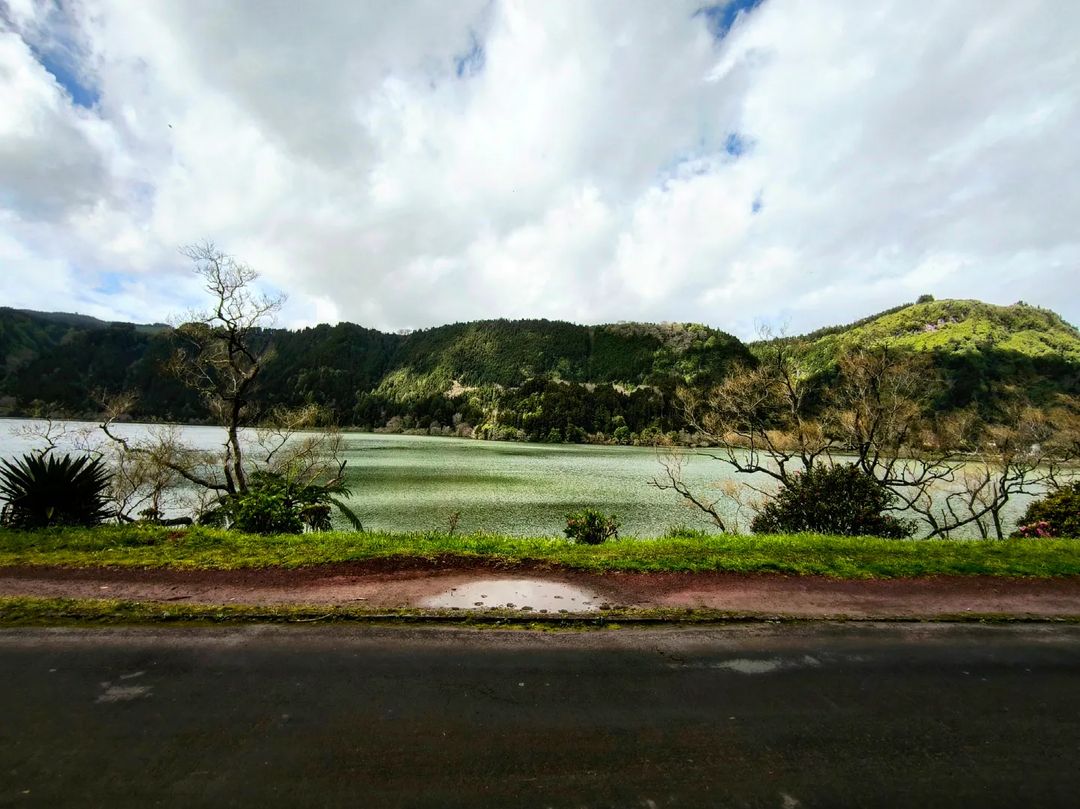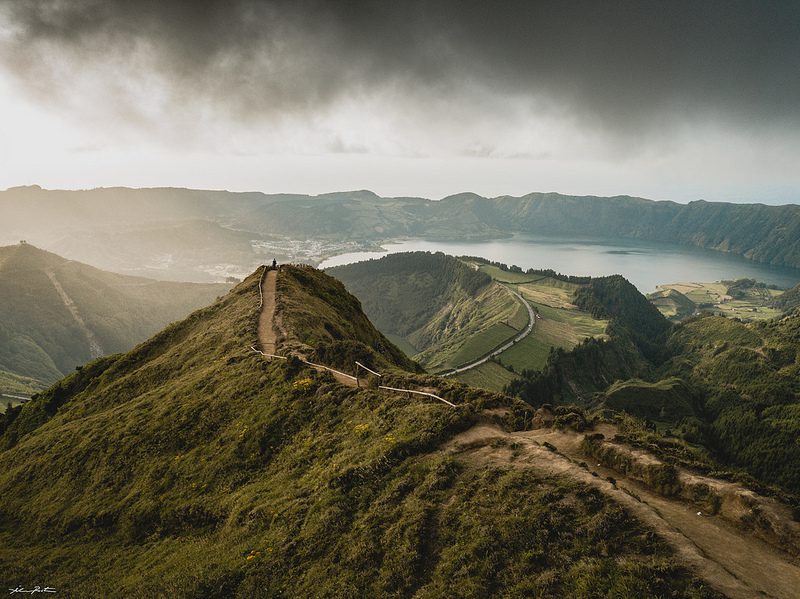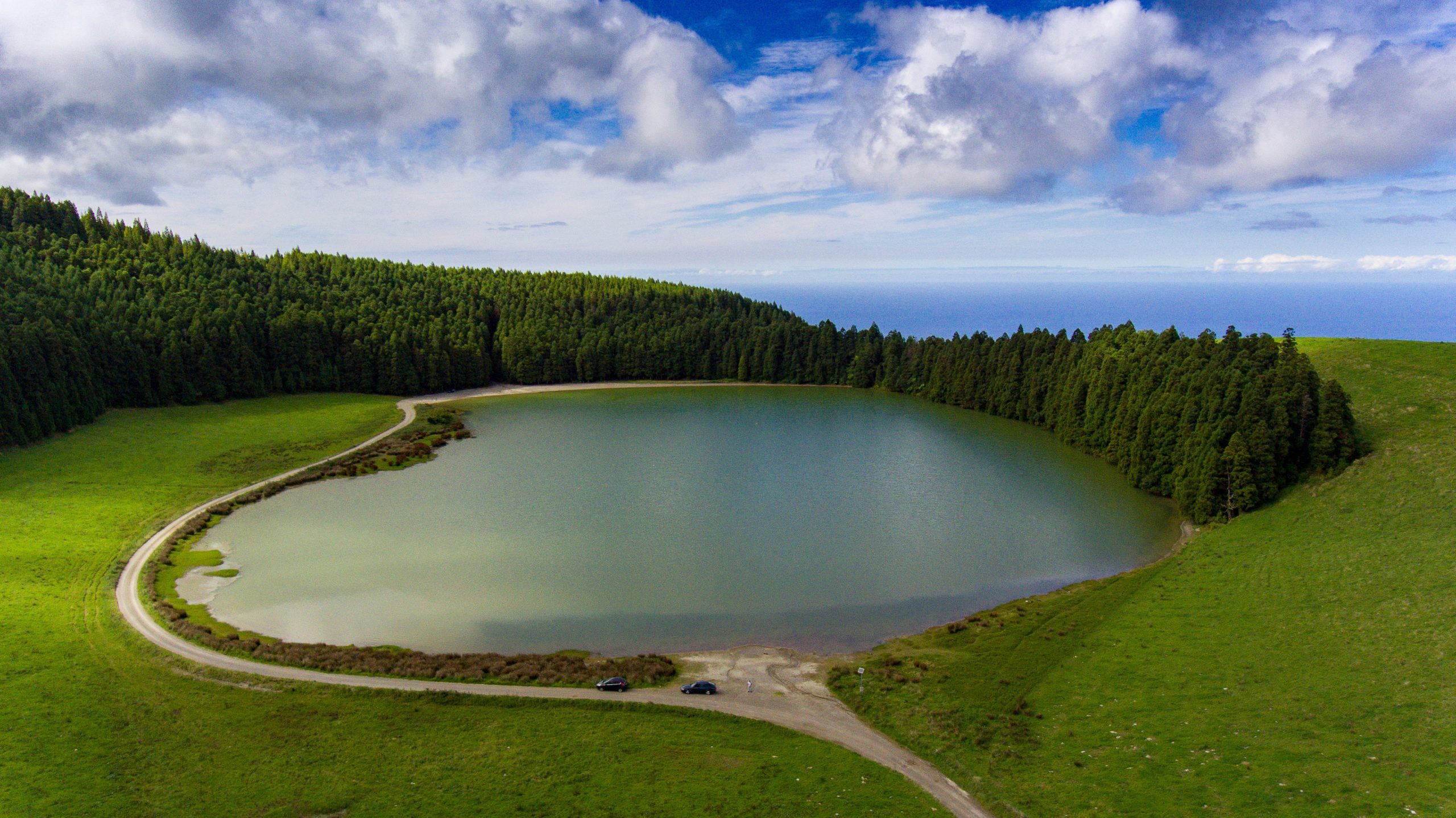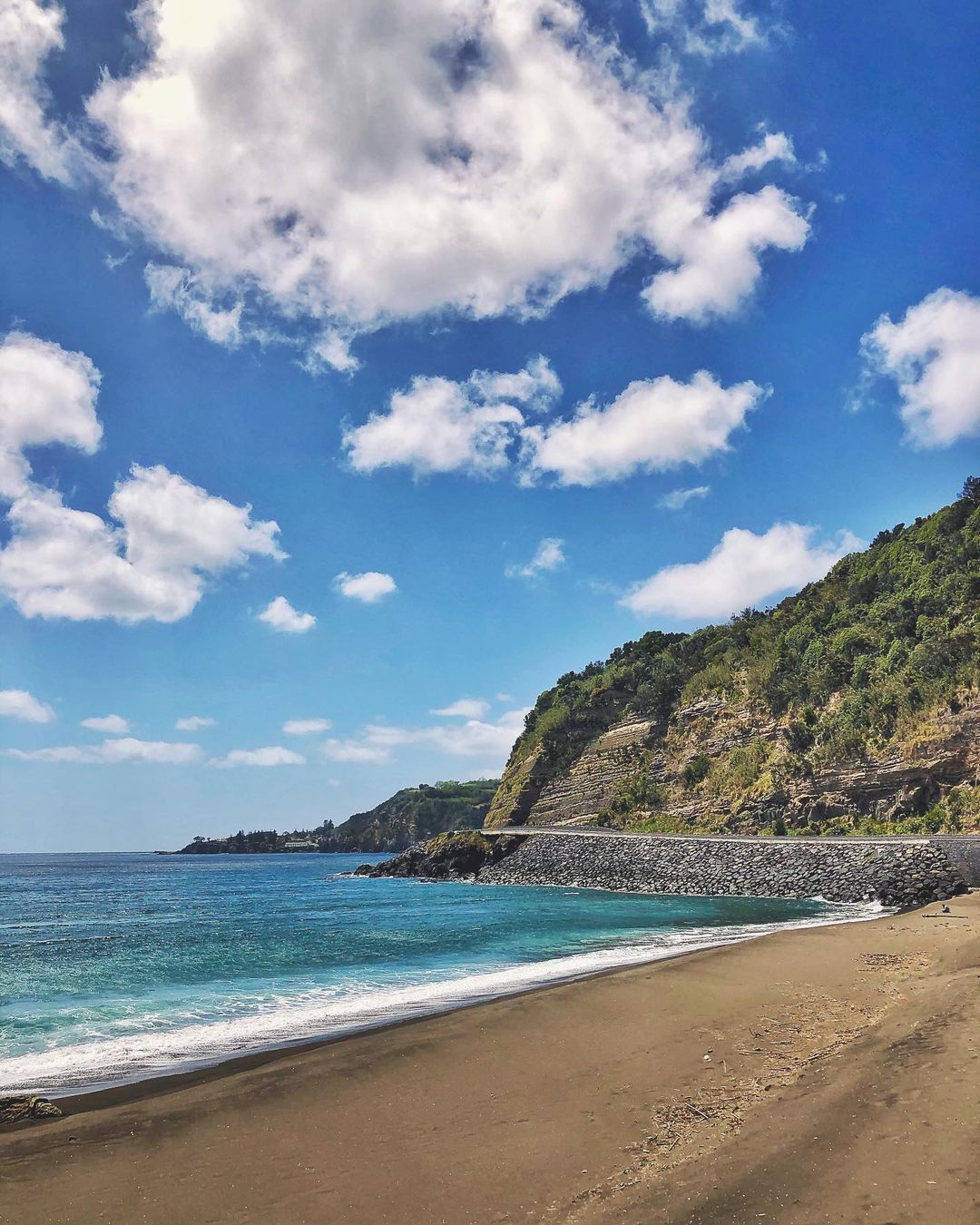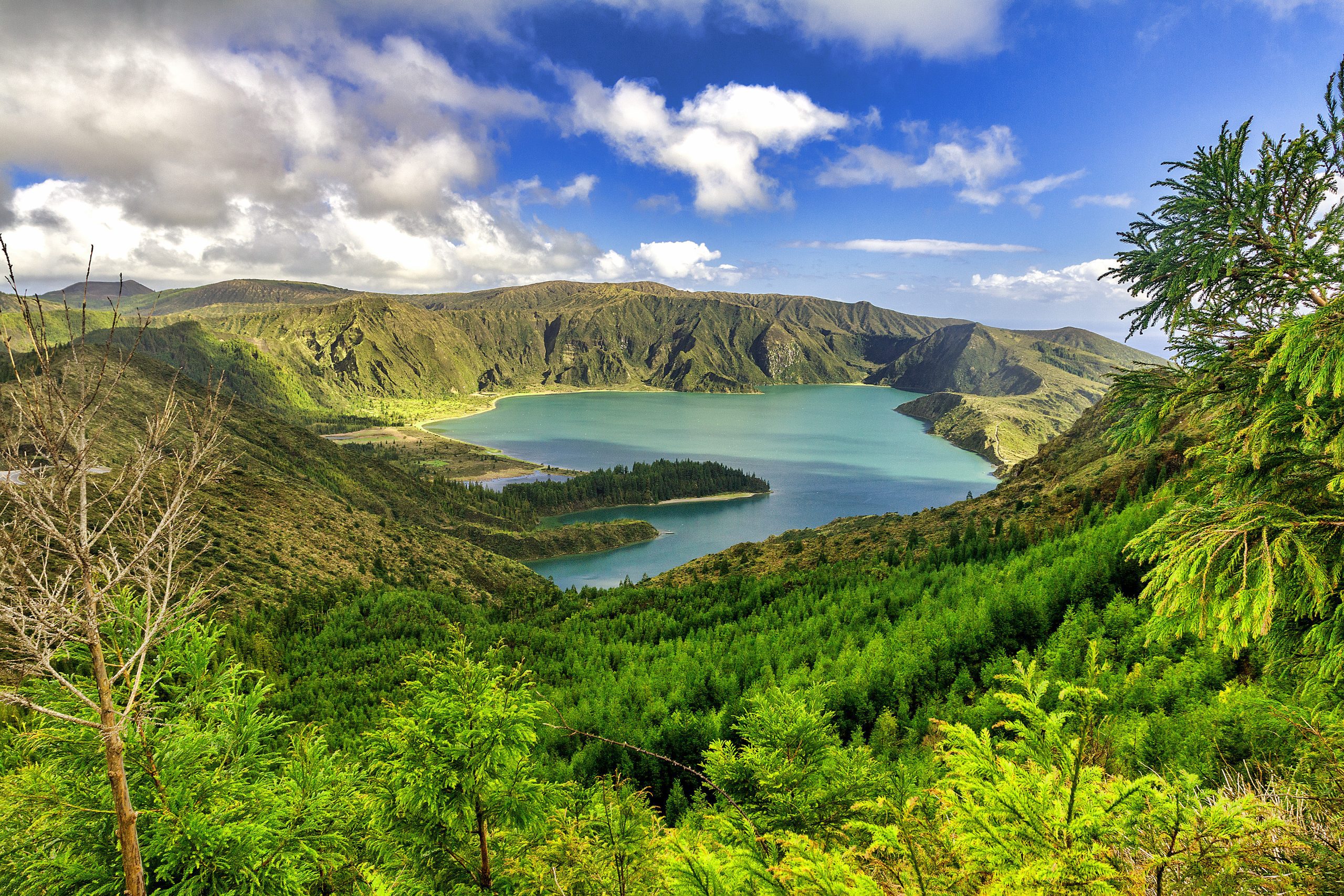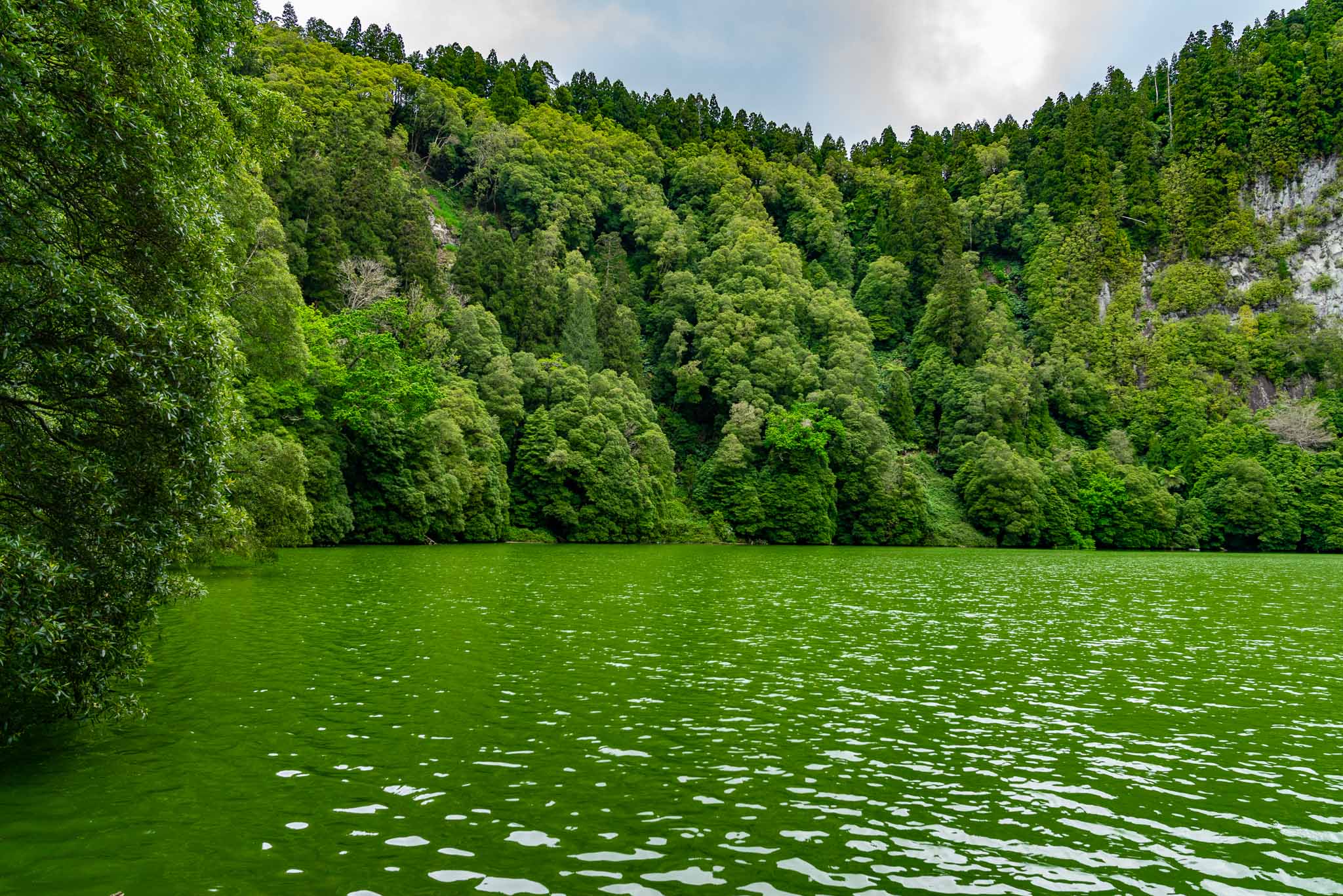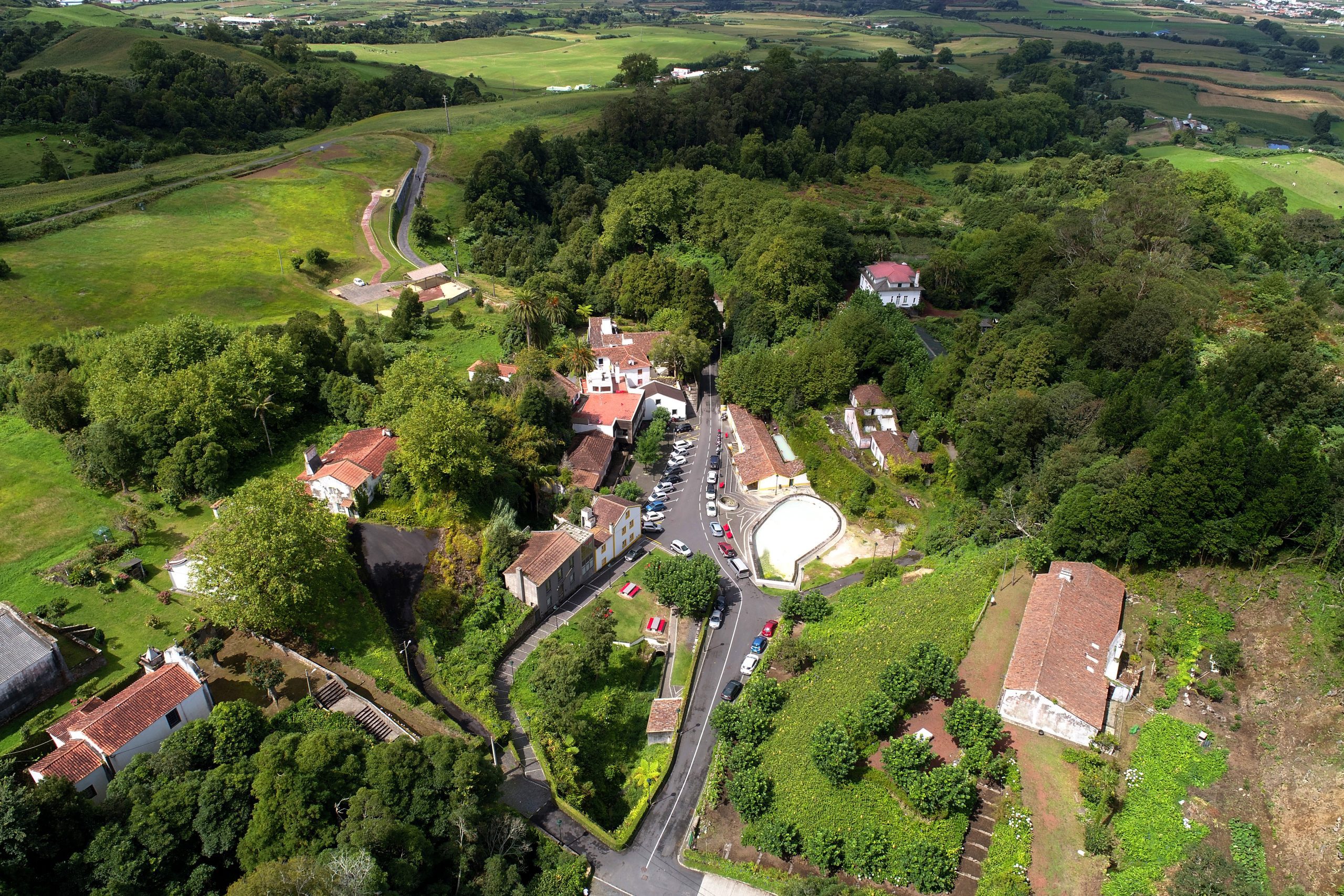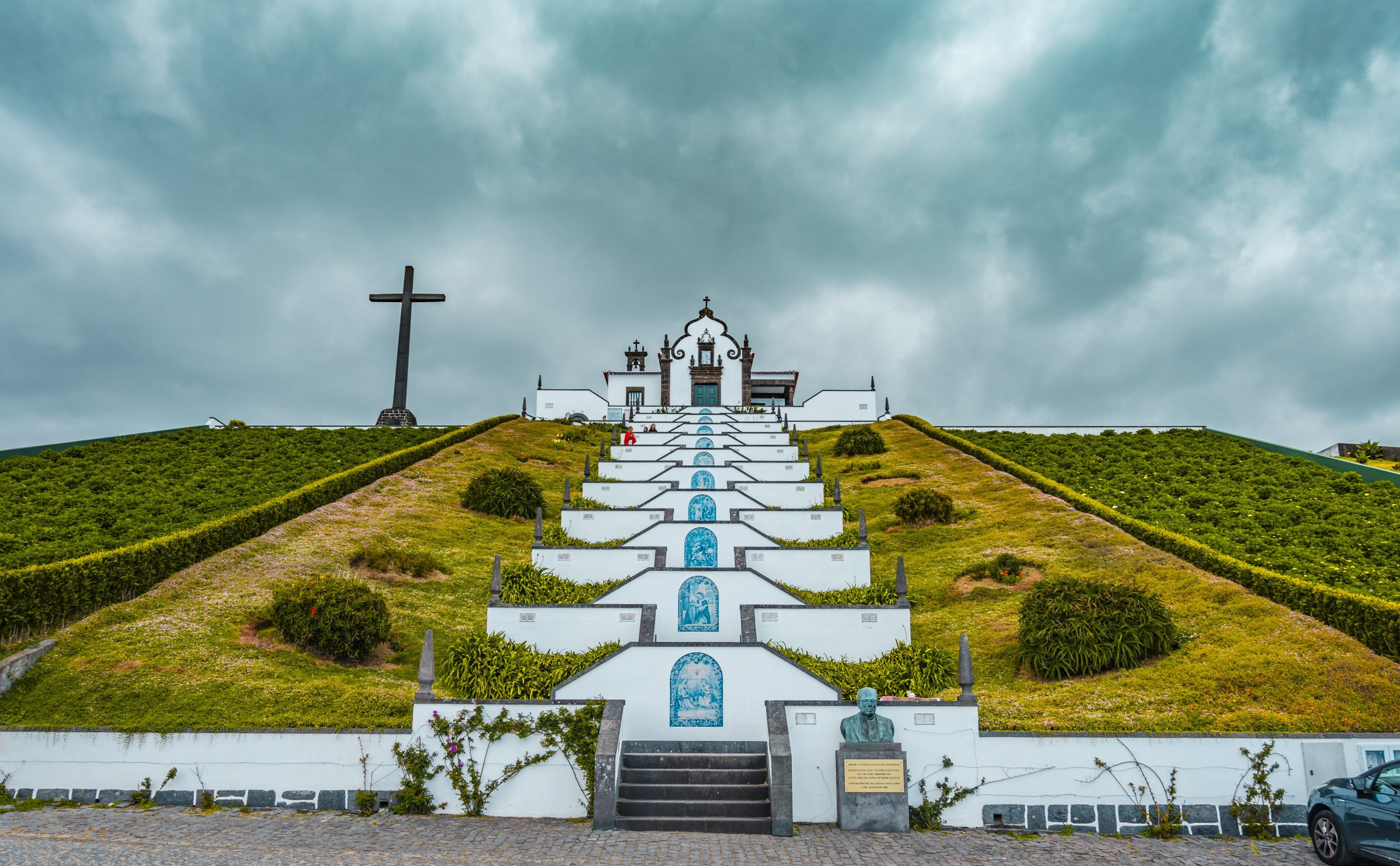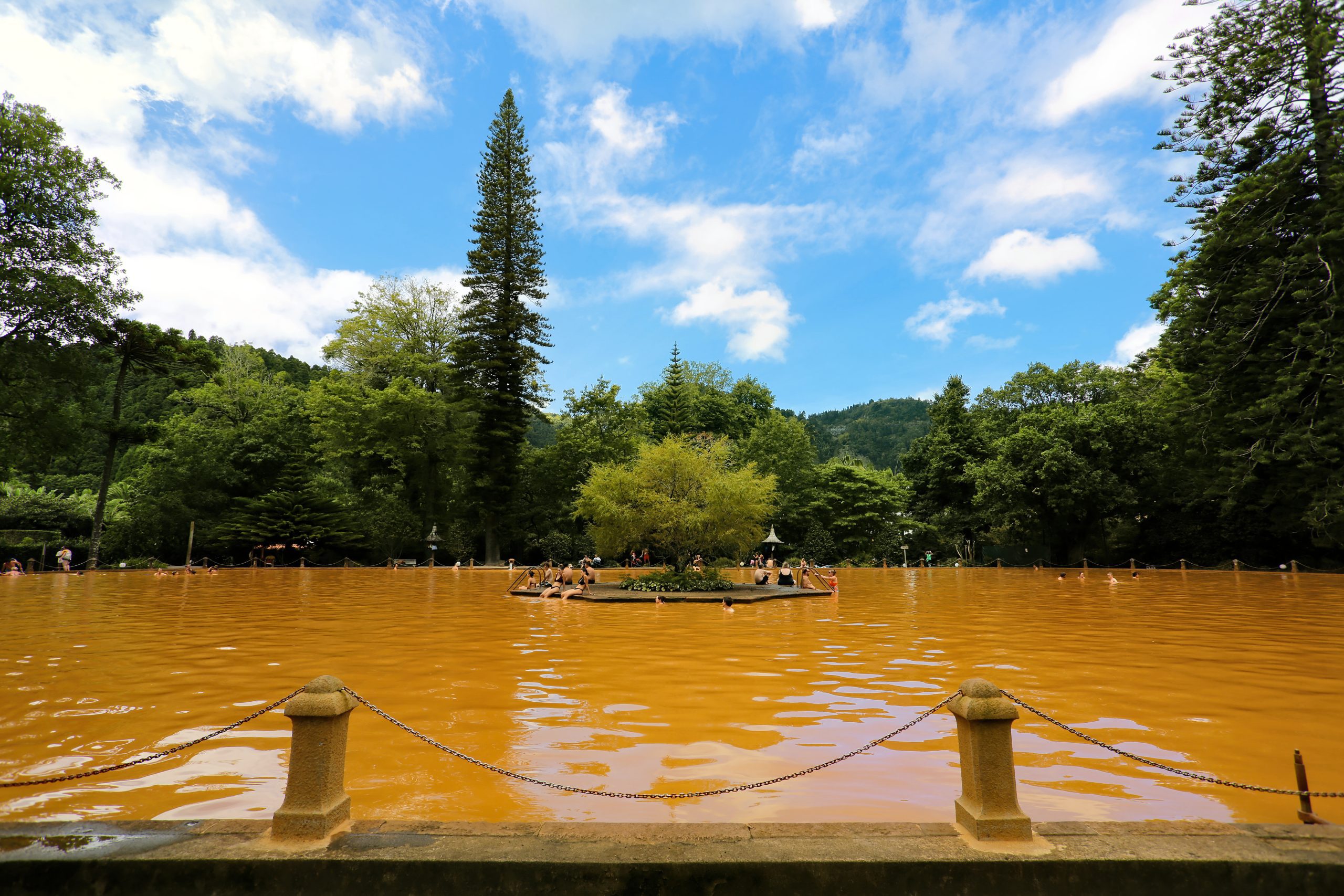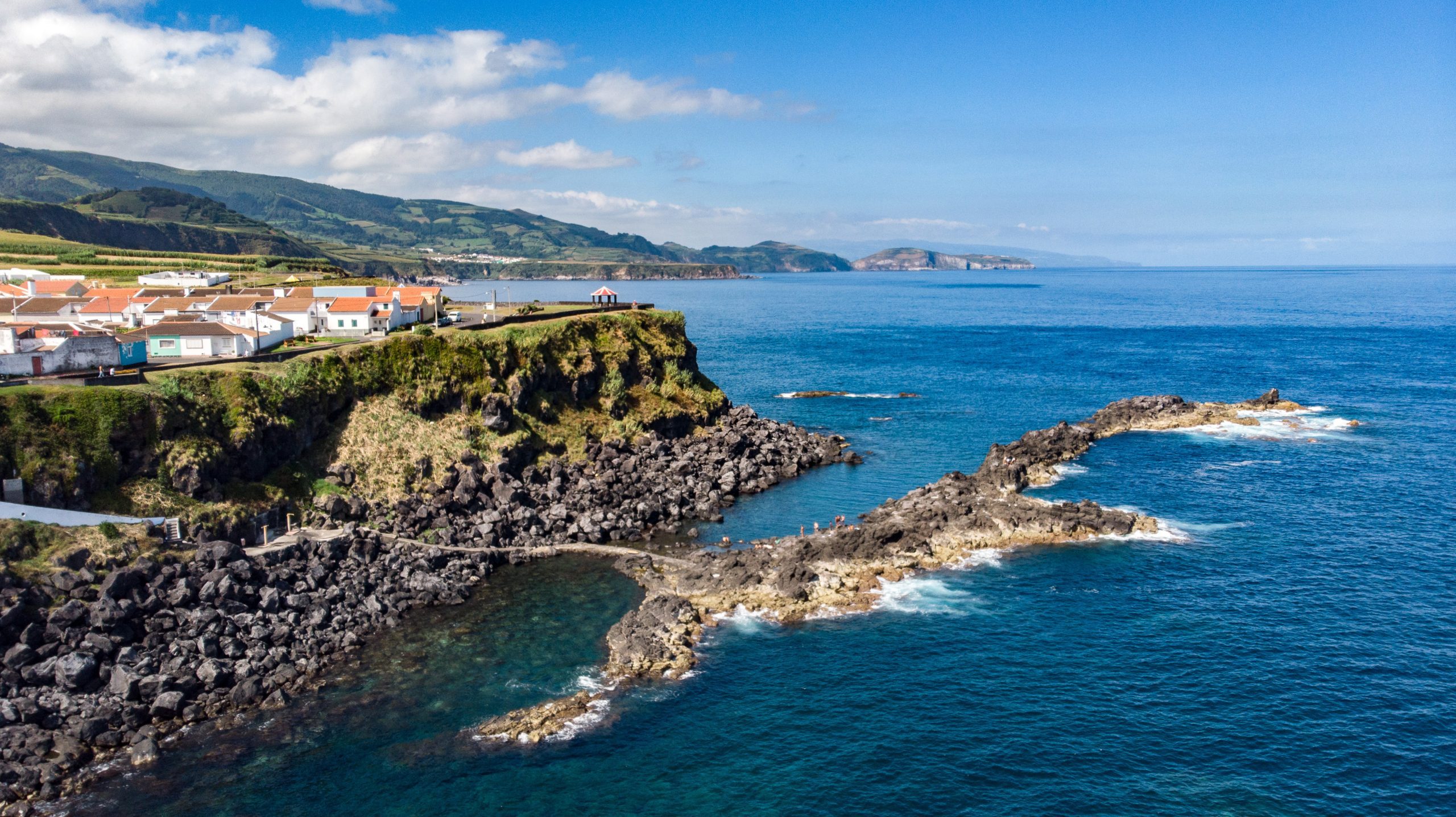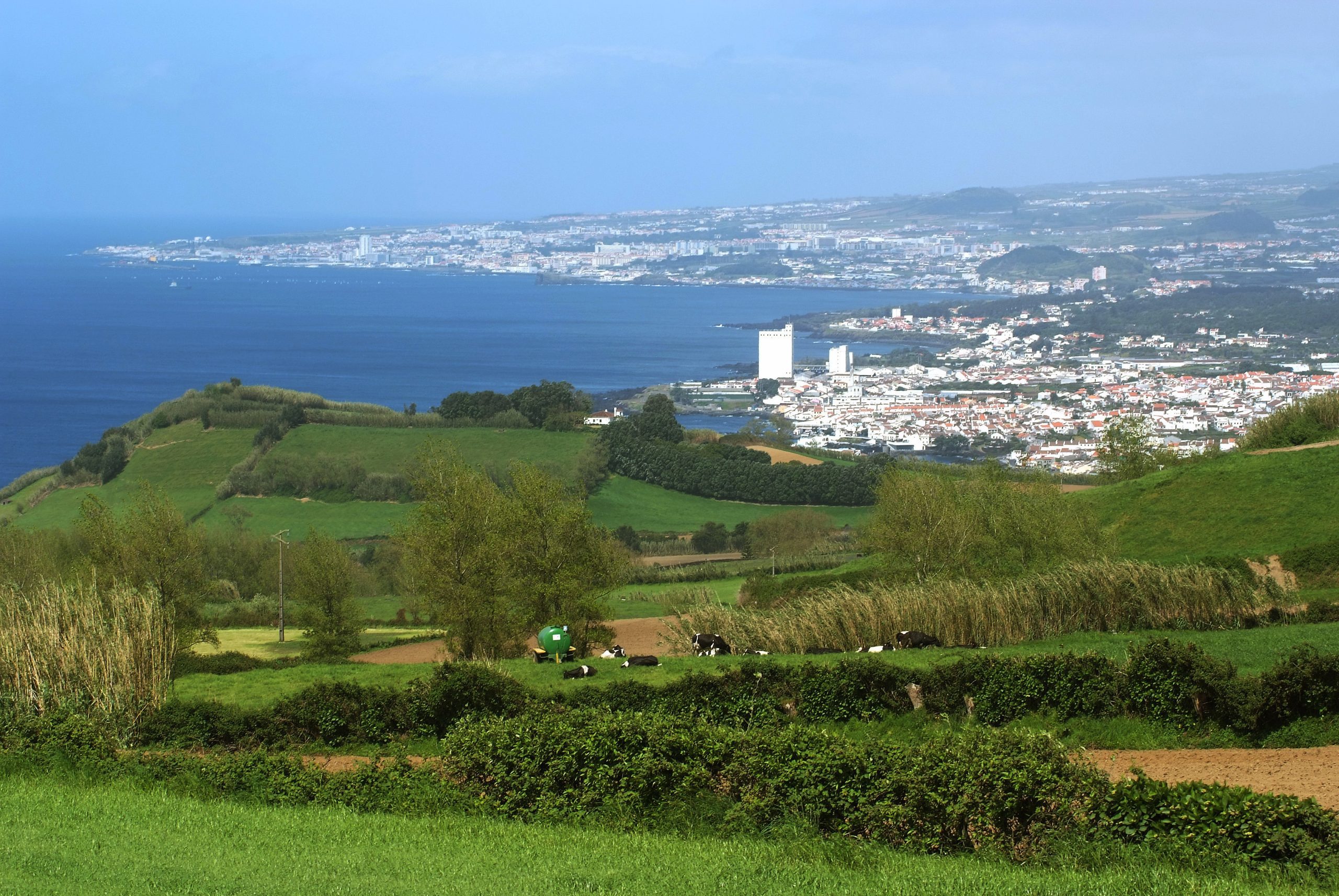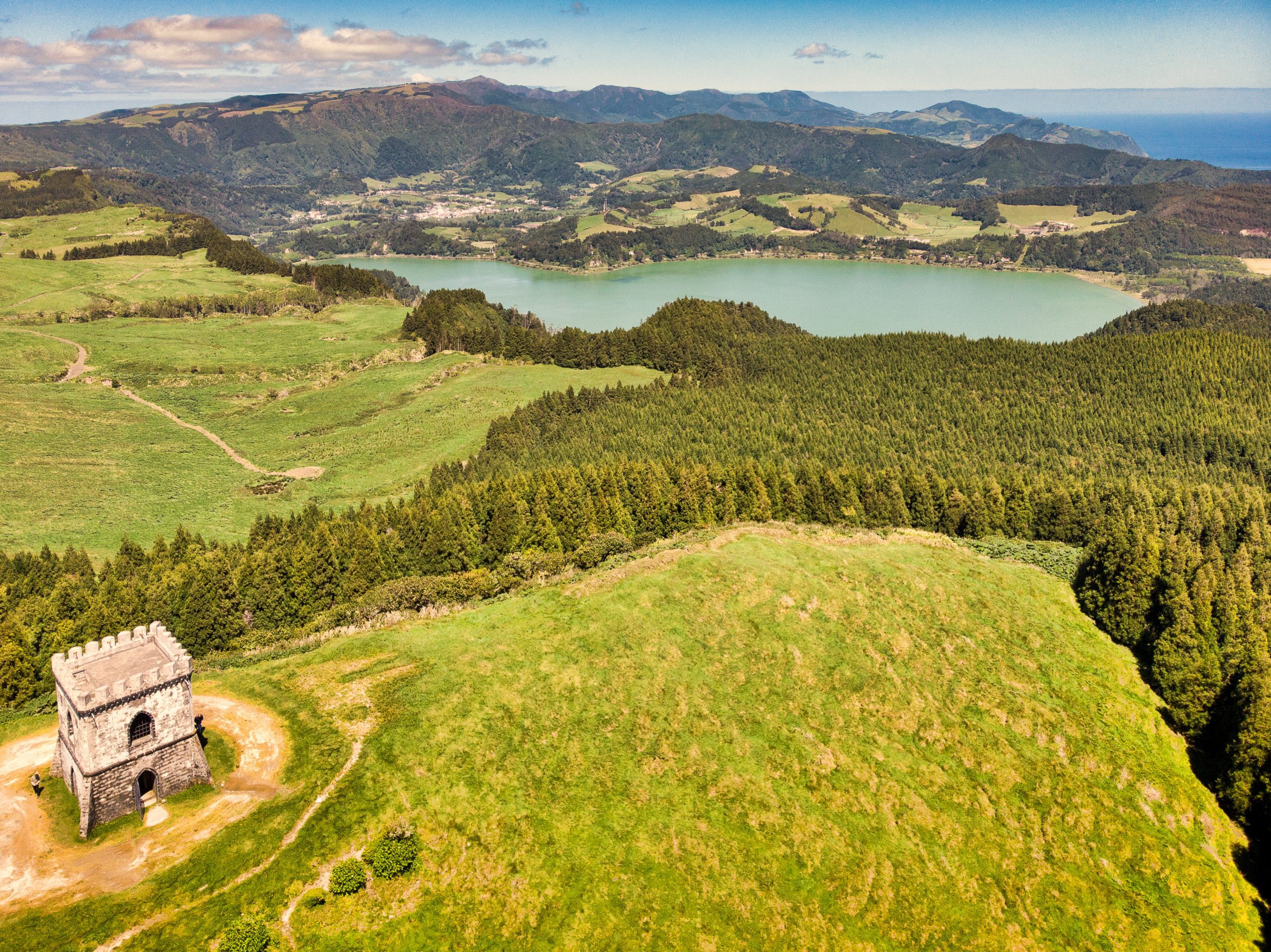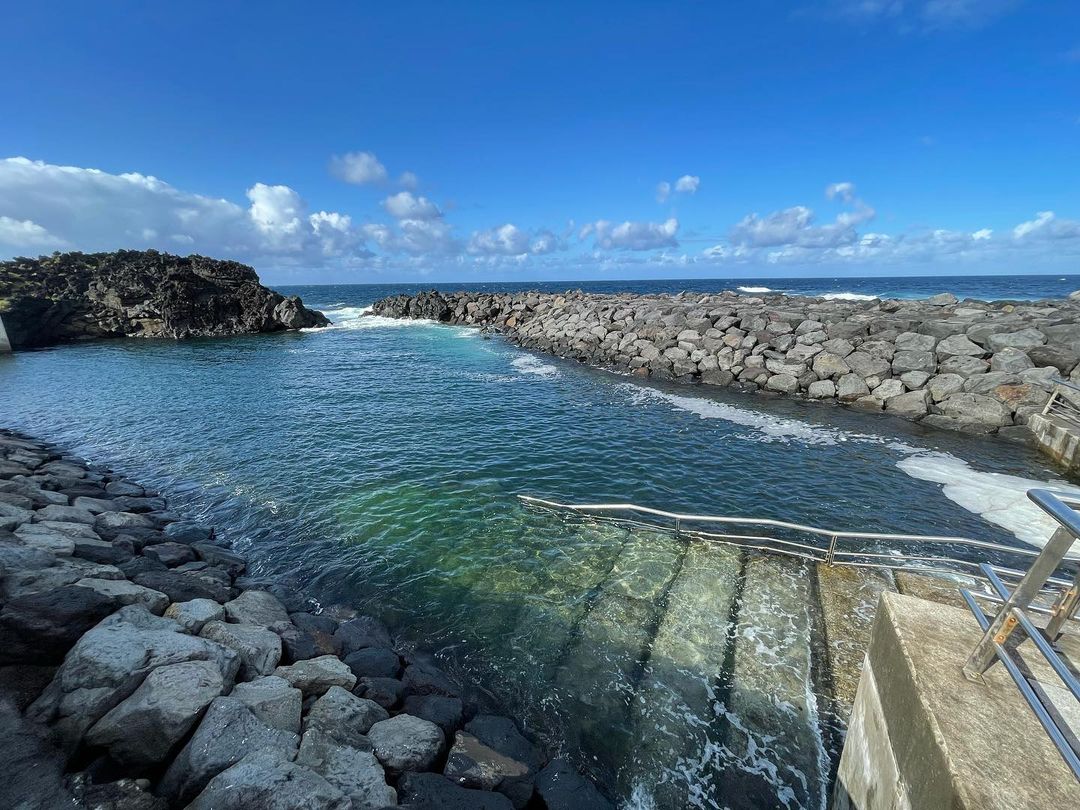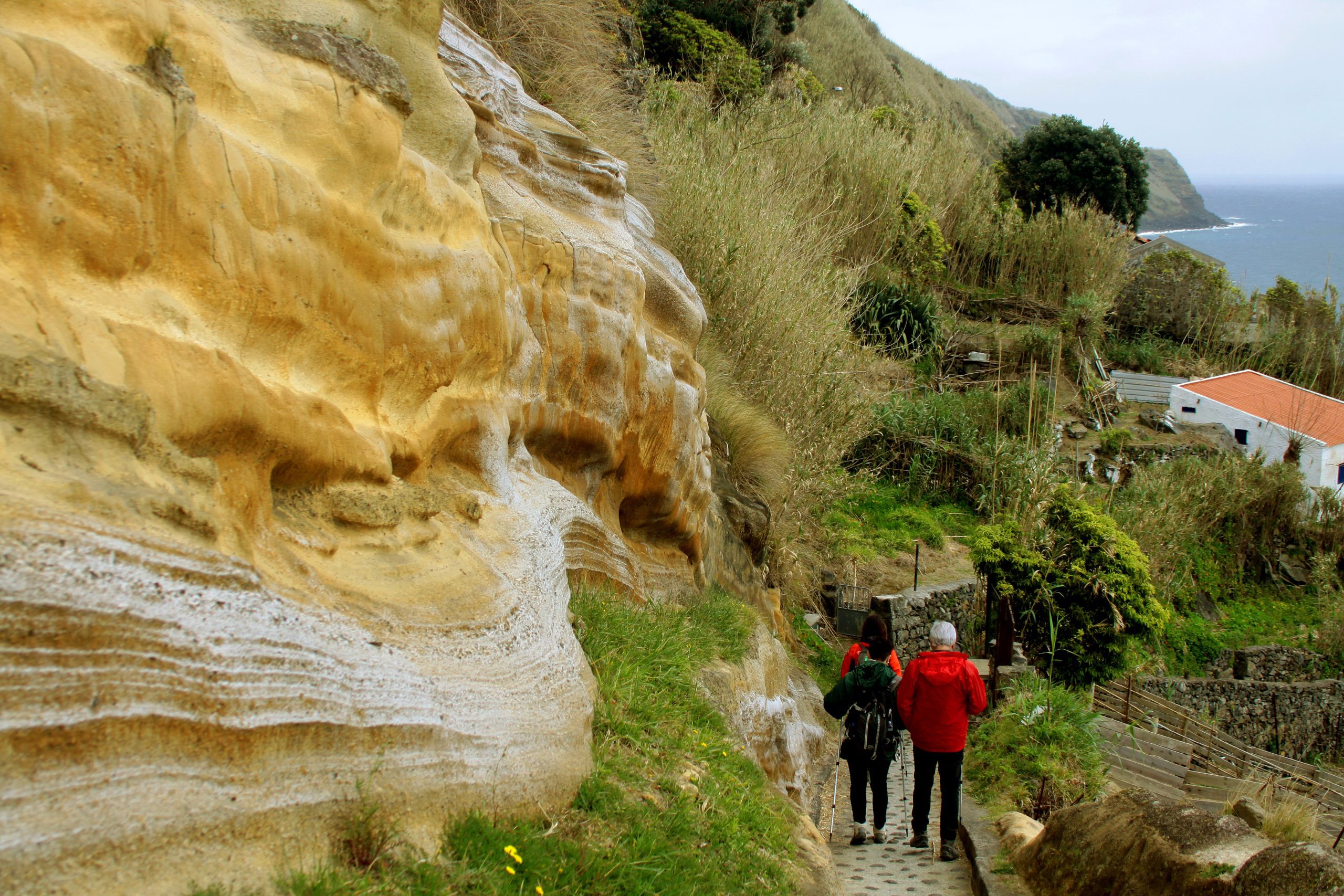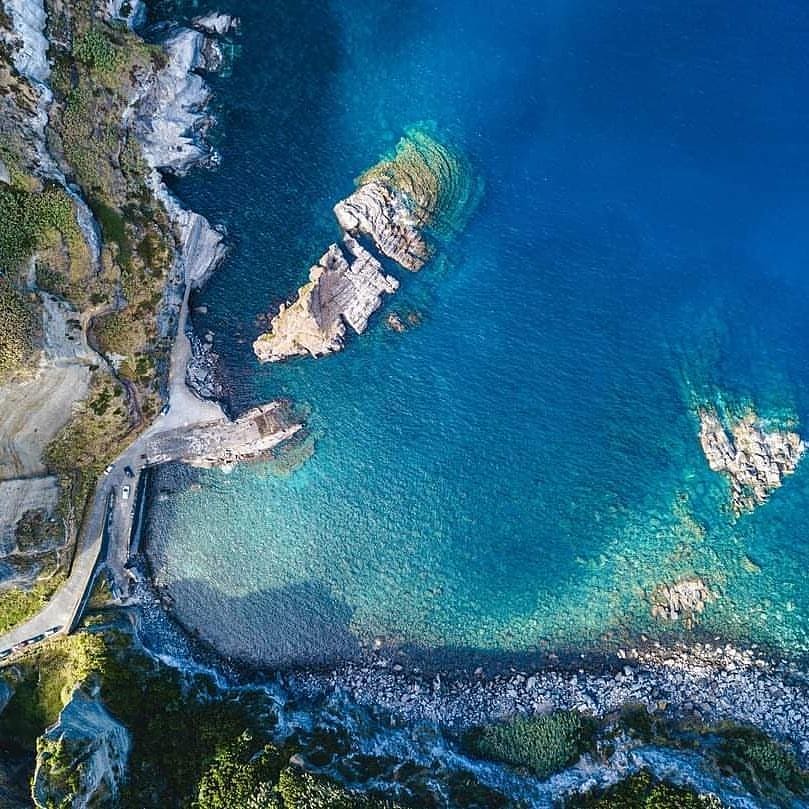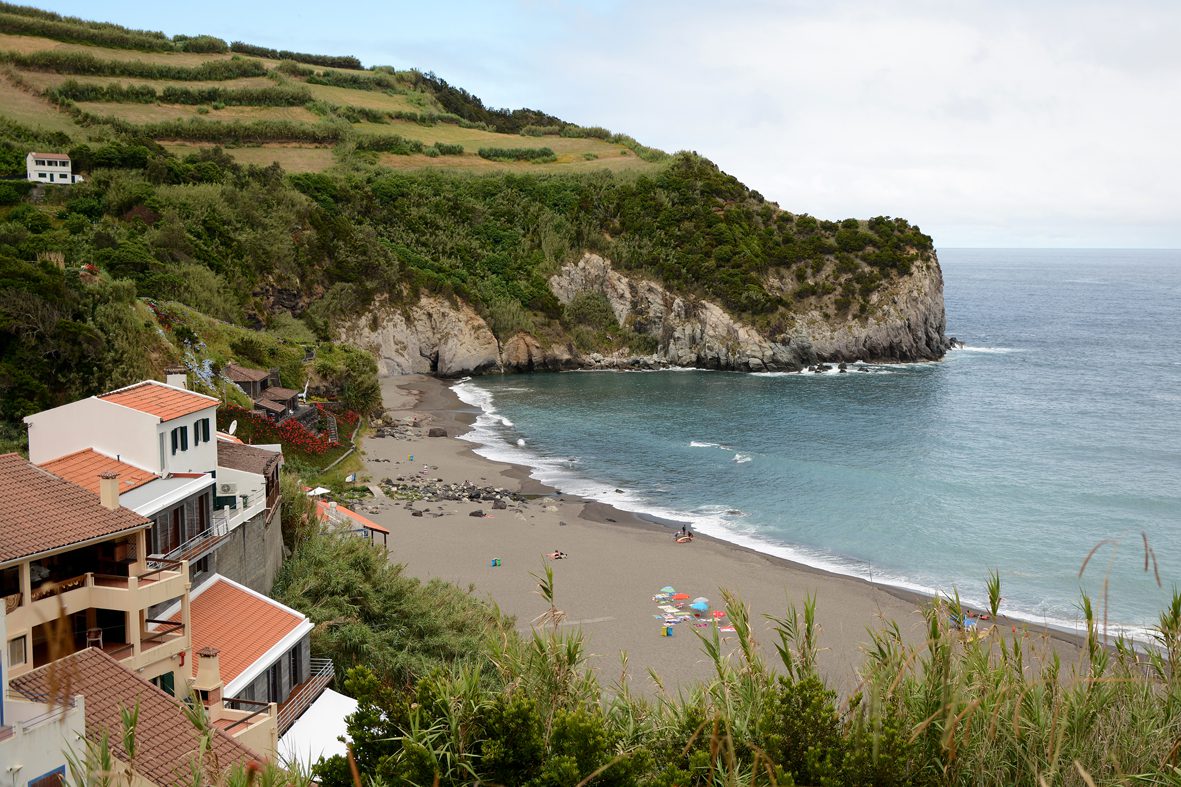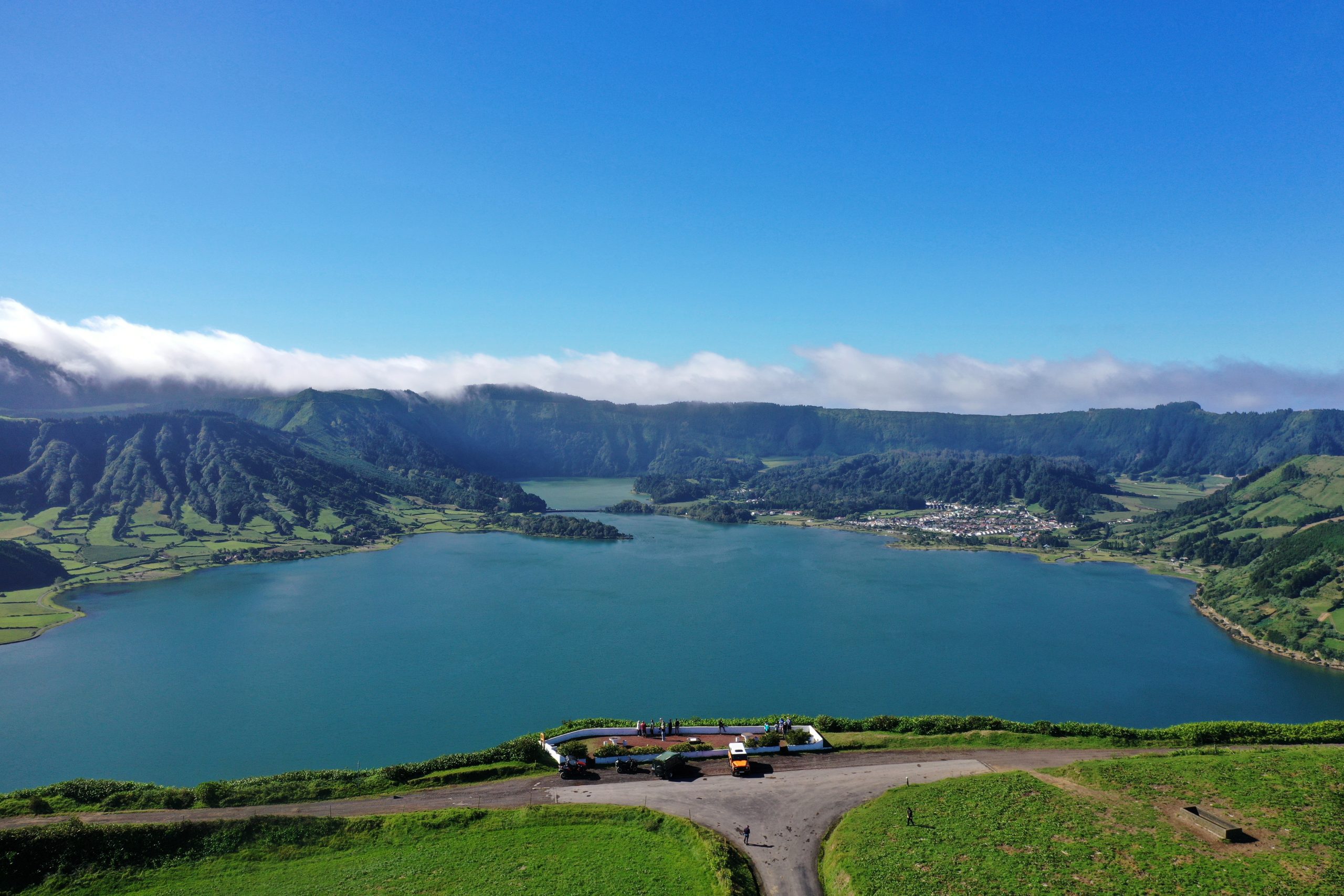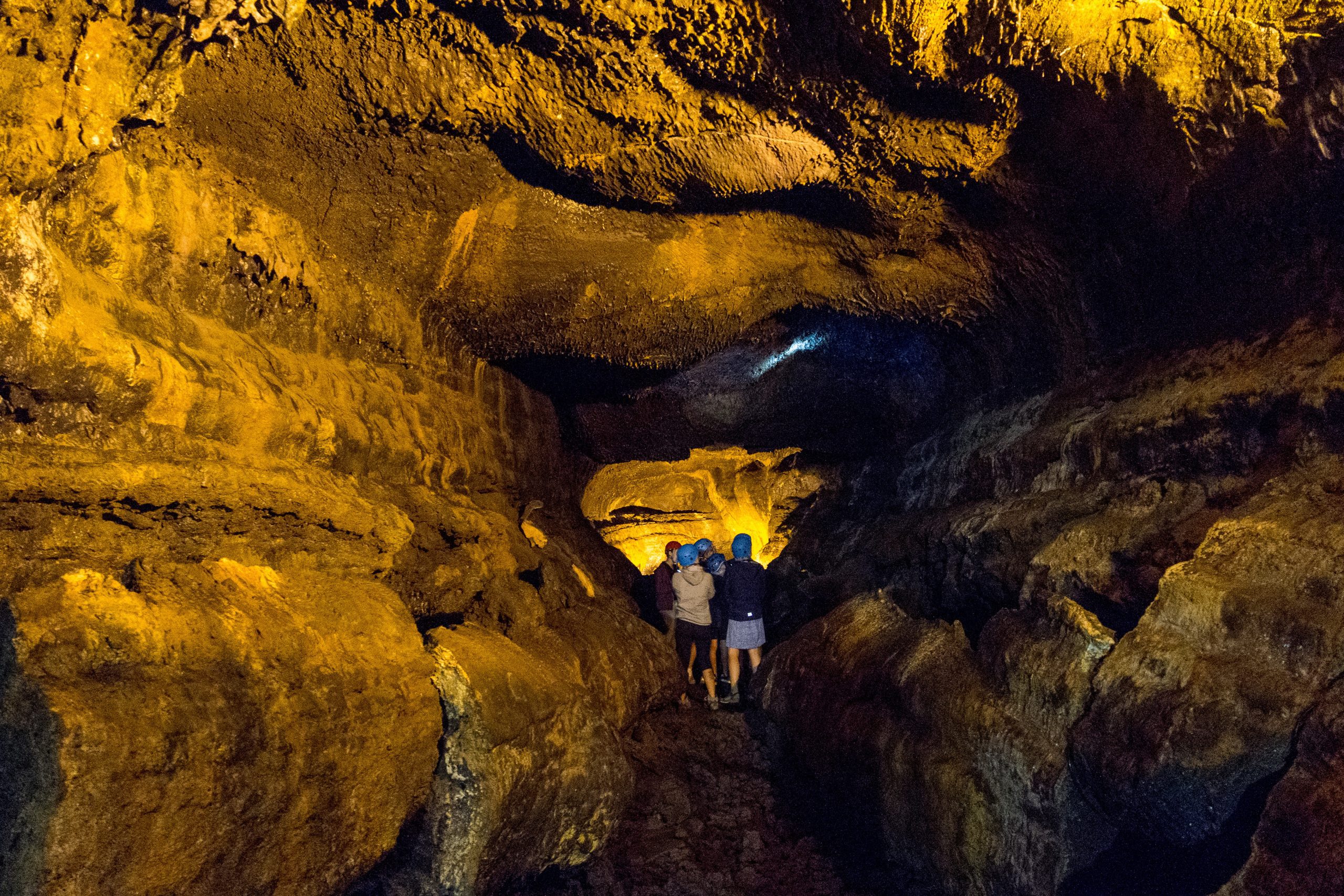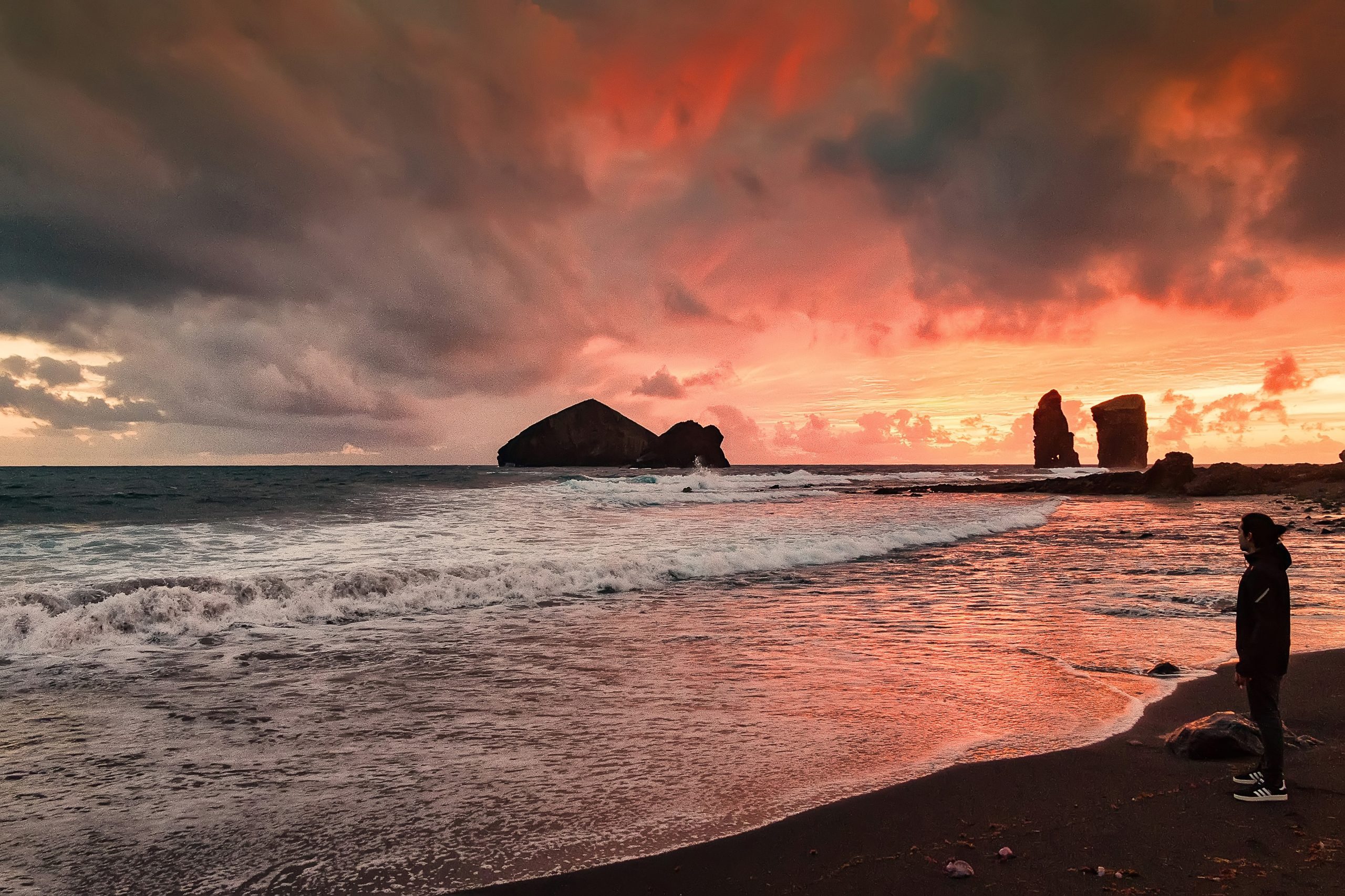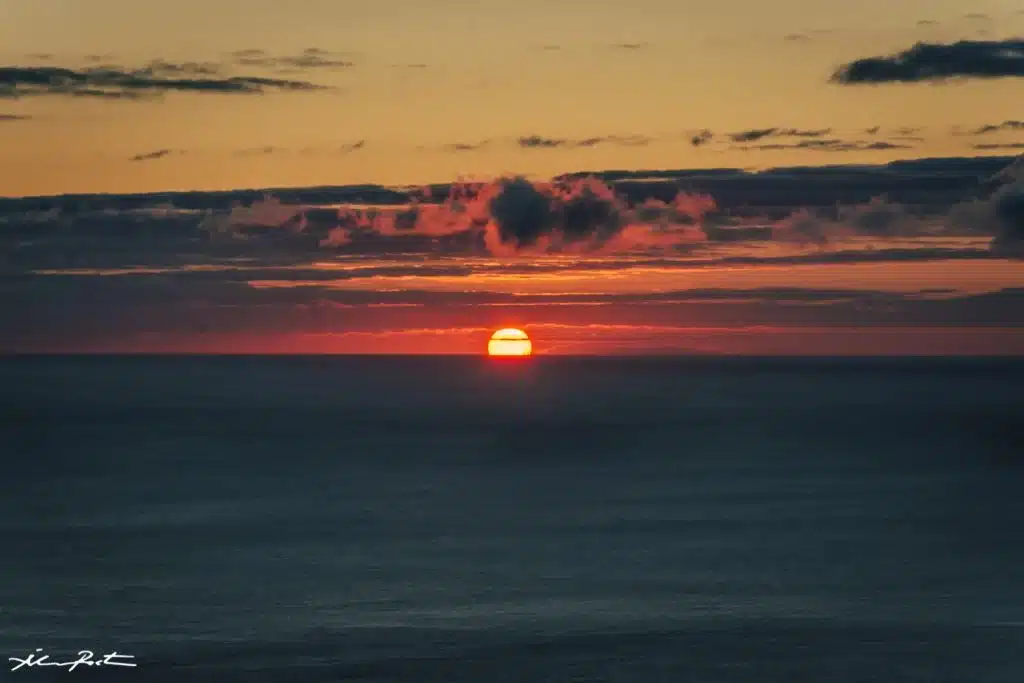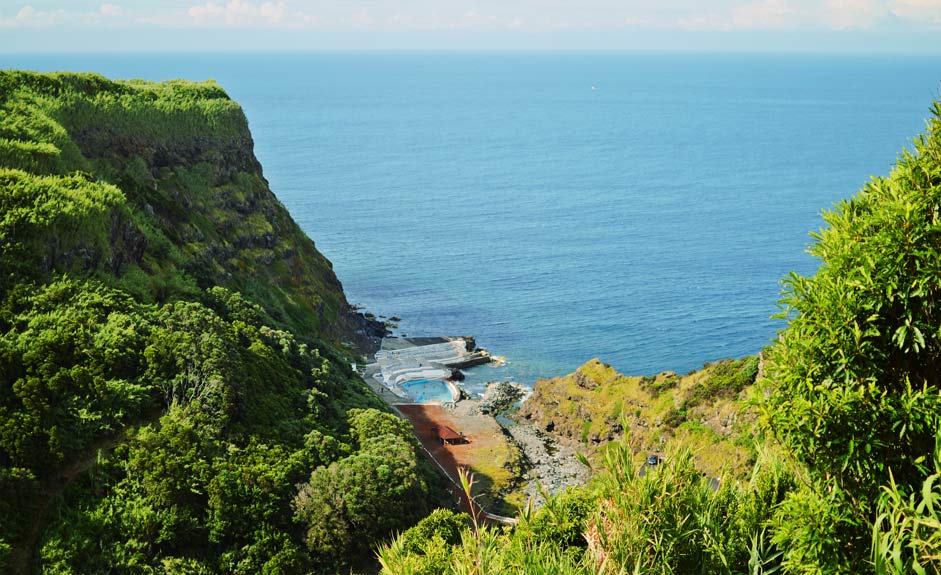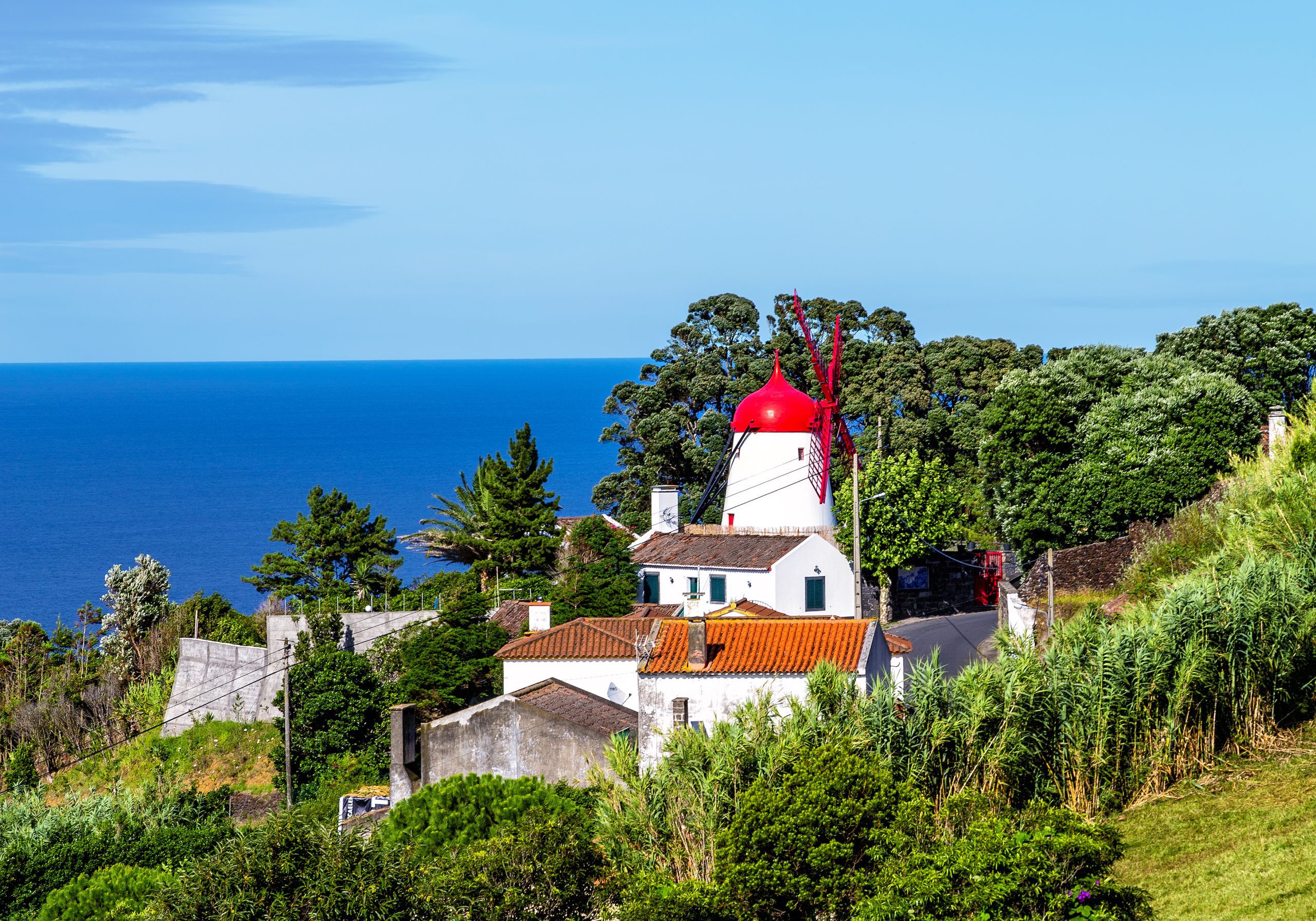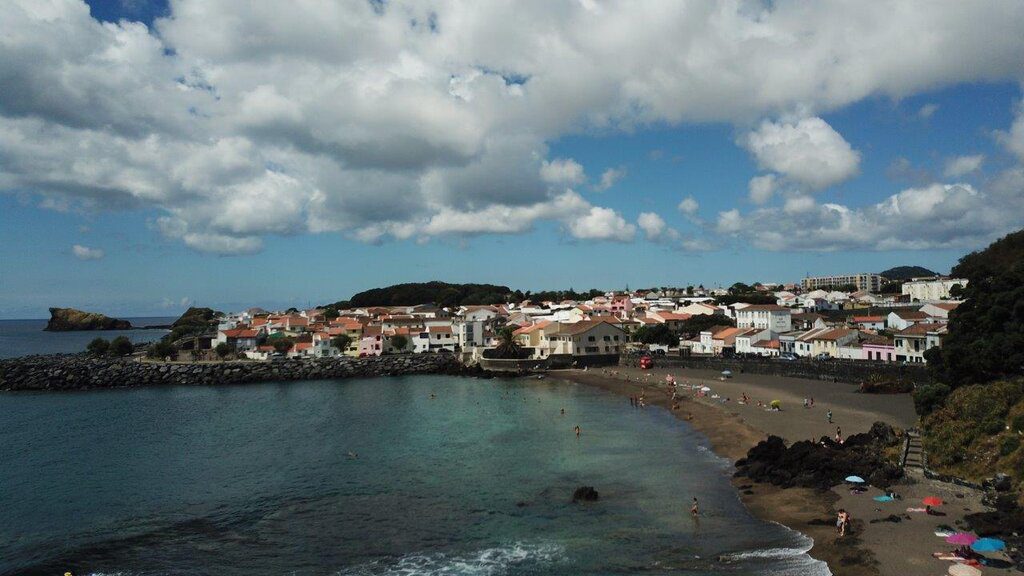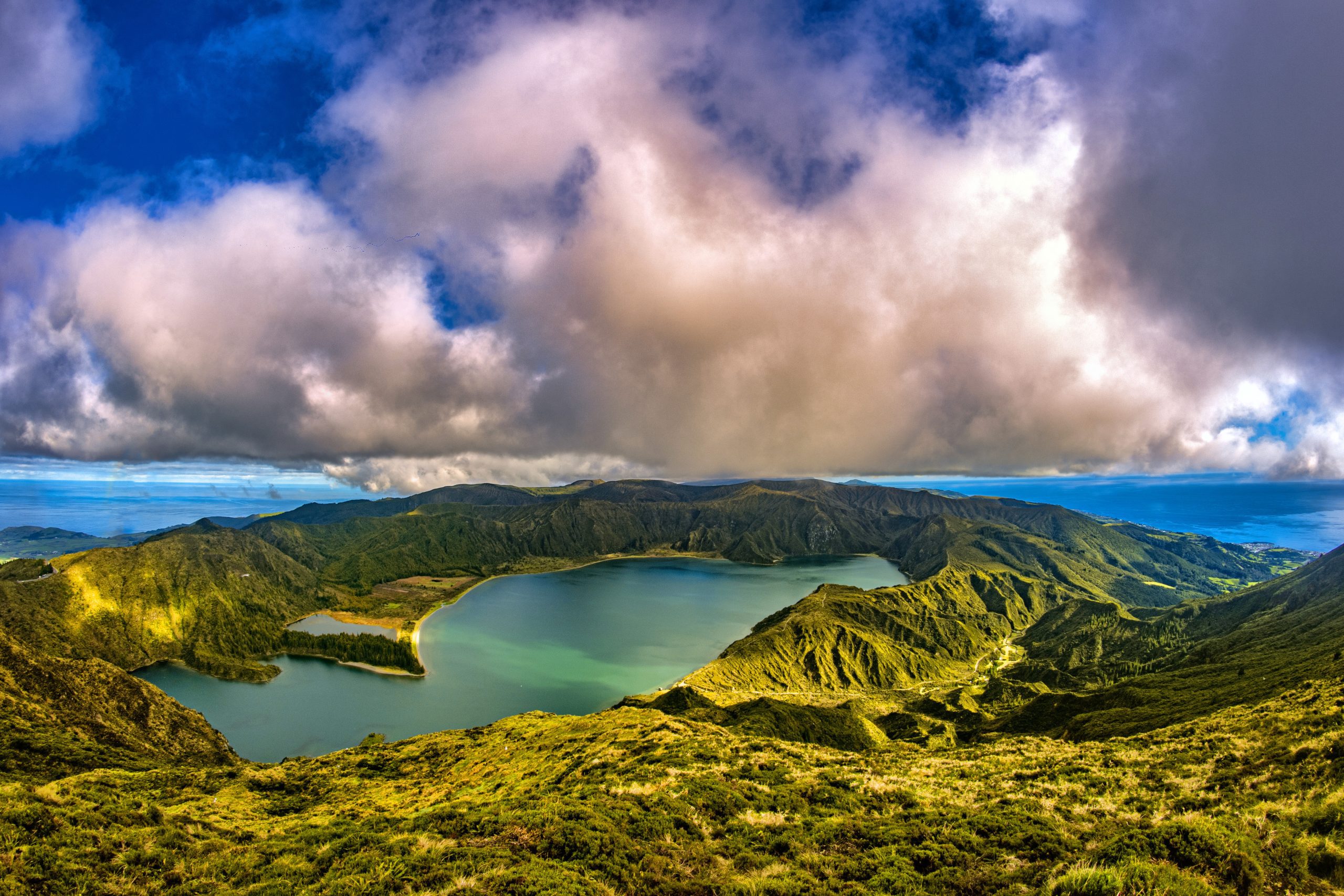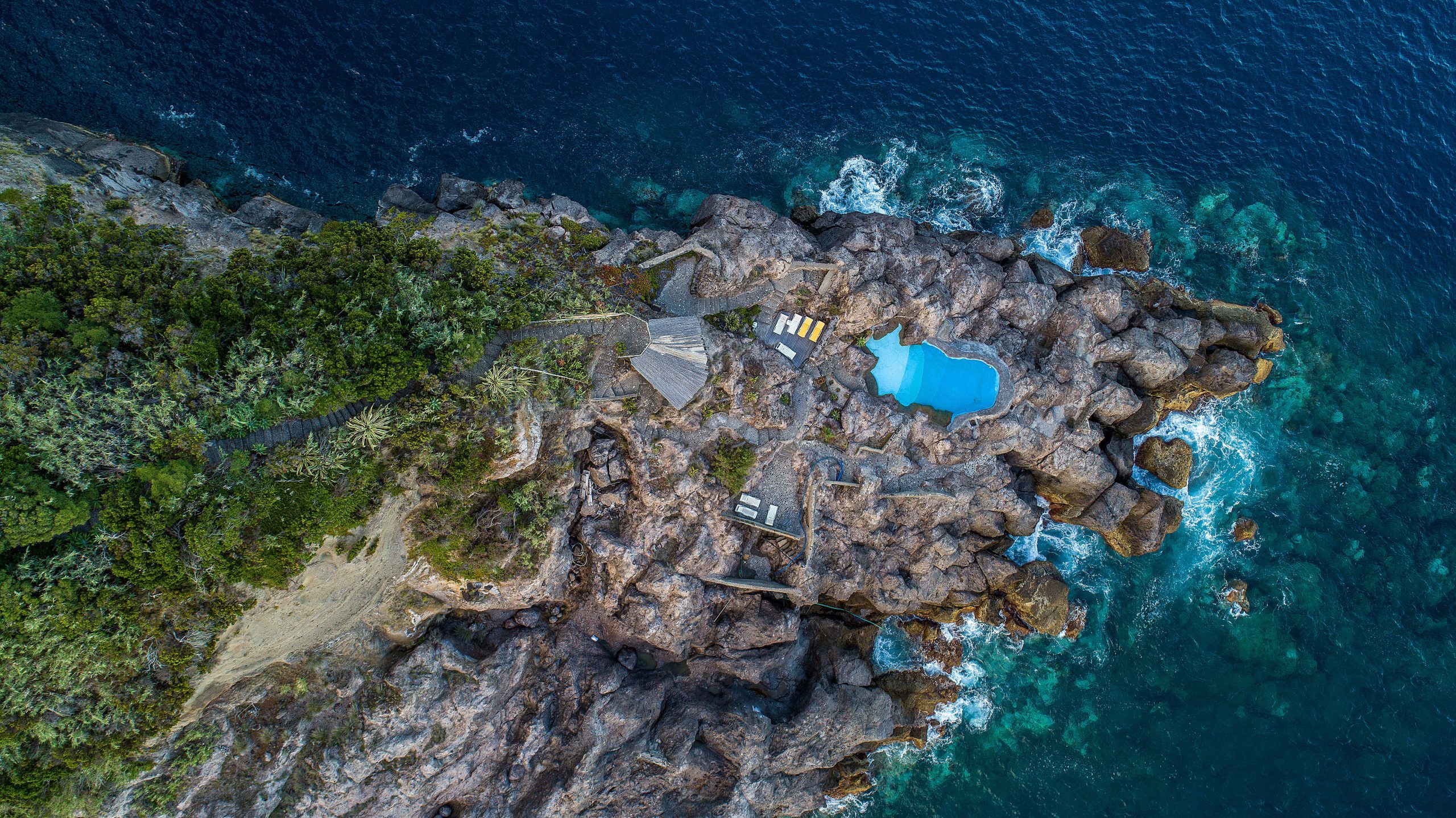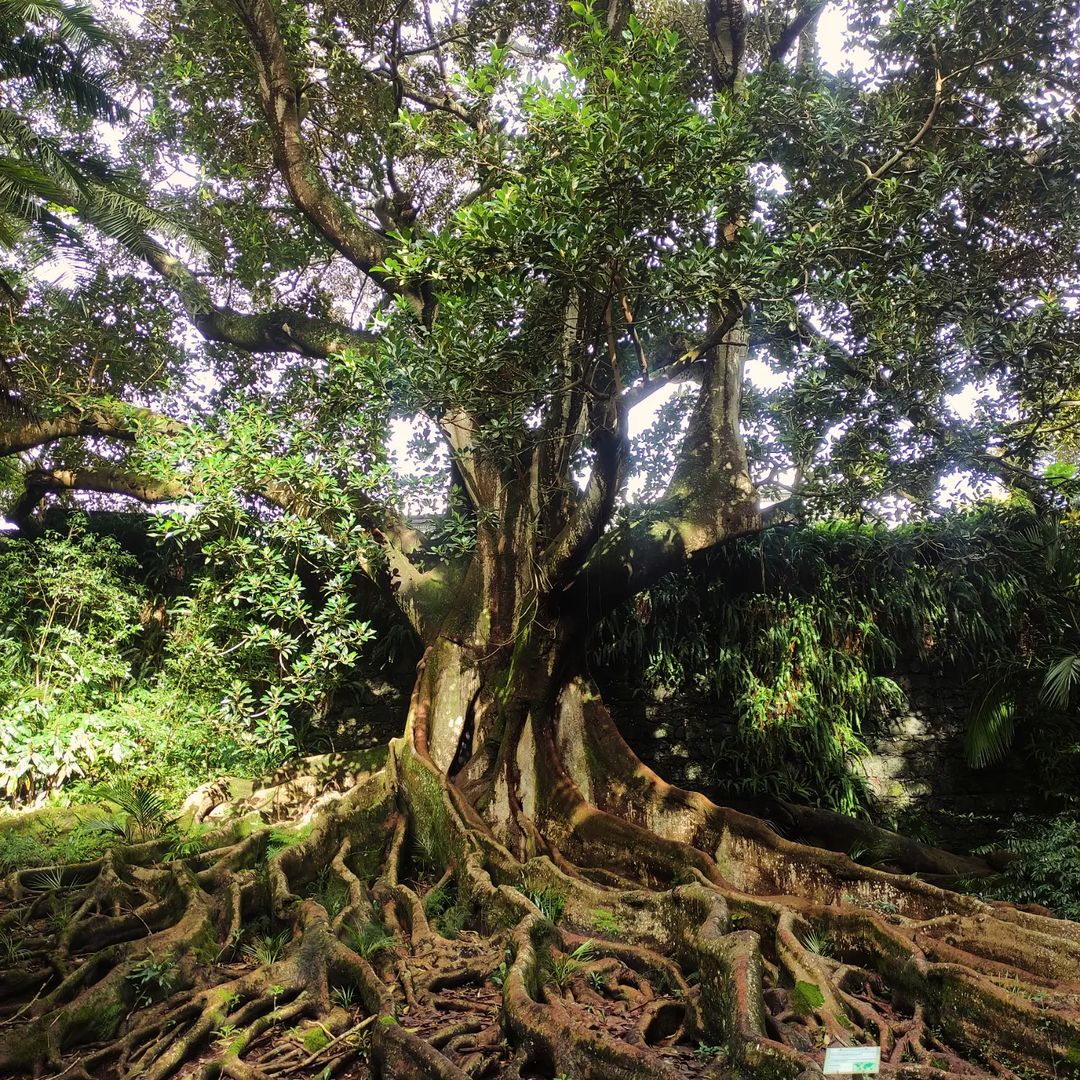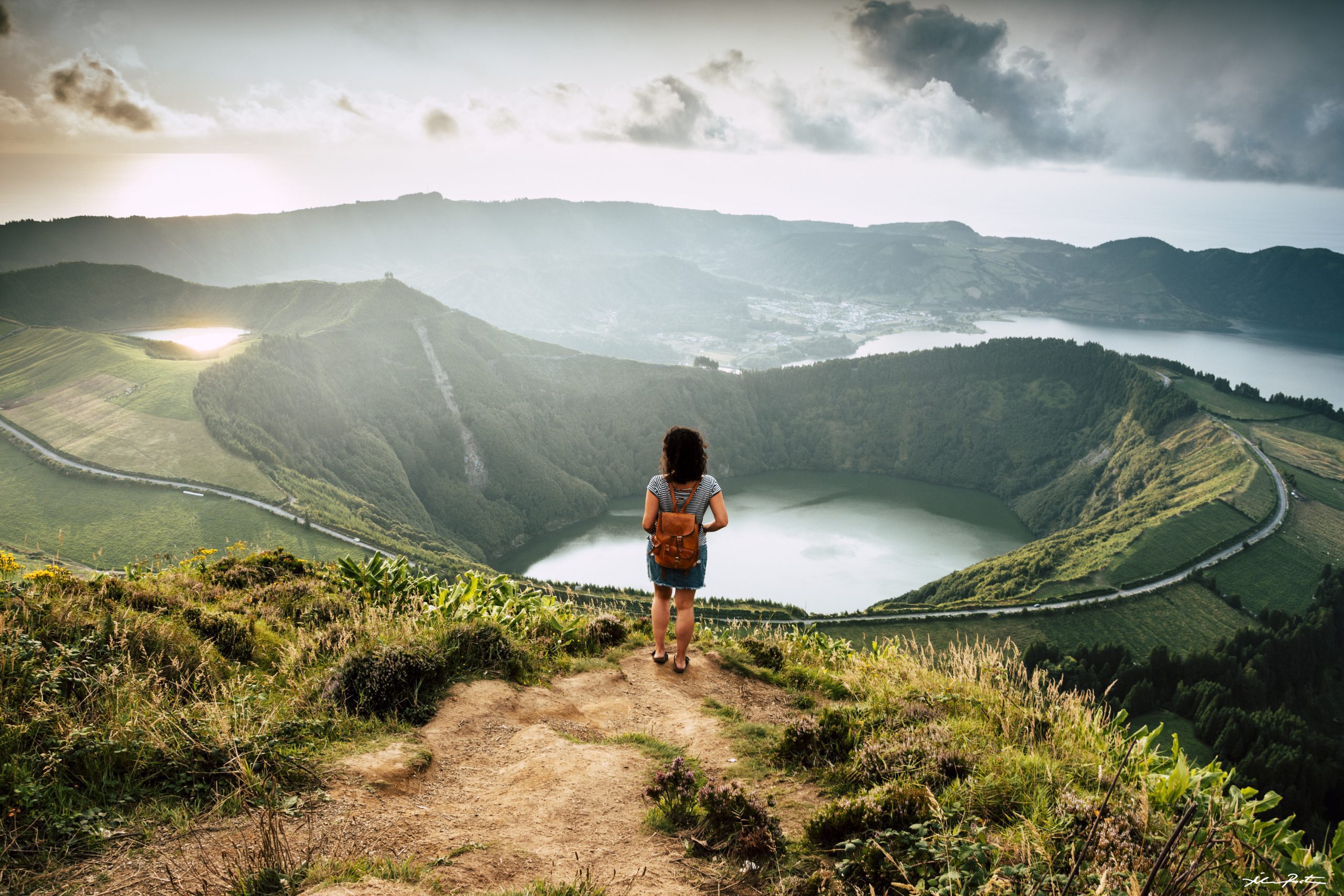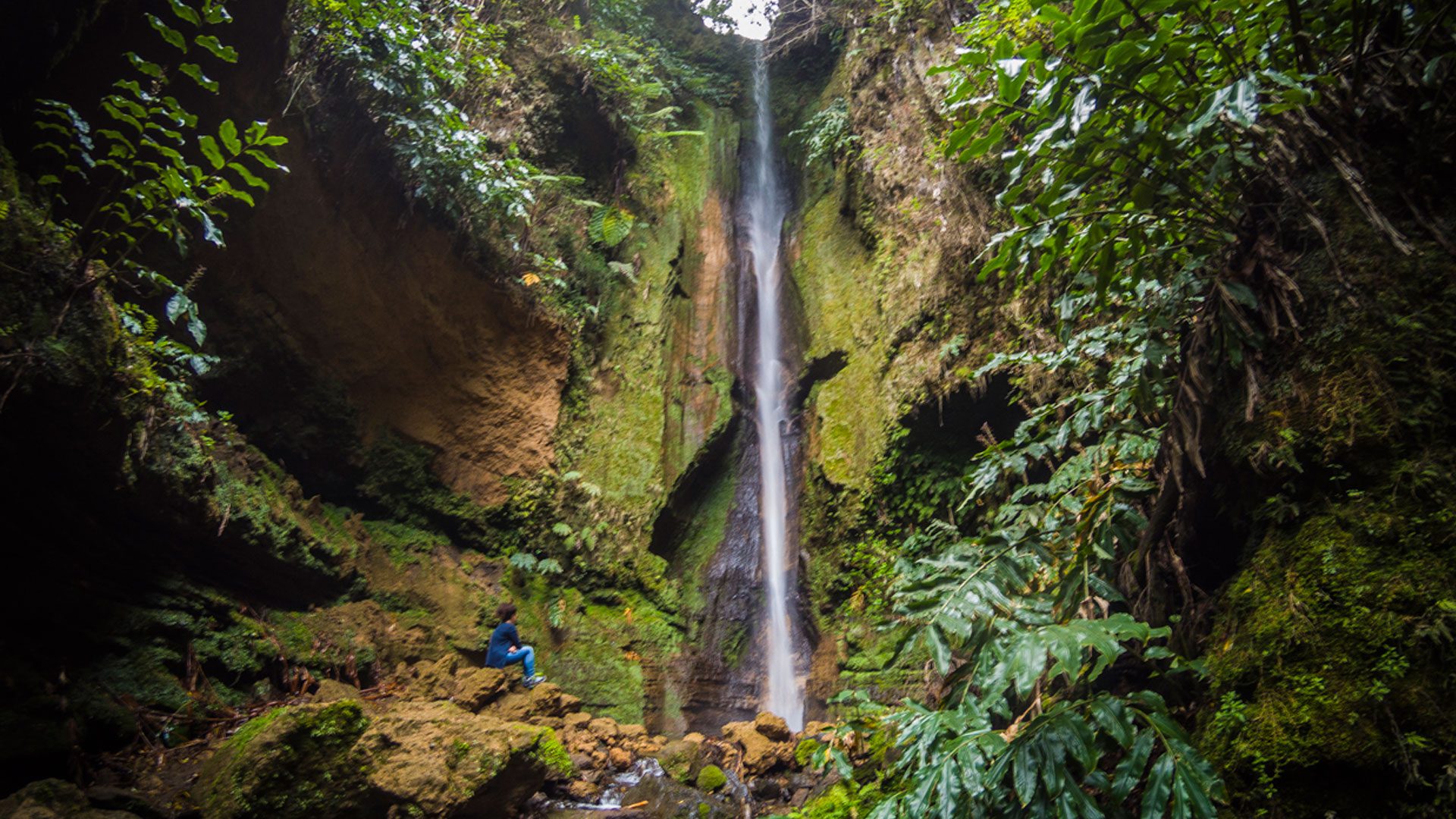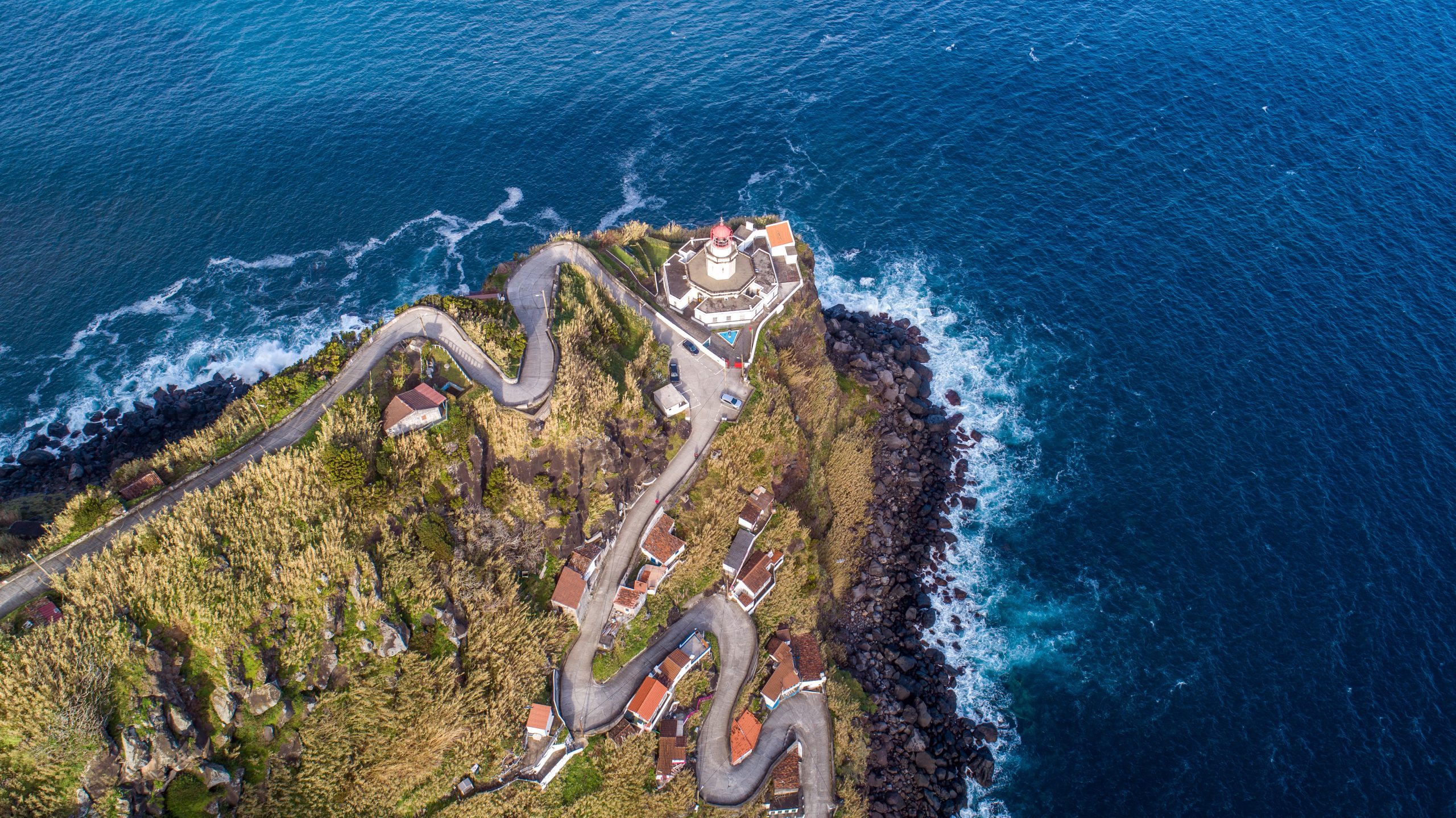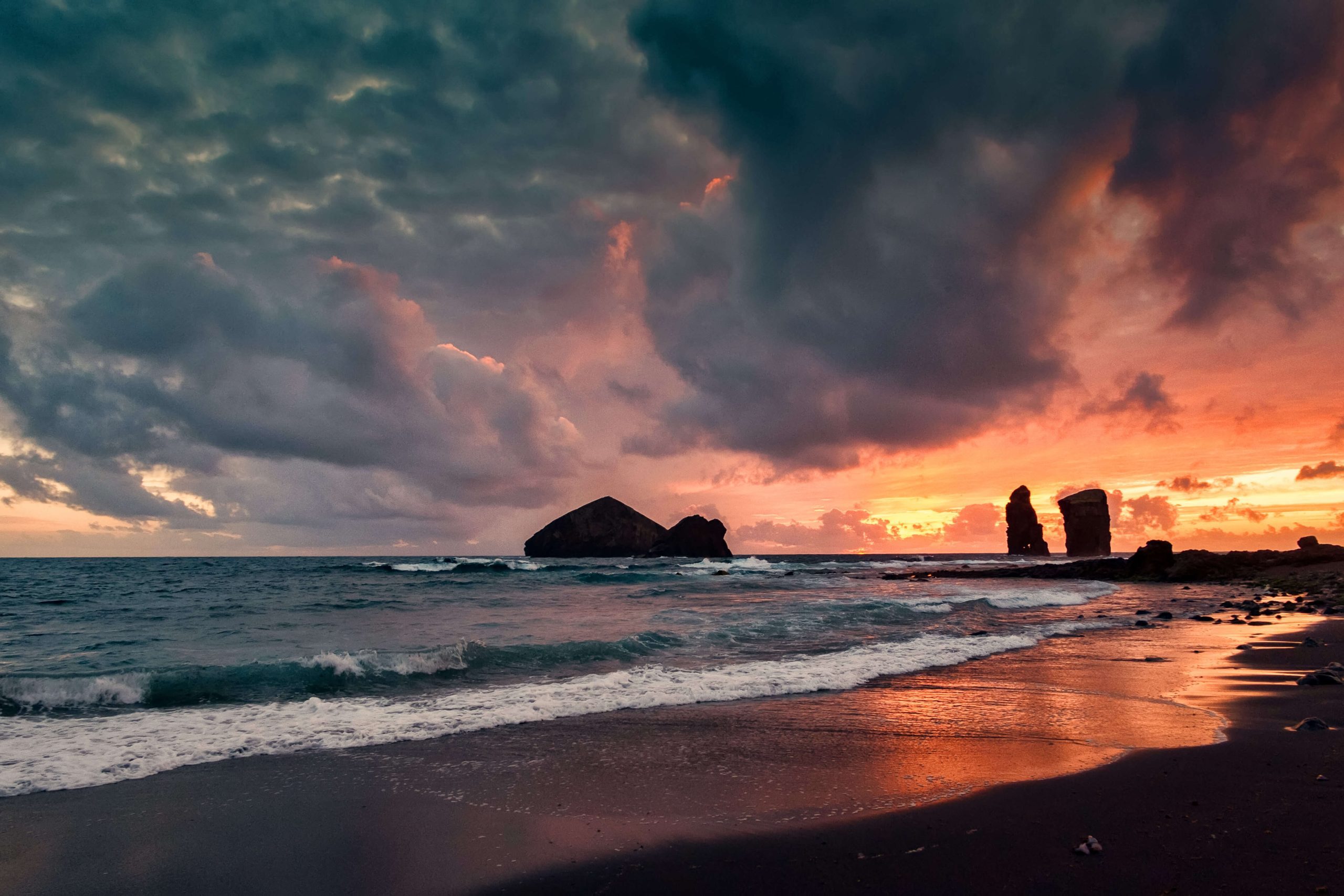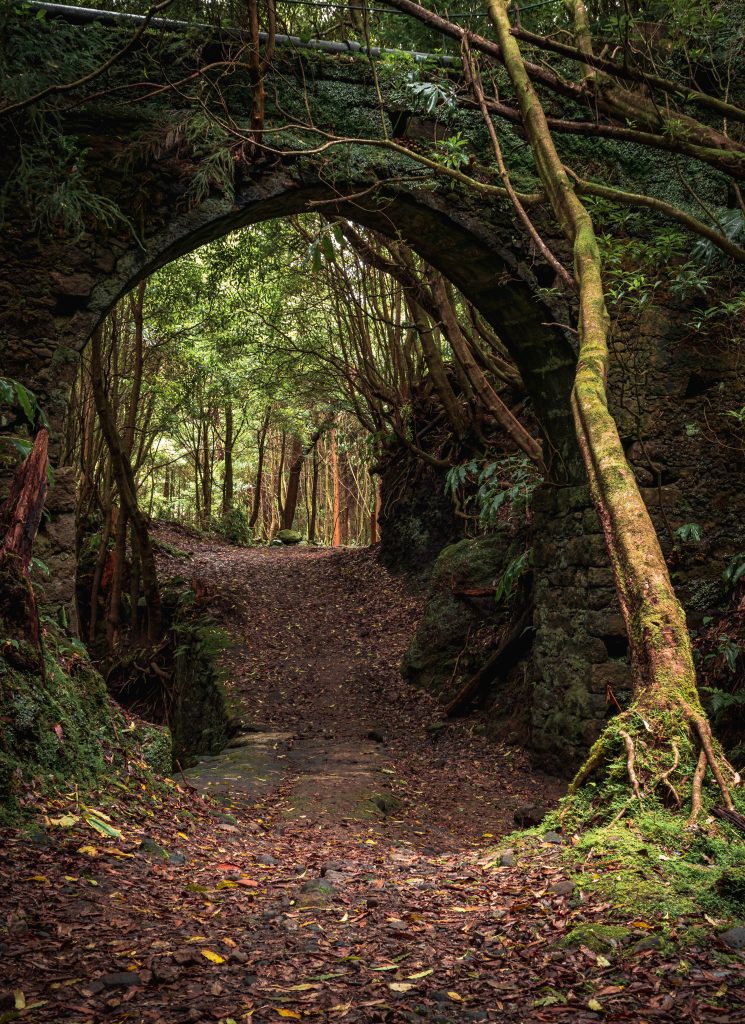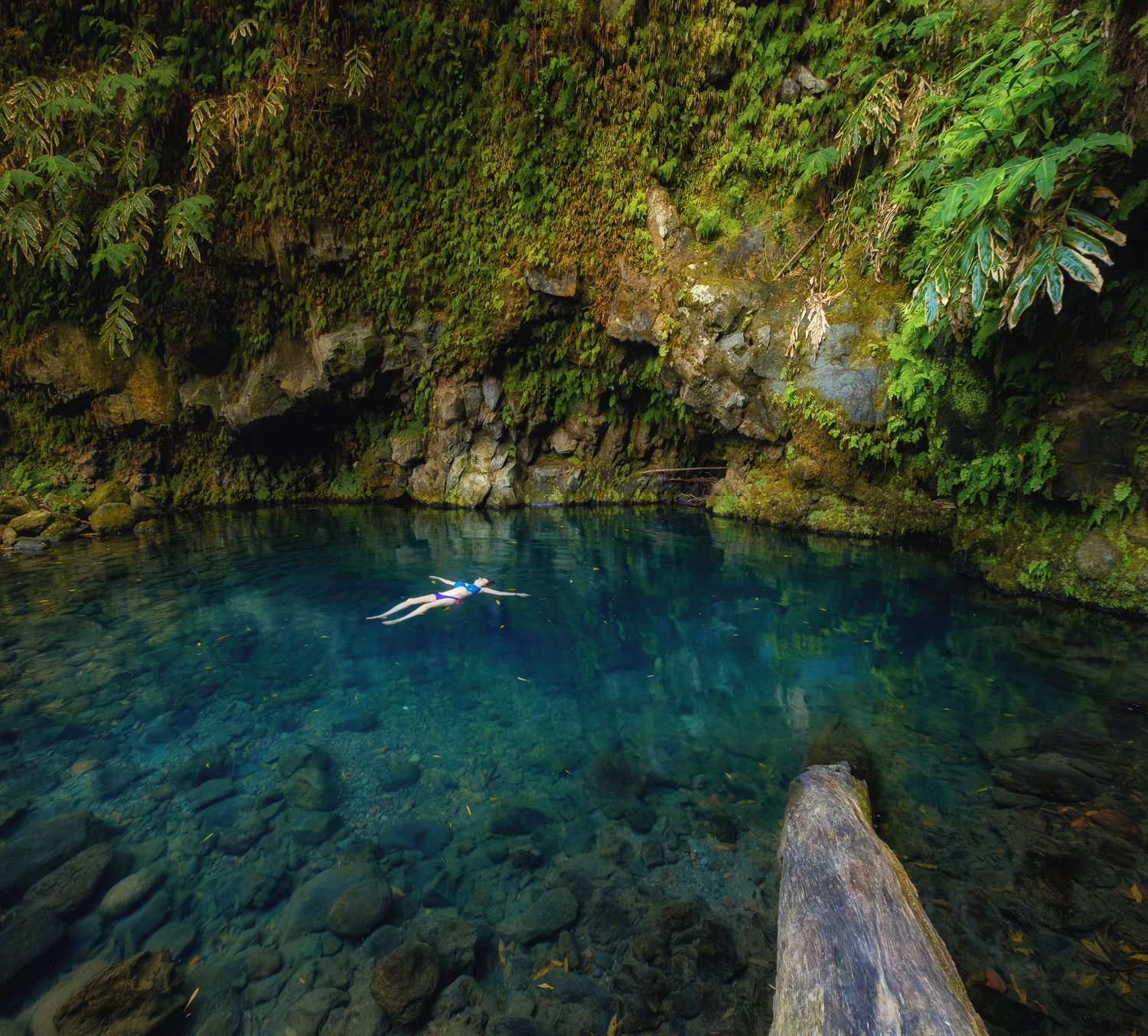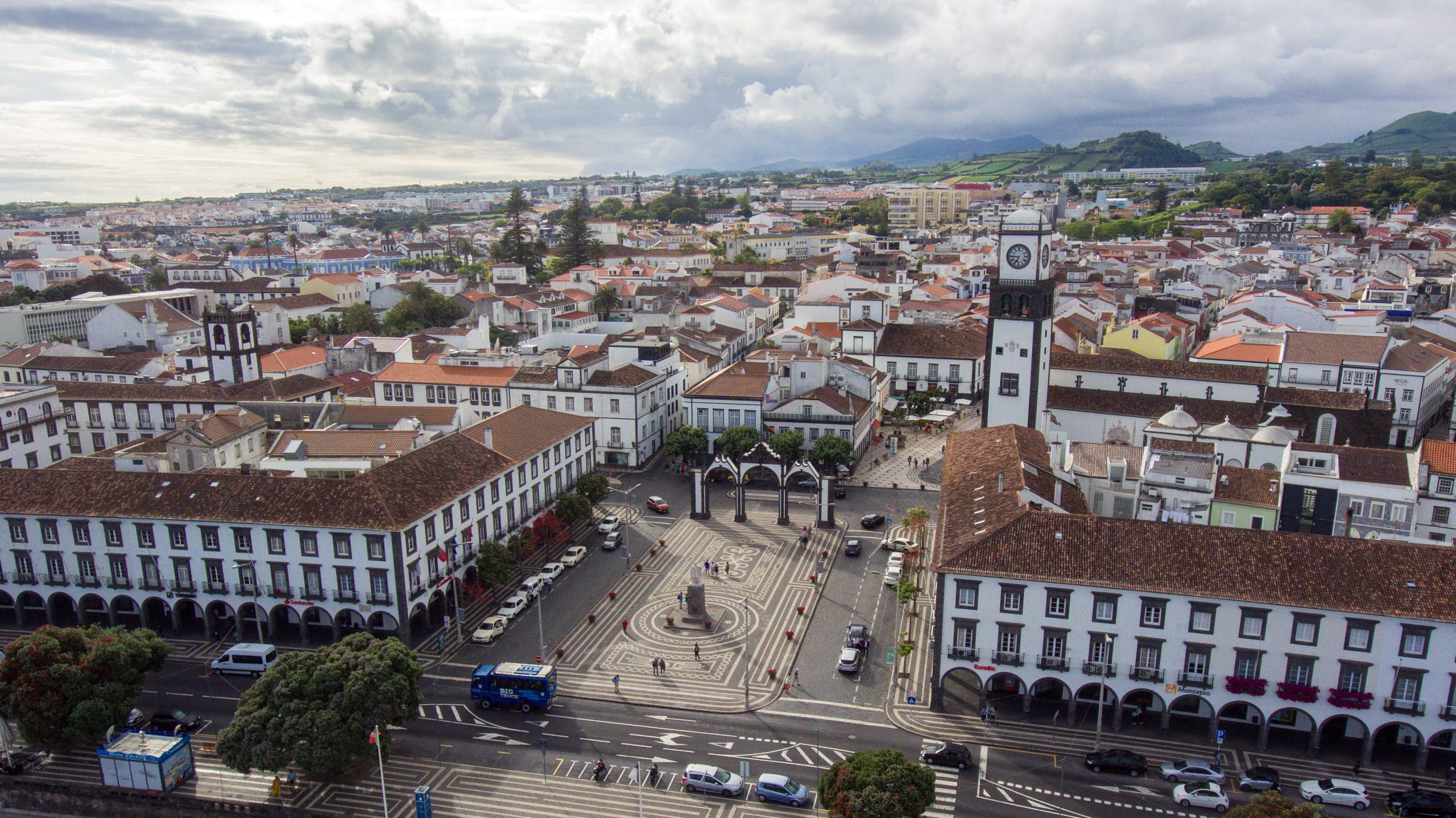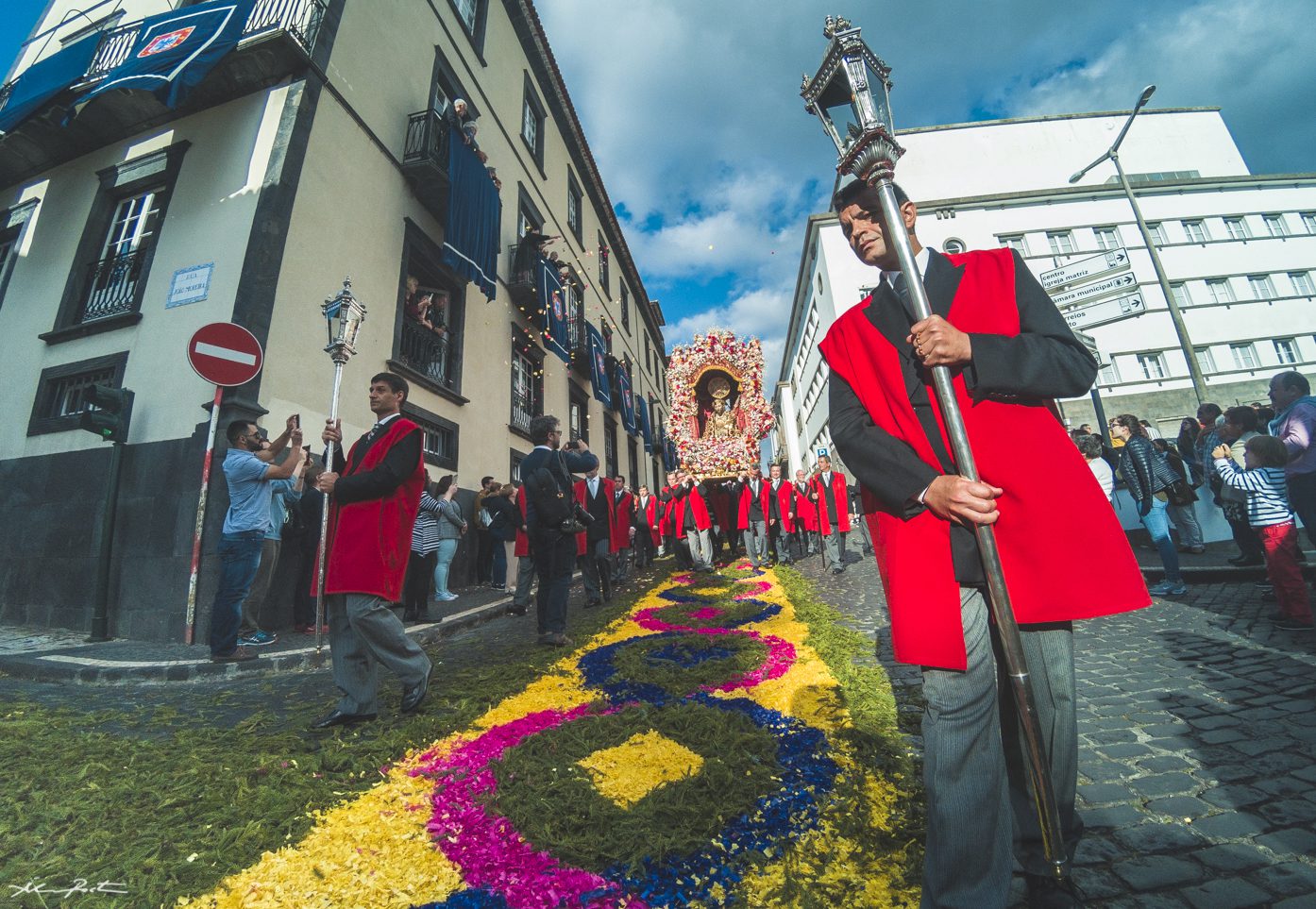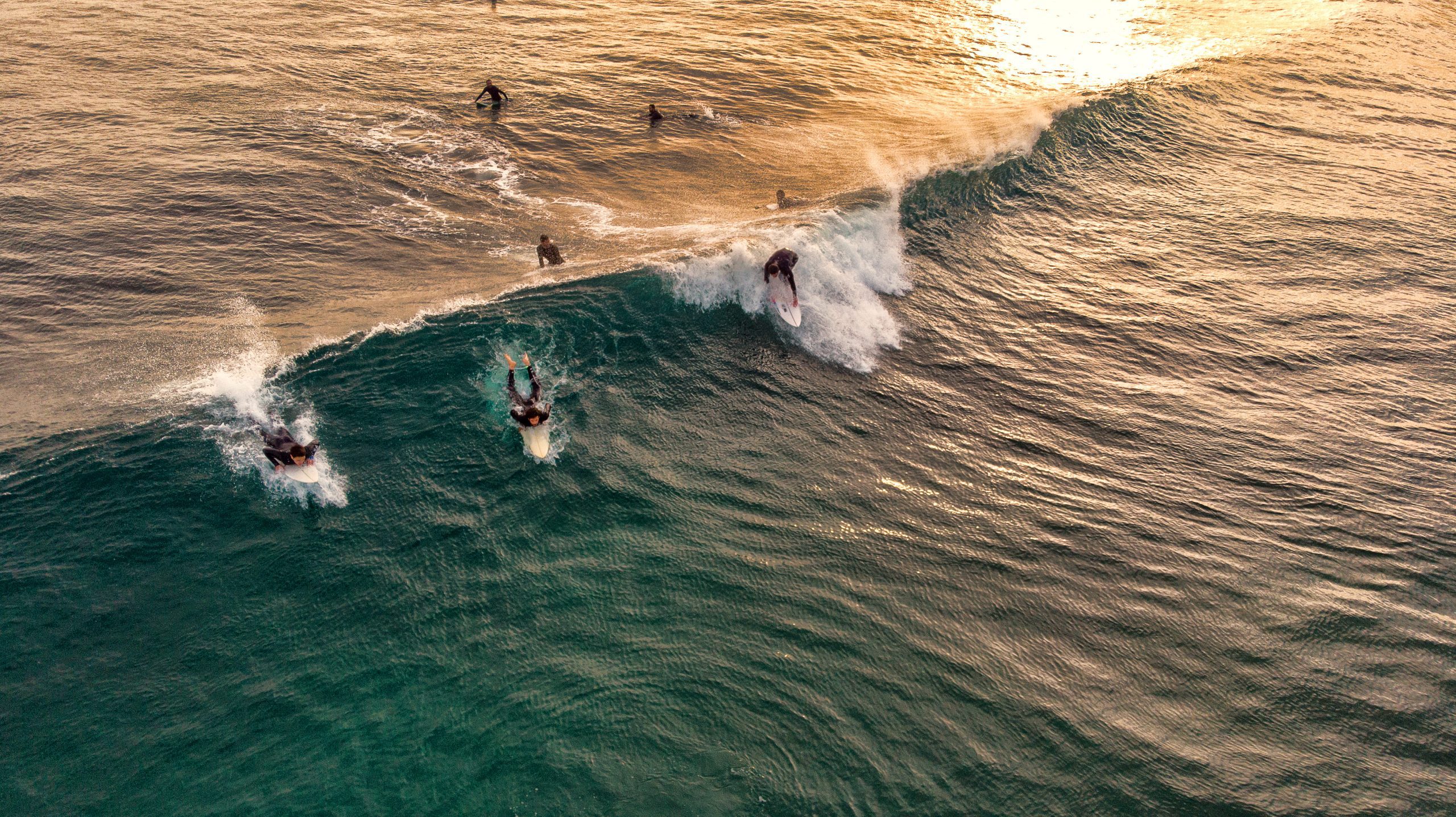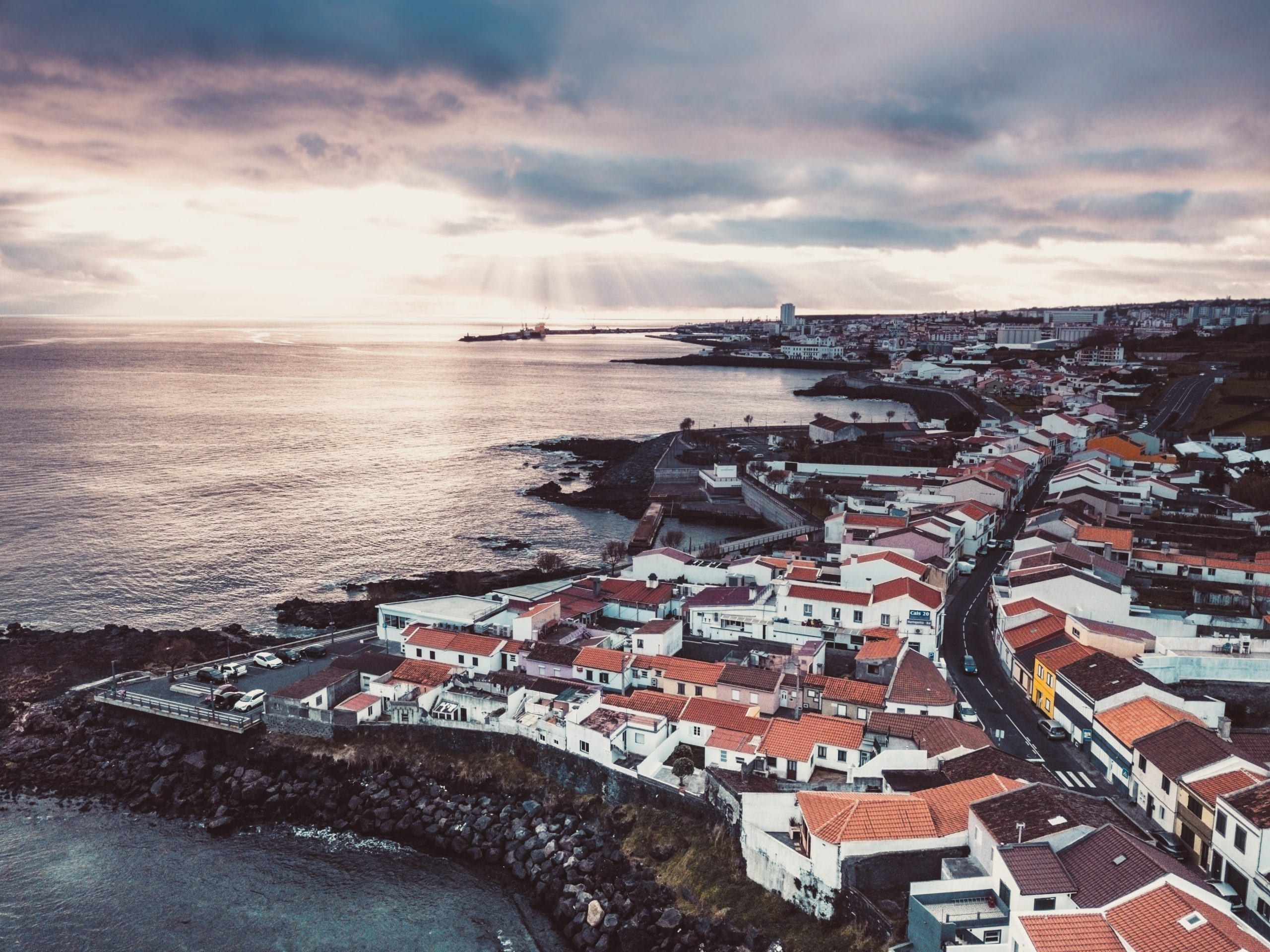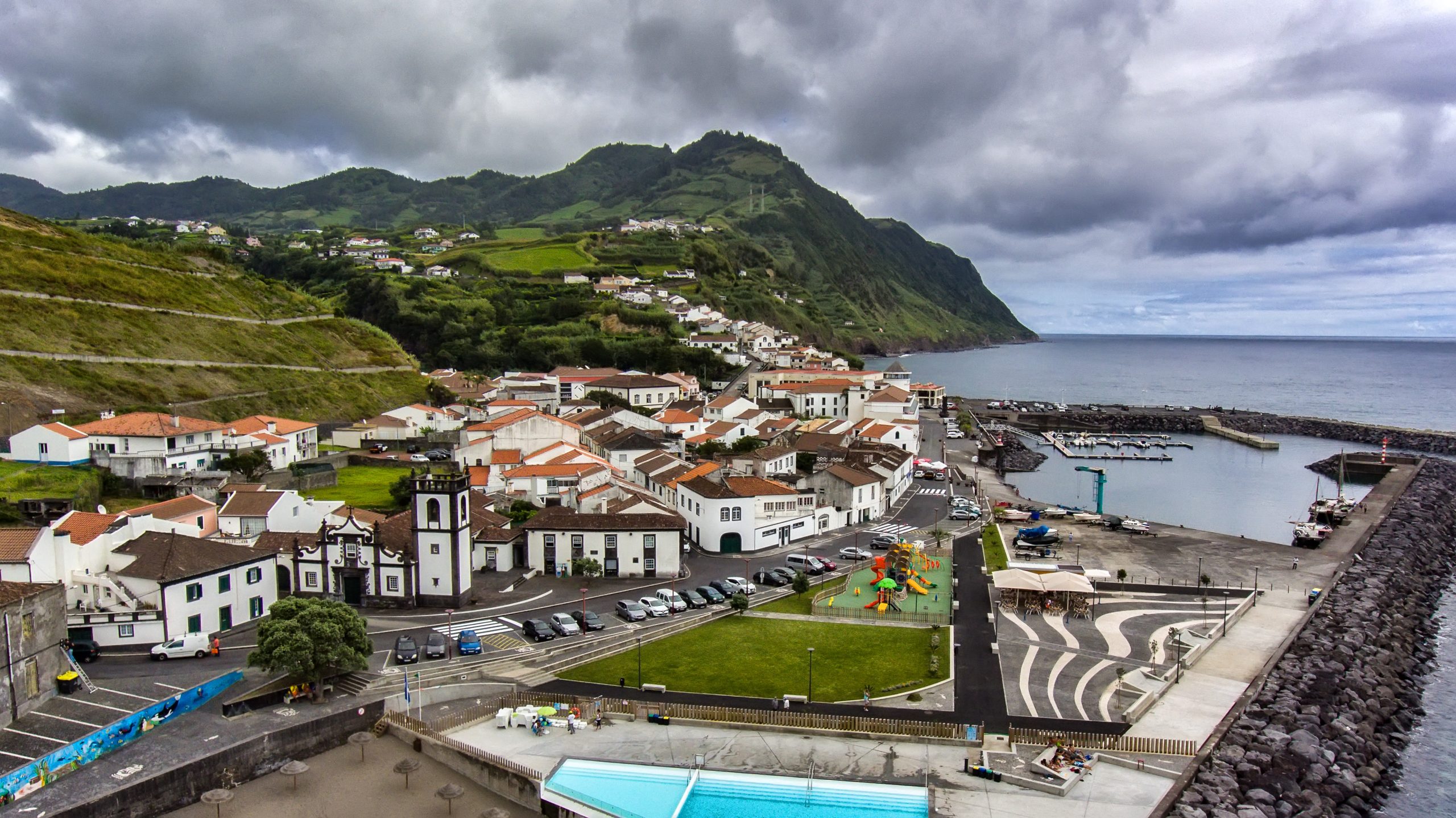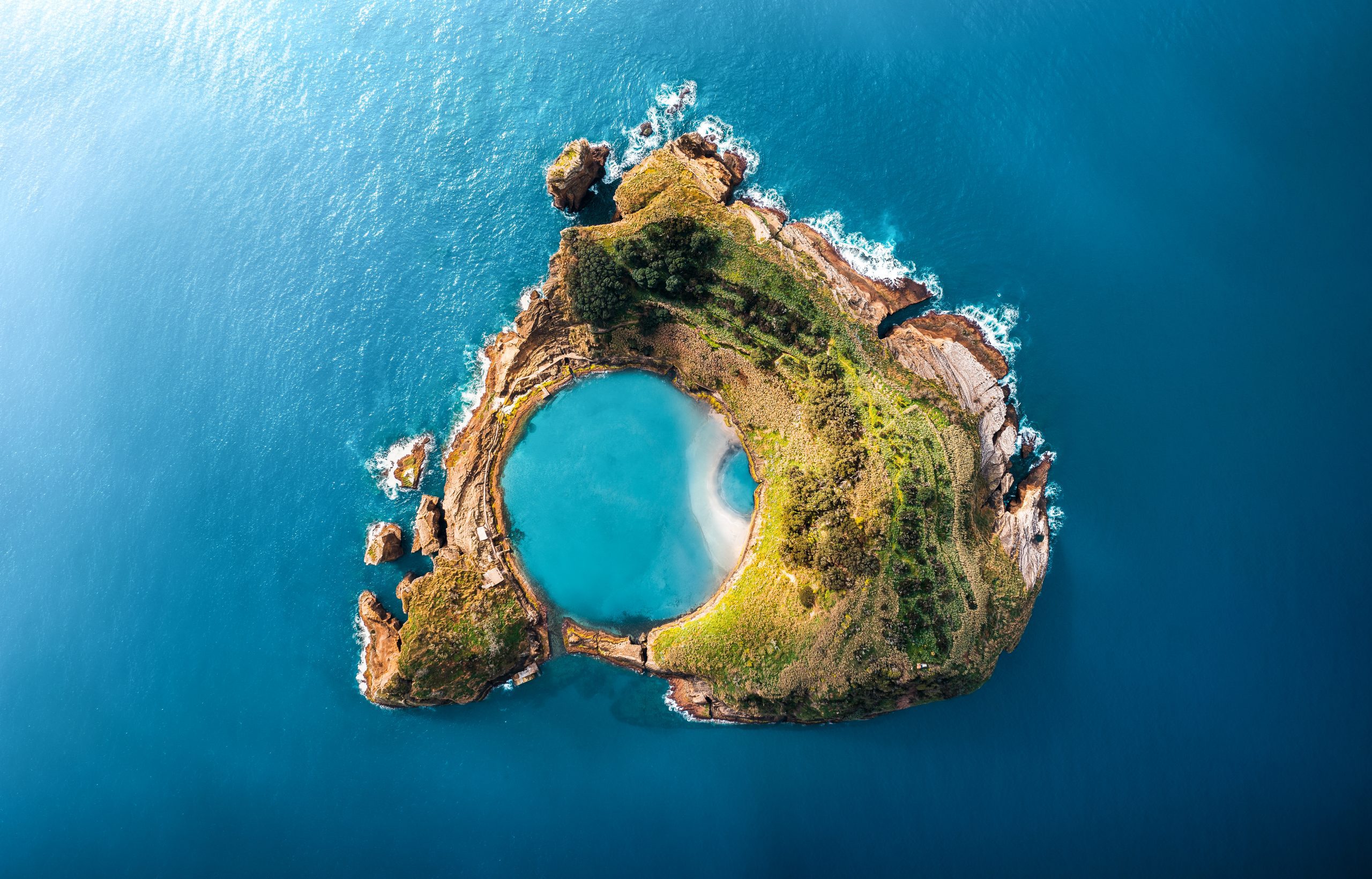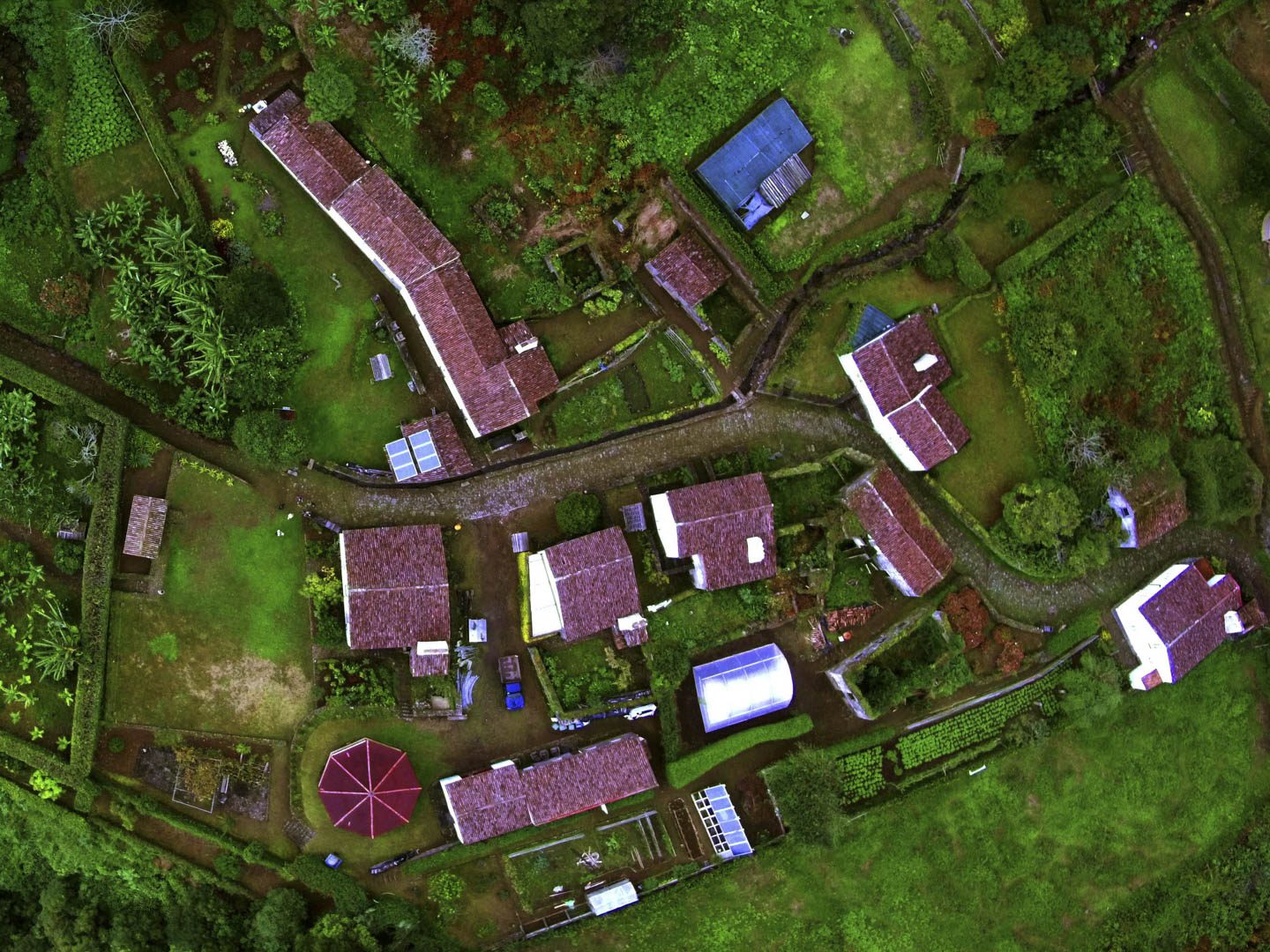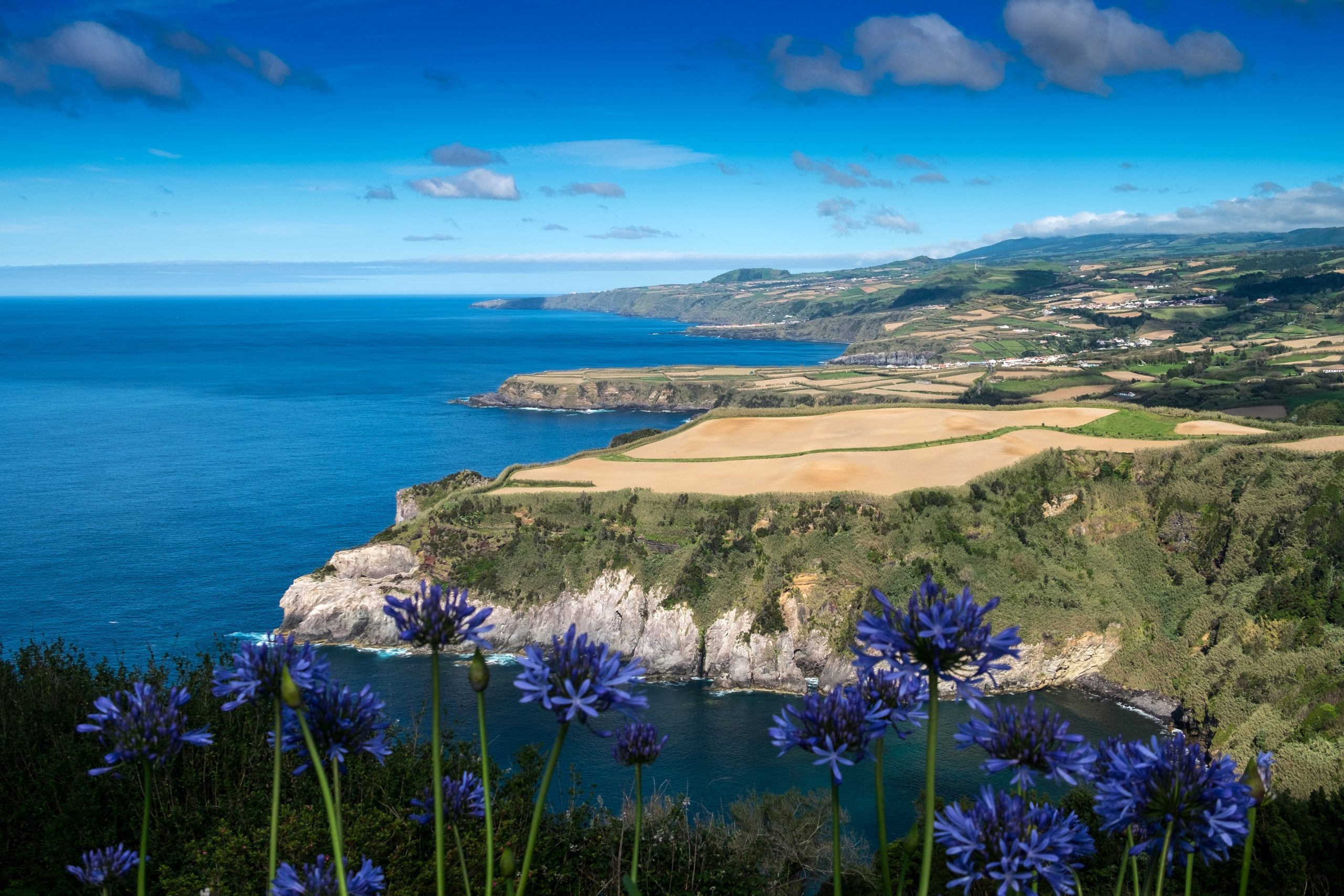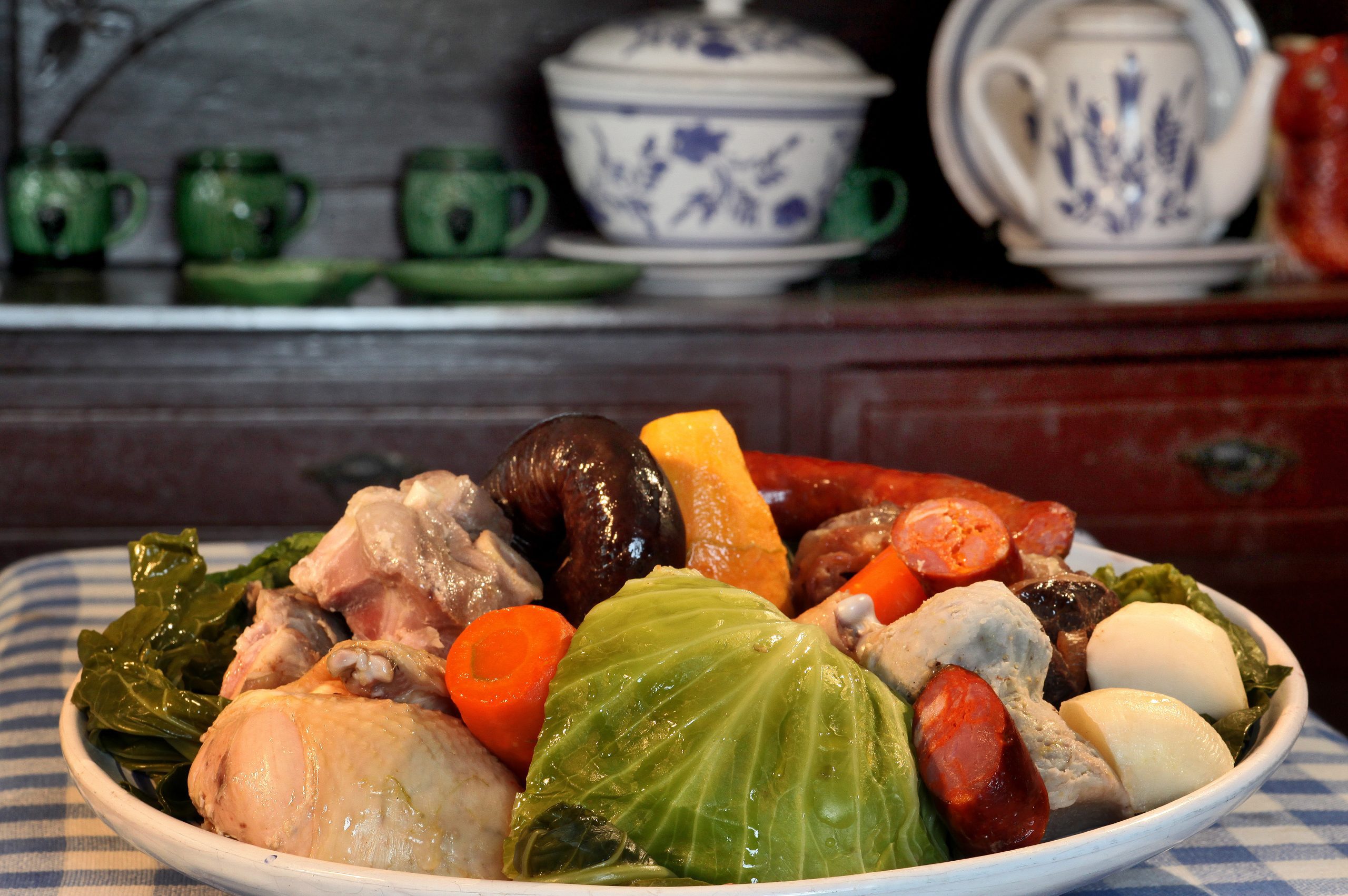Caloura is a small fishing village by the sea, where leisure and fun blend with Azorean history and culture. Known for its bathing areas, this location, just 20 kilometers from Ponta Delgada, attracts both children and adults alike.
Located in the parish of Água de Pau, Caloura is the ex-libris of the municipality of Lagoa in São Miguel. It boasts an excellent landscape, featuring a secluded beach, a fishing harbor with a natural swimming pool, and numerous historical sites in the region.
In this article, we’ll discuss Caloura’s history and the main tourist attractions in the region.
What is a Caloura?

Caloura is a small village in the Azores, located in Vale de Cabaços, within the parish of Água de Pau, and the municipality of Lagoa, on the island of São Miguel. This spot lies by the sea, where the magnificent coastline, surrounded by basalt cliffs and lush vegetation, stands out. It offers stunning bathing areas and carries deep historical significance.
In addition to its vast natural and material heritage, this is a land of fishermen and wine production — Vinho de Cheiro. In this sense, if you’re a good foodie and want to enjoy moments of tranquility and leisure, this is an unmissable place on your visit to the island.
History & Geography
People know Caloura for its iconic bathing areas, but its charm doesn’t stop there. In this sense, it is worth noting that Caloura has significant historical value, both for São Miguel and the archipelago. One of the oldest convents in the Azores is located here — the Convent of Nossa Senhora da Conceição.
Moreover, people highly value this area for its rich material heritage, and this monument stands out in particular. Here, you’ll also find other historical sites, such as hermitages, gardens, and the Nossa Senhora da Conceição de Caloura Battery — a fortification built to defend Caloura Harbor and the convent from pirate and corsair attacks.
Caloura is geographically close to Água de Pau, between Lagoa and Vila Franca do Campo. It is located right on the oceanfront, surrounded by cliffs and steep hills to Água de Pau.
Where Does the Name “Caloura” Come From?
As mentioned, this is where the oldest convent on the island of São Miguel is located, and curiously, the name “Caloura” comes from the religious orders that passed through here. In other words, in 1630, when the hermit friars sought refuge from the eruption of the Furnas Volcano, they ended up settling in the “Conventinho” (small convent) of Vale de Cabaços. Locals called these friars calouros (fledglings), so they began referring to them as Vale de Cabaços — the name we know today as Caloura.
What to Do in Caloura?
Caloura offers a range of activities and experiences that are of historical, cultural, and leisure interest. Take the opportunity to connect with nature, enjoy unique moments, and discover this beautiful region. In this regard, we would like to highlight the main points of interest in this region:
- Caloura Convent;
- Nossa Senhora da Conceição de Caloura Battery;
- Caloura Harbor Natural Swimming Pools;
- Caloura Beach/Baixa d’Areia Beach;
- Caloura Cultural Centre;
- Arcos da Caloura.
You can also do some activities and water sports here, such as:
- Kayaking;
- Stand-up paddle;
- Snorkeling;
- Fishing
- Diving;
- Among others.
Regarding cultural experiences, we would like to highlight Caloura Blues, a music festival that typically takes place at the end of July on Baixa d’Areia Beach. This is the ideal event for those who enjoy having fun without confusion or crowds.
Visit the Convent of Nossa Senhora da Conceição de Caloura
The Convent of Nossa Senhora da Conceição de Caloura, also known simply as the Convent of Caloura, is situated on cliffs and enjoys a privileged location by the sea. Erected during the first half of the 16th century, this modest Baroque-style building has historical ties to the cult of Senhor Santo Cristo dos Milagres. Curiously, it is one of the oldest convents on the island and in the archipelago.

This monument, located in the parish of Água de Pau, in the municipality of Lagoa, in São Miguel, has been classified as a Property of Public Interest by the Regional Government of the Azores since 2008. It should be noted that the Caloura Convent consists of a hermitage attached to the convent and several gardens. Two low bell towers flank the façade of the hermitage. The frontispiece of the main façade has a niche containing the image of Our Lady of the Conception.
The interior of this building is adorned with a valuable collection of tiles in shades of blue and yellow on a white background, probably dating from the 17th century. The chancel also stands out for its precious altarpieces, which display various images of angels.
Origin of the Caloura Convent
At the beginning of the 16th century, two devout women from Vila Franca do Campo chose this region to live in seclusion and devotion to Christ. To this end, accompanied by the 5th Captain Donatory of São Miguel and a town council representative, they traveled to Rome to request a papal bull from Pope Paul III to establish a monastery.
The Pope granted their request and presented the devotees with an image of the Senhor Santo Cristo dos Milagres. This image became the most significant in the archipelago, giving rise to the Feast of the Senhor Santo Cristo dos Milagres, the second-largest religious event in the country.
Due to its location by the sea, the congregation and the image, which Pope Paul II blessed, were transferred to the Convent of Nossa Senhora da Esperança in Ponta Delgada, where they remain today.
Explore the Nossa Senhora da Conceição de Caloura Battery
The Nossa Senhora da Conceição de Caloura Battery, also known as Nossa Senhora da Conceição Fort, Caloura Convent Fort, or simply Caloura Fort, is located in the village of Caloura in Vale de Cabaços. Although it has been referred to numerous times as a fort, this site cannot be technically classified as such, as it has an open structure and a unique battery characteristic.
This fortification was designed to defend the Port of Caloura and the Convent of Nossa Senhora da Conceição de Caloura from frequent pirate and privateer attacks. It was built in the mid-16th century at the behest of Manuel de Sousa Correia, the son of the Captain Major of Ribeira Grande.
Today, both the Nossa Senhora da Conceição de Caloura Battery and the Caloura Convent are in good repair. However, they are part of a private estate used to grow vines, which are characteristic of the region.
Diving in the Caloura Harbor Natural Pools

The Caloura Harbor Natural Pools are considered one of São Miguel’s most emblematic bathing areas and are much appreciated by its visitors. We can also say that this is one of the main tourist attractions in Lagoa. These natural pools are situated in Caloura’s unique fishing harbor, one of the oldest on the island and the area’s biggest attraction.
Today, this quiet bay has good facilities for bathers, including access for people with reduced mobility, free car parks, toilets, showers, and a snack bar/restaurant—considered by many to be the best fish restaurant in the region.
With an average water temperature of around 22 °C in summer, these natural pools are monitored and safe, and are recognized annually with the Blue Flag — you can swim in peace. It is worth noting that this is where the Fisherman’s Festival is held, attracting thousands of tourists to Caloura. Musical concerts and various nautical activities are the hallmarks of the area.
The Caloura Natural Pools are renowned among divers and snorkelers for their crystal-clear waters and vibrant array of colorful fish. There is also a small children’s pool here.
Enjoying the Sun at Baixa D’Areia Beach
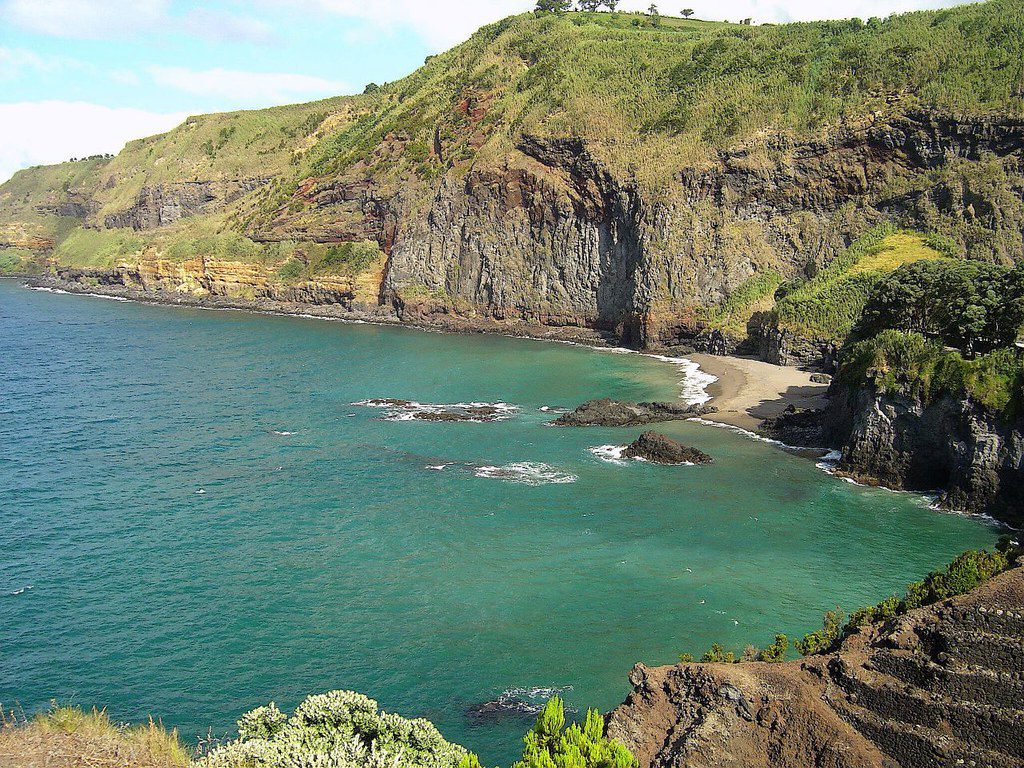
Praia da Baixa D’Areia, also known as Praia da Caloura, is on the opposite side of Caloura Harbor. Sheltered between ravines, in a slight indentation in the coast, this beach of wonderful sand receives many bathers yearly to enjoy sunbathing and a dip in the sea. A high staircase carved into the cliffs provides access to Praia da Caloura.
So if you like relatively small, secluded bathing areas with crystal-clear blue-green waters, soft white sand, and breathtaking views of the Atlantic Ocean, Praia da Caloura is a must-see destination. Praia da Baixa D’Areia has a large car park, changing rooms, and one of the best-equipped picnic areas in São Miguel.
This bathing area is well-known among water sports enthusiasts for its excellent snorkeling opportunities. The clear waters are home to a diverse array of marine life, including vibrant fish and octopuses. Additionally, volcanic rock naturally carves pools that invite visitors for a refreshing dip.
→ Related Post: Best beaches in the Azores. Read more!
Visit the Caloura Cultural Centre
The Caloura Cultural Centre is rich in art and culture, with roots in Azorean culture. Tomaz Borba Vieira created this museum space from his private collection, which has been open to the public since June 2005 in the Castle area of Fajã da Caloura.

Did you know
Tomaz Borba Vieira is a renowned painter, writer, and teacher from São Miguel who, over the course of many years, has amassed a remarkable collection of 20th-century Portuguese works of art.
This place offers an extensive collection of works of art by some of the most important names in the history of Portuguese art/painting from the last century, such as Cruzeiro Seixas, Eduardo Nery, and Paula Rego. The museum also highlights Azorean artists such as Canto da Maia, Domingos Rebelo, and Victor Camara.
Snorkeling at Arcos da Caloura
The Arcos da Caloura are rock formations and underwater caves 300 meters from the coast in a protected bay. At a depth of between 5 and 18 meters, they offer exceptional diving and snorkeling opportunities. The main attraction is the underwater life inside an impressive cave. Shoals of large groupers and other residents are common here, while various nudibranchs live on the ceiling. In the area surrounding the cave, marine life is diverse, including small species such as:
- Moray eels;
- Pufferfish (Sphoeroides marmoratus);
- Kingfish (Coris julis);
- Plaice (Bothus podas);
- Queenfish (Thalassoma pavo);
- Salema (Sarpa salpa);
- Chromis limbata;
- Red seabream (Sparisoma cretense);
- Groupers (Serranus atricauda);
- Among others.
Plan Your Visit to Caloura
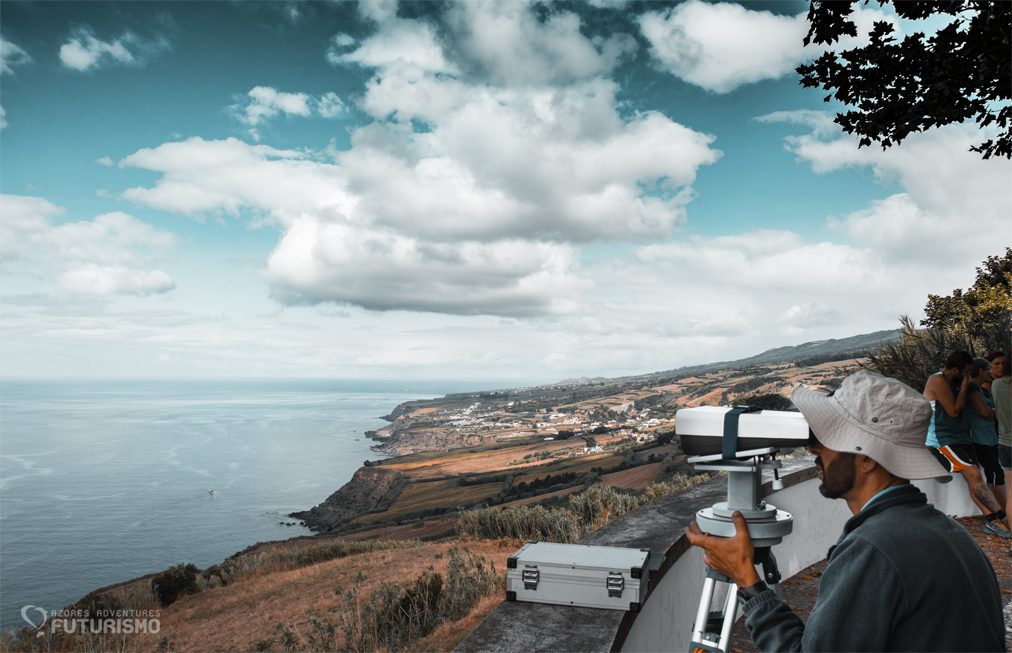
Best Time to Visit
Due to its location, São Miguel’s climate is mild, a result of various factors that contribute to its unparalleled botanical richness and scenic value. However, regardless of the season, temperatures remain relatively stable, varying between 16 °C in spring, 21 °C in summer, 18 °C in autumn, and 14 °C in winter.
However, despite all this, Caloura enjoys one of the best microclimates on the island because it sits on flat land at a low altitude. Caloura has less humidity and sunnier days, thanks to its geographical location, making it one of the islanders’ favorite spots for strolling and swimming.
Check all our articles about the weather in the Azores throughout the year 🌤️ ☔️: January | February | March | April | May | June | July | August | September | October | November | December
How to Get to Caloura
From Ponta Delgada, in the direction of the parish of Água de Pau, you will have to travel around 20 kilometers to reach the town of Caloura. You have several options for traveling to your destination: you can choose to travel by car/motorbike, taxi, public transport (bus), or bicycle.
Following the EN1-1A, the journey takes approximately:
- Car, motorbike, or taxi: 20 minutes.
- Bus: 38 minutes — although the journey on this form of transport takes only 38 minutes, you should allow an additional 35 minutes on foot. In other words, this journey takes a total of 1 hour and 13 minutes.
- Bicycle: 1 hour and 5 minutes.
You can make this journey on foot, but you should expect to spend approximately 4 hours and 15 minutes walking along the Estrada Regional do Pópulo.
Planning a trip to the Azores? These articles will help you: How to Get to the Azores 🗺️ | Azores airports 🛬 | Flights between islands ✈️ | Ferries between islands ⛴️ | Which island to choose? 🏝️ | What airlines fly to the Azores? 🛩️
Where to Eat
If you need somewhere to eat near Caloura, click here. In this link, you’ll find the 10 best restaurants on TripAdvisor.
Where to Stay
To make your life easier, we’ve filtered the search by:
Azores Guide Book
Azorean Language & Phrases 🗣️ | Currency & Banks 💵 | Credit Cards & Traveler’s Cheques 🏧 | Driving in the Azores 🚗 | Electricity 🔌 | Experiences & Tours 🗺️ | Health & Safety 🩺 | Internet & Wi-Fi Access 🛜 | Phones & Mobile Service 📞 | Post Offices & Buying Stamps ✉️ | Public Holidays 🏖️ | Shopping 🛒 | Time & Daylight 🕒 | Whale Watching Guide 🐳 | Best Island to Visit 🏞️
Nearby Attractions
Lagoa

Lagoa is where nature meets urban life, creating the perfect balance. Just a few minutes from the city, hidden trails are full of waterfalls, mystical volcanic lakes, and idyllic beaches. Numerous museums and traditional events will also satisfy culture and history enthusiasts.
Check all our articles about each one of the most relevant points of interest in Lagoa: Lagoa | Caloura | Água de Pau
Vila Franca do Campo
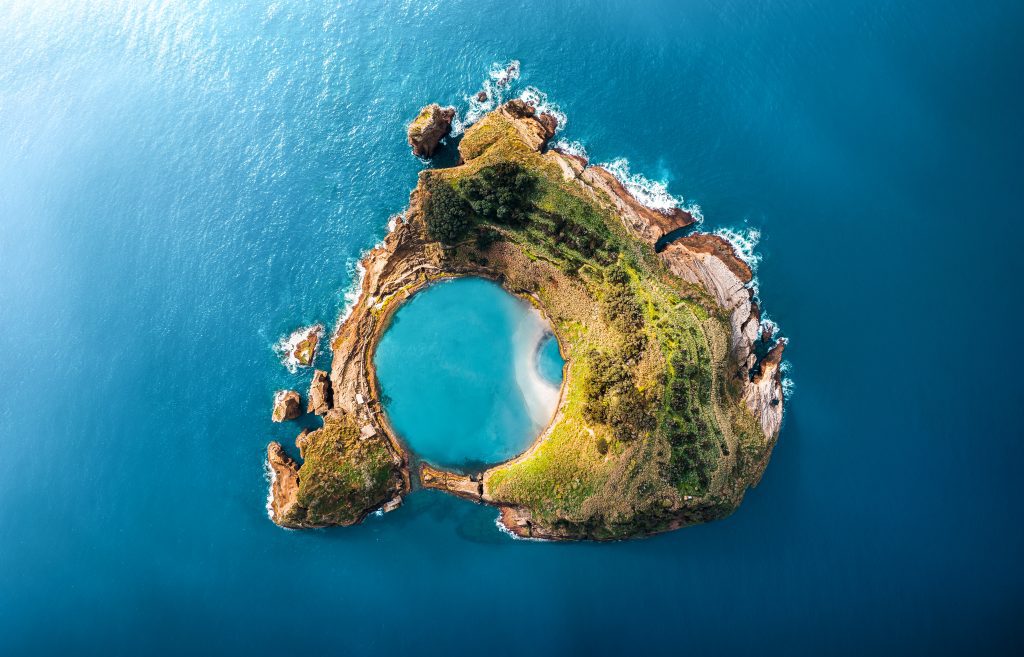
Vila Franca do Campo is a parish and municipality located south of São Miguel. Settlers built the town in the 15th century, shortly after discovering the Azorean archipelago. It served as the first capital of São Miguel for many years until a strong earthquake in 1522 destroyed it. Although residents rebuilt the town, Ponta Delgada became the island’s new capital. After this tragedy, locals rebuilt Vila Franca do Campo, and today, visitors can enjoy several unmissable tourist attractions when exploring the island.
Check all our articles about each one of the most relevant points of interest in Vila Franca do Campo: Vila Franca do Campo | Ermida de Nossa Senhora da Paz | Ilhéu de Vila Franca | Praia da Amora | Praia da Vinha da Areia | Praia de Água D’Alto | Lagoa do Congro | Lagoa dos Nenúfares | Miradouro do Castelo Branco
Complementary Information
Best Season to Visit the Azores
The Azores Archipelago boasts a unique climate that shapes its lush landscapes, making it a splendid year-round destination. With mild temperatures and minimal fluctuations, each season offers something unique. Spring averages 16 °C, summer reaches 21 °C, autumn cools to 18 °C, and winter remains mild at 14 °C.
→ For a detailed breakdown of the weather by month, check the following links 🌤️☔️: January | February | March | April | May | June | July | August | September | October | November | December
How to Get to the Azores
The Azorean Archipelago is easily accessible through numerous flight routes. Lisbon and Porto are the main entry points to the continent, with direct flights available to São Miguel (PDL), Terceira (TER), Faial (HOR), Pico (PIX), and Santa Maria (SMA). To find the best flight, use search engines like eDreams or Skyscanner. These platforms let you compare prices and schedules from multiple airlines in one convenient location.
For more details on how to get to the Azores, take a look at our complete guide. But what if you want to explore beyond your arrival island? We’ve got you covered!
- Azores airports 🛬
- Flights between islands ✈️
- Ferries between islands ⛴️
- Which island to choose? 🏝️
- What airlines fly to the Azores? 🛩️
→ Once you’ve found the perfect route, book your tickets and get ready to experience one of the world’s most stunning island groups!
Travel Essentials
Essential Information for your Azores trip: Azorean Language & Phrases 🗣️ | Currency & Banks 💵 | Credit Cards & Traveler’s Cheques 🏧 | Driving in the Azores 🚗 | Electricity 🔌 | Experiences & Tours 🗺️ | Health & Safety 🩺 | Internet & Wi-Fi Access 🛜 | Phones & Mobile Service 📞 | Post Offices & Buying Stamps ✉️ | Public Holidays 🏖️ | Shopping 🛒 | Time & Daylight 🕒 | Whale Watching Guide 🐳 | Best Island to Visit 🏞️
Useful Tools & Apps
The weather in the Azores can be variable, so it’s helpful to use some apps before visiting the islands. Spotazores provides live camera feeds from the main tourist attractions, allowing you to check the weather and plan your visit. For accurate weather predictions, use Windy or Windguru — they provide the most reliable predictions.
Video
Conclusion
Caloura is a friendly fishing village with a distinctive beauty that results from the uniqueness of its surrounding landscapes. It is the ideal place to enjoy walks by the sea with your family and friends.
In this sense, it is a destination for many holidaymakers seeking a place to rest and relax. You can also visit numerous natural tourist attractions and historical monuments. What are you waiting for to see this ex-libris of the island of São Miguel?

